-
301articlesSort byLatested
 Bladder cancer biomarkersOpen AccessReviewBladder cancer (BCa) is among the most frequently diagnosed urinary tract cancers, characterized by a high recurrence rate and significant clinical heterogeneity. Effective diagnosis and treatment o...Dominik Godlewski ... David AebisherPublished: March 25, 2025 Explor Target Antitumor Ther. DOI: 10.37349/etat.2025.1002301
Bladder cancer biomarkersOpen AccessReviewBladder cancer (BCa) is among the most frequently diagnosed urinary tract cancers, characterized by a high recurrence rate and significant clinical heterogeneity. Effective diagnosis and treatment o...Dominik Godlewski ... David AebisherPublished: March 25, 2025 Explor Target Antitumor Ther. DOI: 10.37349/etat.2025.1002301 A systematic review and meta-analysis of phase III randomized controlled trials to assess the risk of pneumonia, URTIs, and VTE in multiple myeloma patients treated with isatuximabOpen AccessMeta-AnalysisBackground: Multiple myeloma (MM) is a hematologic malignancy characterized by the clonal proliferation of malignant plasma cells in the bone marrow, constituting approximately 13% of all hematol...Daniel Thomas Jones ... Thura Win HtutPublished: March 19, 2025 Explor Target Antitumor Ther. DOI: 10.37349/etat.2025.1002300
A systematic review and meta-analysis of phase III randomized controlled trials to assess the risk of pneumonia, URTIs, and VTE in multiple myeloma patients treated with isatuximabOpen AccessMeta-AnalysisBackground: Multiple myeloma (MM) is a hematologic malignancy characterized by the clonal proliferation of malignant plasma cells in the bone marrow, constituting approximately 13% of all hematol...Daniel Thomas Jones ... Thura Win HtutPublished: March 19, 2025 Explor Target Antitumor Ther. DOI: 10.37349/etat.2025.1002300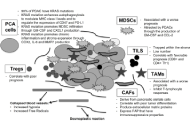 Pancreatic cancer: failures and hopes—a review of new promising treatment approachesOpen AccessReviewPancreatic cancer is a challenging disease with limited treatment options and a high mortality rate. Just few therapy advances have been made in recent years. Tumor microenvironment, immunosuppressi...Vittore Cereda, Mario Rosario D’AndreaPublished: March 18, 2025 Explor Target Antitumor Ther. DOI: 10.37349/etat.2025.1002299
Pancreatic cancer: failures and hopes—a review of new promising treatment approachesOpen AccessReviewPancreatic cancer is a challenging disease with limited treatment options and a high mortality rate. Just few therapy advances have been made in recent years. Tumor microenvironment, immunosuppressi...Vittore Cereda, Mario Rosario D’AndreaPublished: March 18, 2025 Explor Target Antitumor Ther. DOI: 10.37349/etat.2025.1002299 Overview on biomarkers for immune oncology drugsOpen AccessReviewAlthough immune checkpoint inhibitors (ICIs) are widely used in clinical oncology, less than half of treated cancer patients derive benefit from this therapy. Both tumor- and host-related variables ...Evgeny N. Imyanitov ... Natalia V. MitiushkinaPublished: March 17, 2025 Explor Target Antitumor Ther. DOI: 10.37349/etat.2025.1002298
Overview on biomarkers for immune oncology drugsOpen AccessReviewAlthough immune checkpoint inhibitors (ICIs) are widely used in clinical oncology, less than half of treated cancer patients derive benefit from this therapy. Both tumor- and host-related variables ...Evgeny N. Imyanitov ... Natalia V. MitiushkinaPublished: March 17, 2025 Explor Target Antitumor Ther. DOI: 10.37349/etat.2025.1002298 Metabolic mechanisms of immunotherapy resistanceOpen AccessReviewImmunotherapy has revolutionized cancer treatment, yet its efficacy is frequently compromised by metabolic mechanisms that drive resistance. Understanding how tumor metabolism shapes the immune micr...Luis Cabezón-Gutiérrez ... Vilma Pacheco-BarciaPublished: March 13, 2025 Explor Target Antitumor Ther. DOI: 10.37349/etat.2025.1002297
Metabolic mechanisms of immunotherapy resistanceOpen AccessReviewImmunotherapy has revolutionized cancer treatment, yet its efficacy is frequently compromised by metabolic mechanisms that drive resistance. Understanding how tumor metabolism shapes the immune micr...Luis Cabezón-Gutiérrez ... Vilma Pacheco-BarciaPublished: March 13, 2025 Explor Target Antitumor Ther. DOI: 10.37349/etat.2025.1002297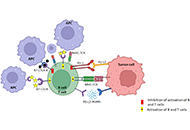 Immunotherapy in cervical cancer: an innovative approach for better treatment outcomesOpen AccessReviewCervical cancer remains a significant global health challenge, ranking as the fourth most common cancer among women. Persistent infection with high-risk human papillomavirus (HPV) is the primary eti...Treshita Dey, Sushma AgrawalPublished: March 02, 2025 Explor Target Antitumor Ther. DOI: 10.37349/etat.2025.1002296
Immunotherapy in cervical cancer: an innovative approach for better treatment outcomesOpen AccessReviewCervical cancer remains a significant global health challenge, ranking as the fourth most common cancer among women. Persistent infection with high-risk human papillomavirus (HPV) is the primary eti...Treshita Dey, Sushma AgrawalPublished: March 02, 2025 Explor Target Antitumor Ther. DOI: 10.37349/etat.2025.1002296 Genomic alterations in the WNT/β-catenin pathway and resistance of colorectal cancer cells to pathway-targeting therapiesOpen AccessOriginal ArticleAim: Colorectal cancer is the most prevalent gastrointestinal malignancy with limited therapeutic options in the metastatic setting. The WNT/β-catenin/adenomatous polyposis coli (APC) pathway is...Ioannis A. VoutsadakisPublished: February 25, 2025 Explor Target Antitumor Ther. DOI: 10.37349/etat.2025.1002295
Genomic alterations in the WNT/β-catenin pathway and resistance of colorectal cancer cells to pathway-targeting therapiesOpen AccessOriginal ArticleAim: Colorectal cancer is the most prevalent gastrointestinal malignancy with limited therapeutic options in the metastatic setting. The WNT/β-catenin/adenomatous polyposis coli (APC) pathway is...Ioannis A. VoutsadakisPublished: February 25, 2025 Explor Target Antitumor Ther. DOI: 10.37349/etat.2025.1002295 Unmasking the potential: mechanisms of neuroinflammatory modulation by oncolytic viruses in glioblastomaOpen AccessReviewGlioblastoma, an aggressive and lethal brain tumor, presents enormous clinical challenges, including molecular heterogeneity, high recurrence rates, resistance to conventional therapies, and limited...Narimene Beder ... Mehdi TotonchiPublished: February 24, 2025 Explor Target Antitumor Ther. DOI: 10.37349/etat.2025.1002294
Unmasking the potential: mechanisms of neuroinflammatory modulation by oncolytic viruses in glioblastomaOpen AccessReviewGlioblastoma, an aggressive and lethal brain tumor, presents enormous clinical challenges, including molecular heterogeneity, high recurrence rates, resistance to conventional therapies, and limited...Narimene Beder ... Mehdi TotonchiPublished: February 24, 2025 Explor Target Antitumor Ther. DOI: 10.37349/etat.2025.1002294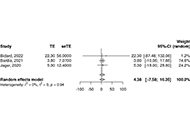 Elacestrant in hormone receptor-positive metastatic breast cancer: a post-hoc analysisOpen AccessMeta-AnalysisBackground: Breast cancer is a leading cause of mortality in women. Hormone therapy plays a crucial role in treatment of hormone receptor-positive metastatic breast cancer. Elacestrant is a selective estrogen receptor degrader (SERD) that has shown promise in early-phase clinical trials. This post-hoc analysis systematically evaluates elacestrant’s effectiveness in hormone receptor-positive metastatic breast cancer patients, providing insights into its efficacy, safety, and potential advantages over existing treatments. Methods: We adhered to the PRISMA Statement 2020 guidelines and systematically searched the databases PubMed/MEDLINE, ClinicalTrials.gov, Web of Science, and Embase. We conducted the post-hoc analysis using R software (V 4.3.3), applying the inverse variance method and the DerSimonian-Laird estimator to pool effect estimates with a random-effects model. We assessed heterogeneity using the Cochran’s Q test and the I2 statistic. Results: Our post-hoc analysis encompassed 3 clinical trials and a total of 835 participants. The mean age of all 835 participants across the three trials was 59.5 years (95% CI: 58.7–60.3). The pooled progression-free survival (PFS)—was estimated at 4.38 (95% CI: –7.58–16.35, P = 0.47), and the pooled objective response rate (ORR) was 7% (95% CI: 2–18%, P = 0.04), with significant heterogeneity observed among the studies. Discussion: Elacestrant shows promise for improving outcomes in hormone receptor-positive metastatic breast cancer, but further research is needed to confirm its effectiveness. Future studies should include larger sample sizes, comprehensive phase II and III trials, and investigation of elacestrant in combination with other drugs or in preoperative settings. ...Azza Sarfraz ... Khadija CheemaPublished: February 20, 2025 Explor Target Antitumor Ther. DOI: 10.37349/etat.2025.1002293
Elacestrant in hormone receptor-positive metastatic breast cancer: a post-hoc analysisOpen AccessMeta-AnalysisBackground: Breast cancer is a leading cause of mortality in women. Hormone therapy plays a crucial role in treatment of hormone receptor-positive metastatic breast cancer. Elacestrant is a selective estrogen receptor degrader (SERD) that has shown promise in early-phase clinical trials. This post-hoc analysis systematically evaluates elacestrant’s effectiveness in hormone receptor-positive metastatic breast cancer patients, providing insights into its efficacy, safety, and potential advantages over existing treatments. Methods: We adhered to the PRISMA Statement 2020 guidelines and systematically searched the databases PubMed/MEDLINE, ClinicalTrials.gov, Web of Science, and Embase. We conducted the post-hoc analysis using R software (V 4.3.3), applying the inverse variance method and the DerSimonian-Laird estimator to pool effect estimates with a random-effects model. We assessed heterogeneity using the Cochran’s Q test and the I2 statistic. Results: Our post-hoc analysis encompassed 3 clinical trials and a total of 835 participants. The mean age of all 835 participants across the three trials was 59.5 years (95% CI: 58.7–60.3). The pooled progression-free survival (PFS)—was estimated at 4.38 (95% CI: –7.58–16.35, P = 0.47), and the pooled objective response rate (ORR) was 7% (95% CI: 2–18%, P = 0.04), with significant heterogeneity observed among the studies. Discussion: Elacestrant shows promise for improving outcomes in hormone receptor-positive metastatic breast cancer, but further research is needed to confirm its effectiveness. Future studies should include larger sample sizes, comprehensive phase II and III trials, and investigation of elacestrant in combination with other drugs or in preoperative settings. ...Azza Sarfraz ... Khadija CheemaPublished: February 20, 2025 Explor Target Antitumor Ther. DOI: 10.37349/etat.2025.1002293 Releasing the brakes: the role of immune checkpoint inhibitors in laryngeal cancerOpen AccessReviewLaryngeal cancer, a subtype of head and neck cancer, poses significant challenges due to its profound impact on essential functions such as speech and swallowing and poor survival rates in advanced ...Michail Athanasopoulos ... Nicholas S. MastronikolisPublished: February 17, 2025 Explor Target Antitumor Ther. DOI: 10.37349/etat.2025.1002292
Releasing the brakes: the role of immune checkpoint inhibitors in laryngeal cancerOpen AccessReviewLaryngeal cancer, a subtype of head and neck cancer, poses significant challenges due to its profound impact on essential functions such as speech and swallowing and poor survival rates in advanced ...Michail Athanasopoulos ... Nicholas S. MastronikolisPublished: February 17, 2025 Explor Target Antitumor Ther. DOI: 10.37349/etat.2025.1002292 Shorter telomere length as a prognostic marker for survival and recurrence in breast cancer: a systematic review and meta-analysisOpen AccessMeta-AnalysisBackground: Telomere length is a potential prognostic biomarker in breast cancer, but its clinical utility remains uncertain due to inconsistent findings across the literature. This systematic re...Dhyas Munandar Arya Sasmita ... Sumadi Lukman AnwarPublished: February 13, 2025 Explor Target Antitumor Ther. DOI: 10.37349/etat.2025.1002289
Shorter telomere length as a prognostic marker for survival and recurrence in breast cancer: a systematic review and meta-analysisOpen AccessMeta-AnalysisBackground: Telomere length is a potential prognostic biomarker in breast cancer, but its clinical utility remains uncertain due to inconsistent findings across the literature. This systematic re...Dhyas Munandar Arya Sasmita ... Sumadi Lukman AnwarPublished: February 13, 2025 Explor Target Antitumor Ther. DOI: 10.37349/etat.2025.1002289 Non-targeted effects of stereotactic radiotherapy: a review of the evidence coming from the clinical fieldOpen AccessSystematic ReviewBackground: Preclinical animal studies have demonstrated that radiation treatment (RT) can induce effects beyond the anatomical site of irradiation. Non-targeted effects of RT (NTER) have been sp...Angela Barillaro ... Roberto PacelliPublished: February 13, 2025 Explor Target Antitumor Ther. DOI: 10.37349/etat.2025.1002290
Non-targeted effects of stereotactic radiotherapy: a review of the evidence coming from the clinical fieldOpen AccessSystematic ReviewBackground: Preclinical animal studies have demonstrated that radiation treatment (RT) can induce effects beyond the anatomical site of irradiation. Non-targeted effects of RT (NTER) have been sp...Angela Barillaro ... Roberto PacelliPublished: February 13, 2025 Explor Target Antitumor Ther. DOI: 10.37349/etat.2025.1002290 Multikinase and highly selective kinase inhibitors in the neoadjuvant treatment of patients with thyroid cancerOpen AccessReviewMultikinase inhibitors (MKIs) and highly selective tyrosine kinase inhibitors (HS-TKIs) positively impact the progression-free survival (PFS) of locally advanced and metastatic thyroid cancer cases....Laura Valerio, Antonio MatronePublished: February 13, 2025 Explor Target Antitumor Ther. DOI: 10.37349/etat.2025.1002291
Multikinase and highly selective kinase inhibitors in the neoadjuvant treatment of patients with thyroid cancerOpen AccessReviewMultikinase inhibitors (MKIs) and highly selective tyrosine kinase inhibitors (HS-TKIs) positively impact the progression-free survival (PFS) of locally advanced and metastatic thyroid cancer cases....Laura Valerio, Antonio MatronePublished: February 13, 2025 Explor Target Antitumor Ther. DOI: 10.37349/etat.2025.1002291 Neoantigen immunotherapy: a novel treatment for bladder cancerOpen AccessReviewBladder cancer is currently the most common malignant tumor of the urinary system. The traditional treatment methods for bladder cancer are mainly surgery, chemotherapy, radiotherapy, and targeted t...Ruiyang Lv ... Xuejian WangPublished: January 26, 2025 Explor Target Antitumor Ther. DOI: 10.37349/etat.2025.1002288
Neoantigen immunotherapy: a novel treatment for bladder cancerOpen AccessReviewBladder cancer is currently the most common malignant tumor of the urinary system. The traditional treatment methods for bladder cancer are mainly surgery, chemotherapy, radiotherapy, and targeted t...Ruiyang Lv ... Xuejian WangPublished: January 26, 2025 Explor Target Antitumor Ther. DOI: 10.37349/etat.2025.1002288 Concomitant exposure to benzodiazepines during pembrolizumab-based therapy for advanced non-small-cell lung cancer: a propensity-score matched analysis of monitoring agency dataOpen AccessOriginal ArticleAim: The interaction of concomitant benzodiazepine (BZD) exposure during immune checkpoint blockade has not been comprehensively investigated to date. This research aimed to determine the influen...Fabrizio Nelli ... Agnese FabbriPublished: January 20, 2025 Explor Target Antitumor Ther. DOI: 10.37349/etat.2025.1002287
Concomitant exposure to benzodiazepines during pembrolizumab-based therapy for advanced non-small-cell lung cancer: a propensity-score matched analysis of monitoring agency dataOpen AccessOriginal ArticleAim: The interaction of concomitant benzodiazepine (BZD) exposure during immune checkpoint blockade has not been comprehensively investigated to date. This research aimed to determine the influen...Fabrizio Nelli ... Agnese FabbriPublished: January 20, 2025 Explor Target Antitumor Ther. DOI: 10.37349/etat.2025.1002287 Implications of noncoding RNAs for cancer therapy: Are we aiming at the right targets?Open AccessPerspectiveThe discovery of oncogenes and tumor suppressor genes led to a better understanding of tumorigenesis, and prompted the development of molecularly targeted therapy. Over the past 30 years, many new d...Amil ShahPublished: January 16, 2025 Explor Target Antitumor Ther. DOI: 10.37349/etat.2025.1002286
Implications of noncoding RNAs for cancer therapy: Are we aiming at the right targets?Open AccessPerspectiveThe discovery of oncogenes and tumor suppressor genes led to a better understanding of tumorigenesis, and prompted the development of molecularly targeted therapy. Over the past 30 years, many new d...Amil ShahPublished: January 16, 2025 Explor Target Antitumor Ther. DOI: 10.37349/etat.2025.1002286 Assessment of lipid peroxidation and total antioxidant capacity in patients with breast cancerOpen AccessOriginal ArticleAim: Breast cancer (BC), a disease in which abnormal breast cells grow out of control and form tumors, is a prevalent life-threatening disease worldwide. Oxidative stress has been implicated in t...Abdullatif Taha Babakr, Mohamed Mahmoud Nour EldeinPublished: January 02, 2025 Explor Target Antitumor Ther. DOI: 10.37349/etat.2025.1002284
Assessment of lipid peroxidation and total antioxidant capacity in patients with breast cancerOpen AccessOriginal ArticleAim: Breast cancer (BC), a disease in which abnormal breast cells grow out of control and form tumors, is a prevalent life-threatening disease worldwide. Oxidative stress has been implicated in t...Abdullatif Taha Babakr, Mohamed Mahmoud Nour EldeinPublished: January 02, 2025 Explor Target Antitumor Ther. DOI: 10.37349/etat.2025.1002284 Herbal based nanoparticles as a possible and potential treatment of cancer: a reviewOpen AccessReviewCancer is the greatest cause of mortality worldwide. Various drug classes treat various cancers. Nanoformulations made from natural sources are being studied for treating several diseases, including...Roshan Yadav ... Tejpal YadavPublished: January 03, 2025 Explor Target Antitumor Ther. DOI: 10.37349/etat.2025.1002285
Herbal based nanoparticles as a possible and potential treatment of cancer: a reviewOpen AccessReviewCancer is the greatest cause of mortality worldwide. Various drug classes treat various cancers. Nanoformulations made from natural sources are being studied for treating several diseases, including...Roshan Yadav ... Tejpal YadavPublished: January 03, 2025 Explor Target Antitumor Ther. DOI: 10.37349/etat.2025.1002285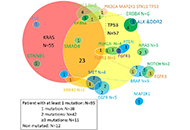 Analysis of the benefit of anti-PD-1 monotherapy according to NGS-diagnosed genetic alterations in patients with non-small cell lung cancerOpen AccessOriginal ArticleAim: Immune checkpoint inhibitors improved the survival of advanced non-small cell lung cancer. However, only 20% of patients respond to these treatments and the search for predictive biomarkers ...Hortense De Saint Basile ... Elizabeth FabrePublished: December 18, 2024 Explor Target Antitumor Ther. DOI: 10.37349/etat.2024.00283
Analysis of the benefit of anti-PD-1 monotherapy according to NGS-diagnosed genetic alterations in patients with non-small cell lung cancerOpen AccessOriginal ArticleAim: Immune checkpoint inhibitors improved the survival of advanced non-small cell lung cancer. However, only 20% of patients respond to these treatments and the search for predictive biomarkers ...Hortense De Saint Basile ... Elizabeth FabrePublished: December 18, 2024 Explor Target Antitumor Ther. DOI: 10.37349/etat.2024.00283 Nigerian medicinal plants with potential anticancer activity—a reviewOpen AccessReviewDespite the fact that life expectancies are increasing and the burden of infectious diseases is decreasing, global cancer incidence rates are on the rise. Cancer outcome metrics are dismal for low- ...Mansurah A. Abdulazeez ... Amos A. FatokunPublished: December 09, 2024 Explor Target Antitumor Ther. DOI: 10.37349/etat.2024.00282
Nigerian medicinal plants with potential anticancer activity—a reviewOpen AccessReviewDespite the fact that life expectancies are increasing and the burden of infectious diseases is decreasing, global cancer incidence rates are on the rise. Cancer outcome metrics are dismal for low- ...Mansurah A. Abdulazeez ... Amos A. FatokunPublished: December 09, 2024 Explor Target Antitumor Ther. DOI: 10.37349/etat.2024.00282 Curative immunotherapy-based strategies for non-metastatic non-small cell lung cancerOpen AccessReviewThe emergence of immunotherapy has ushered in a new era in the management of non-small cell lung cancer (NSCLC). Various immune check point inhibitors have demonstrated significant benefit in the ma...Justin J. Kuhlman ... Yujie ZhaoPublished: December 06, 2024 Explor Target Antitumor Ther. DOI: 10.37349/etat.2024.00281
Curative immunotherapy-based strategies for non-metastatic non-small cell lung cancerOpen AccessReviewThe emergence of immunotherapy has ushered in a new era in the management of non-small cell lung cancer (NSCLC). Various immune check point inhibitors have demonstrated significant benefit in the ma...Justin J. Kuhlman ... Yujie ZhaoPublished: December 06, 2024 Explor Target Antitumor Ther. DOI: 10.37349/etat.2024.00281 The promises and perils of circulating tumor DNA for monitoring immunotherapy response in non-small cell lung cancerOpen AccessPerspectiveThere has been a rapid expansion of immunotherapy options for non-small cell lung cancer (NSCLC) over the past two decades, particularly with the advent of immune checkpoint inhibitors. Despite the ...Brandon Joseph Hebert, James BradleyPublished: November 26, 2024 Explor Target Antitumor Ther. DOI: 10.37349/etat.2024.00280
The promises and perils of circulating tumor DNA for monitoring immunotherapy response in non-small cell lung cancerOpen AccessPerspectiveThere has been a rapid expansion of immunotherapy options for non-small cell lung cancer (NSCLC) over the past two decades, particularly with the advent of immune checkpoint inhibitors. Despite the ...Brandon Joseph Hebert, James BradleyPublished: November 26, 2024 Explor Target Antitumor Ther. DOI: 10.37349/etat.2024.00280 Targeted therapies and molecular targets in the therapeutic landscape of advanced urothelial carcinoma: state of the art and future perspectivesOpen AccessReviewAdvanced urothelial carcinoma (aUC) has a dismal prognosis, with a 5-year survival rate of approximately 10%. Platinum-based chemotherapy has been the backbone of the first-line treatment of aUC for...Irene Testi ... Ursula VoglPublished: November 21, 2024 Explor Target Antitumor Ther. DOI: 10.37349/etat.2024.00279
Targeted therapies and molecular targets in the therapeutic landscape of advanced urothelial carcinoma: state of the art and future perspectivesOpen AccessReviewAdvanced urothelial carcinoma (aUC) has a dismal prognosis, with a 5-year survival rate of approximately 10%. Platinum-based chemotherapy has been the backbone of the first-line treatment of aUC for...Irene Testi ... Ursula VoglPublished: November 21, 2024 Explor Target Antitumor Ther. DOI: 10.37349/etat.2024.00279 Predictive and prognostic biomarkers in cancer: towards the precision medicine eraOpen AccessEditorialStefano Marletta ... Luca FalzonePublished: November 20, 2024 Explor Target Antitumor Ther. DOI: 10.37349/etat.2024.00278
Predictive and prognostic biomarkers in cancer: towards the precision medicine eraOpen AccessEditorialStefano Marletta ... Luca FalzonePublished: November 20, 2024 Explor Target Antitumor Ther. DOI: 10.37349/etat.2024.00278 Preliminary evaluation of FAPI-04-PET/CT for differentiating recurrence and post-treatment changes in high-grade gliomasOpen AccessShort CommunicationFibroblast-activated protein (FAP) expression in glial cells is attributed to FAP-positive foci on tumor vessels and neoplastic cells. Preclinical and pilot studies have shown FAP expression in high...Indraja D. Dev ... Archi AgrawalPublished: October 31, 2024 Explor Target Antitumor Ther. DOI: 10.37349/etat.2024.00276
Preliminary evaluation of FAPI-04-PET/CT for differentiating recurrence and post-treatment changes in high-grade gliomasOpen AccessShort CommunicationFibroblast-activated protein (FAP) expression in glial cells is attributed to FAP-positive foci on tumor vessels and neoplastic cells. Preclinical and pilot studies have shown FAP expression in high...Indraja D. Dev ... Archi AgrawalPublished: October 31, 2024 Explor Target Antitumor Ther. DOI: 10.37349/etat.2024.00276 Addressing the unmet need in NSCLC progression with advances in second-line therapeuticsOpen AccessReviewLung cancer is the leading cause of cancer mortality globally, with non-small cell lung cancer (NSCLC) accounting for 85% of cases. Despite advancements in first-line treatments such as immunotherap...Kinsley Wang ... Robert HsuPublished: November 1, 2024 Explor Target Antitumor Ther. DOI: 10.37349/etat.2024.00277
Addressing the unmet need in NSCLC progression with advances in second-line therapeuticsOpen AccessReviewLung cancer is the leading cause of cancer mortality globally, with non-small cell lung cancer (NSCLC) accounting for 85% of cases. Despite advancements in first-line treatments such as immunotherap...Kinsley Wang ... Robert HsuPublished: November 1, 2024 Explor Target Antitumor Ther. DOI: 10.37349/etat.2024.00277 Upper tract urothelial cancer (UTUC) genomic profiling and correlation regarding benefit of platinum-based chemotherapyOpen AccessCase ReportUpper tract urothelial cancer (UTUC) are rare subsets of urothelial cancer, which typically present with more aggressive course. Molecular markers stratifying urothelial tumors as luminal subtype an...Min Woo Hwang ... Jeanny B. Aragon-ChingPublished: October 17, 2024 Explor Target Antitumor Ther. DOI: 10.37349/etat.2024.00274
Upper tract urothelial cancer (UTUC) genomic profiling and correlation regarding benefit of platinum-based chemotherapyOpen AccessCase ReportUpper tract urothelial cancer (UTUC) are rare subsets of urothelial cancer, which typically present with more aggressive course. Molecular markers stratifying urothelial tumors as luminal subtype an...Min Woo Hwang ... Jeanny B. Aragon-ChingPublished: October 17, 2024 Explor Target Antitumor Ther. DOI: 10.37349/etat.2024.00274 Predictive markers of response to immune checkpoint inhibitor rechallenge in metastatic non-small cell lung cancerOpen AccessOriginal ArticleAim: The present study aims to evaluate the efficacy of rechallenge with immune checkpoint inhibitors (ICIs) compared to chemotherapy and the predictive role of clinical parameters in non-small c...Aram A. Musaelyan ... Sergey V. OrlovPublished: October 18, 2024 Explor Target Antitumor Ther. DOI: 10.37349/etat.2024.00275
Predictive markers of response to immune checkpoint inhibitor rechallenge in metastatic non-small cell lung cancerOpen AccessOriginal ArticleAim: The present study aims to evaluate the efficacy of rechallenge with immune checkpoint inhibitors (ICIs) compared to chemotherapy and the predictive role of clinical parameters in non-small c...Aram A. Musaelyan ... Sergey V. OrlovPublished: October 18, 2024 Explor Target Antitumor Ther. DOI: 10.37349/etat.2024.00275 Exploring the therapeutic potential of lipid-based nanoparticles in the management of oral squamous cell carcinomaOpen AccessReviewOral squamous cell carcinoma (OSCC) is a highly malignant and invasive tumor with significant mortality and morbidity. Current treatment modalities such as surgery, radiotherapy, and chemotherapy en...Anis Ahmad Chaudhary ... Md. RizwanullahPublished: September 29, 2024 Explor Target Antitumor Ther. DOI: 10.37349/etat.2024.00272
Exploring the therapeutic potential of lipid-based nanoparticles in the management of oral squamous cell carcinomaOpen AccessReviewOral squamous cell carcinoma (OSCC) is a highly malignant and invasive tumor with significant mortality and morbidity. Current treatment modalities such as surgery, radiotherapy, and chemotherapy en...Anis Ahmad Chaudhary ... Md. RizwanullahPublished: September 29, 2024 Explor Target Antitumor Ther. DOI: 10.37349/etat.2024.00272 Evidence for the evolving role of neoadjuvant and perioperative immunotherapy in resectable non-small cell lung cancerOpen AccessReviewThe treatment of early-stage non-small cell lung cancer (NSCLC) is becoming increasingly complex. Standard of care management for the past decade has been adjuvant chemotherapy following curative in...Thomas Hansen ... Udit NindraPublished: September 29, 2024 Explor Target Antitumor Ther. DOI: 10.37349/etat.2024.00273
Evidence for the evolving role of neoadjuvant and perioperative immunotherapy in resectable non-small cell lung cancerOpen AccessReviewThe treatment of early-stage non-small cell lung cancer (NSCLC) is becoming increasingly complex. Standard of care management for the past decade has been adjuvant chemotherapy following curative in...Thomas Hansen ... Udit NindraPublished: September 29, 2024 Explor Target Antitumor Ther. DOI: 10.37349/etat.2024.00273 Diagnostic and prognostic role of NLR in testicular cancerOpen AccessSystematic ReviewBackground: To summarize the results of available studies for investigating the role of neutrophil to lymphocyte ratio (NLR) in testicular cancer (tCa). Methods: The search was conducted on...Shirin Sarejloo ... Brandon Lucke-WoldPublished: September 19, 2024 Explor Target Antitumor Ther. DOI: 10.37349/etat.2024.00270
Diagnostic and prognostic role of NLR in testicular cancerOpen AccessSystematic ReviewBackground: To summarize the results of available studies for investigating the role of neutrophil to lymphocyte ratio (NLR) in testicular cancer (tCa). Methods: The search was conducted on...Shirin Sarejloo ... Brandon Lucke-WoldPublished: September 19, 2024 Explor Target Antitumor Ther. DOI: 10.37349/etat.2024.00270 Blood-based circulating biomarkers for prediction of immune-checkpoint inhibitors efficacy in renal cell carcinomaOpen AccessReviewImmune checkpoint inhibitors (ICI)-based combinations have become the standard first-line treatment for advanced clear cell renal cell carcinoma (ccRCC). Despite significant improvements in survival...Loubna Omri ... Lucía Carril-AjuriaPublished: September 20, 2024 Explor Target Antitumor Ther. DOI: 10.37349/etat.2024.00271
Blood-based circulating biomarkers for prediction of immune-checkpoint inhibitors efficacy in renal cell carcinomaOpen AccessReviewImmune checkpoint inhibitors (ICI)-based combinations have become the standard first-line treatment for advanced clear cell renal cell carcinoma (ccRCC). Despite significant improvements in survival...Loubna Omri ... Lucía Carril-AjuriaPublished: September 20, 2024 Explor Target Antitumor Ther. DOI: 10.37349/etat.2024.00271 Diagnostic utility of prostate health index density prior to MRI-ultrasound fusion targeted biopsyOpen AccessOriginal ArticleAim: Prostate biopsy can be prone to complications and thus should be avoided when unnecessary. Although the combination of magnetic resonance imaging (MRI), the prostate health index (PHI), and ...Benjamin H. Press ... Preston C. SprenklePublished: September 13, 2024 Explor Target Antitumor Ther. DOI: 10.37349/etat.2024.00269
Diagnostic utility of prostate health index density prior to MRI-ultrasound fusion targeted biopsyOpen AccessOriginal ArticleAim: Prostate biopsy can be prone to complications and thus should be avoided when unnecessary. Although the combination of magnetic resonance imaging (MRI), the prostate health index (PHI), and ...Benjamin H. Press ... Preston C. SprenklePublished: September 13, 2024 Explor Target Antitumor Ther. DOI: 10.37349/etat.2024.00269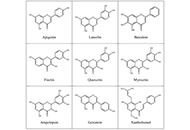 GPCRs as targets for flavonoids in cancer cells: new options for interventionOpen AccessReviewFor a long time, the family of receptor tyrosine kinases, including epidermal growth factor receptor and insulin-like growth factor 1 receptor, was regarded as the main players stimulating cell prol...Katrin SakPublished: August 30, 2024 Explor Target Antitumor Ther. DOI: 10.37349/etat.2024.00268
GPCRs as targets for flavonoids in cancer cells: new options for interventionOpen AccessReviewFor a long time, the family of receptor tyrosine kinases, including epidermal growth factor receptor and insulin-like growth factor 1 receptor, was regarded as the main players stimulating cell prol...Katrin SakPublished: August 30, 2024 Explor Target Antitumor Ther. DOI: 10.37349/etat.2024.00268 Emerging molecular therapies in the treatment of bladder cancerOpen AccessReviewBladder cancer is a leading cancer type in men. The complexity of treatment in late-stage bladder cancer after systemic spread through the lymphatic system highlights the importance of modulating di...Scott D. Bell ... Yujiang FangPublished: August 29, 2024 Explor Target Antitumor Ther. DOI: 10.37349/etat.2024.00267
Emerging molecular therapies in the treatment of bladder cancerOpen AccessReviewBladder cancer is a leading cancer type in men. The complexity of treatment in late-stage bladder cancer after systemic spread through the lymphatic system highlights the importance of modulating di...Scott D. Bell ... Yujiang FangPublished: August 29, 2024 Explor Target Antitumor Ther. DOI: 10.37349/etat.2024.00267 Therapy resistance in prostate cancer: mechanism, signaling and reversal strategiesOpen AccessReviewProstate cancer (PC) depicts a major health challenge all over the globe due to its complexities in the treatment and diverse clinical trajectories. Even in the advances in the modern treatment stra...Neha Thakur ... Sunny DholpuriaPublished: August 29, 2024 Explor Target Antitumor Ther. DOI: 10.37349/etat.2024.00266
Therapy resistance in prostate cancer: mechanism, signaling and reversal strategiesOpen AccessReviewProstate cancer (PC) depicts a major health challenge all over the globe due to its complexities in the treatment and diverse clinical trajectories. Even in the advances in the modern treatment stra...Neha Thakur ... Sunny DholpuriaPublished: August 29, 2024 Explor Target Antitumor Ther. DOI: 10.37349/etat.2024.00266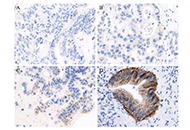 Evaluation of HER2 immunohistochemistry expression in non-standard solid tumors from a Single-Institution Prospective CohortOpen AccessOriginal ArticleAim: Human epidermal growth factor receptor-2 (HER2) is a well-established prognostic and predictive biomarker. It is an FDA-approved therapeutic target for HER2 positive breast, gastroesophageal...Saurav Verma ... Daniel BreadnerPublished: August 22, 2024 Explor Target Antitumor Ther. DOI: 10.37349/etat.2024.00265
Evaluation of HER2 immunohistochemistry expression in non-standard solid tumors from a Single-Institution Prospective CohortOpen AccessOriginal ArticleAim: Human epidermal growth factor receptor-2 (HER2) is a well-established prognostic and predictive biomarker. It is an FDA-approved therapeutic target for HER2 positive breast, gastroesophageal...Saurav Verma ... Daniel BreadnerPublished: August 22, 2024 Explor Target Antitumor Ther. DOI: 10.37349/etat.2024.00265 Anticancer peptides as novel immunomodulatory therapeutic candidates for cancer treatmentOpen AccessReviewCancer remains a concern after years of research in this field. Conventional therapies such as chemotherapy, radiation, and surgery are available for cancer treatment, but they are characterized by ...Apurva Sood ... Anuradha SharmaPublished: August 21, 2024 Explor Target Antitumor Ther. DOI: 10.37349/etat.2024.00264
Anticancer peptides as novel immunomodulatory therapeutic candidates for cancer treatmentOpen AccessReviewCancer remains a concern after years of research in this field. Conventional therapies such as chemotherapy, radiation, and surgery are available for cancer treatment, but they are characterized by ...Apurva Sood ... Anuradha SharmaPublished: August 21, 2024 Explor Target Antitumor Ther. DOI: 10.37349/etat.2024.00264 Harnessing endoscopic ultrasound-guided radiofrequency ablation to reshape the pancreatic ductal adenocarcinoma microenvironment and elicit systemic immunomodulationOpen AccessReviewPancreatic ductal adenocarcinoma (PDAC) is characterized by poor prognostics and substantial therapeutic challenges, with dismal survival rates. Tumor resistance in PDAC is primarily attributed to i...Vishali Moond ... Nirav C. ThosaniPublished: August 15, 2024 Explor Target Antitumor Ther. DOI: 10.37349/etat.2024.00263
Harnessing endoscopic ultrasound-guided radiofrequency ablation to reshape the pancreatic ductal adenocarcinoma microenvironment and elicit systemic immunomodulationOpen AccessReviewPancreatic ductal adenocarcinoma (PDAC) is characterized by poor prognostics and substantial therapeutic challenges, with dismal survival rates. Tumor resistance in PDAC is primarily attributed to i...Vishali Moond ... Nirav C. ThosaniPublished: August 15, 2024 Explor Target Antitumor Ther. DOI: 10.37349/etat.2024.00263 Hematopoietic and leukemic stem cells homeostasis: the role of bone marrow nicheOpen AccessReviewThe bone marrow microenvironment (BMM) has highly specialized anatomical characteristics that provide a sanctuary place for hematopoietic stem cells (HSCs) that allow appropriate proliferation, main...Shaimaa Khattab ... Pier Paolo PiccalugaPublished: August 15, 2024 Explor Target Antitumor Ther. DOI: 10.37349/etat.2024.00262
Hematopoietic and leukemic stem cells homeostasis: the role of bone marrow nicheOpen AccessReviewThe bone marrow microenvironment (BMM) has highly specialized anatomical characteristics that provide a sanctuary place for hematopoietic stem cells (HSCs) that allow appropriate proliferation, main...Shaimaa Khattab ... Pier Paolo PiccalugaPublished: August 15, 2024 Explor Target Antitumor Ther. DOI: 10.37349/etat.2024.00262 Prospects for breast cancer immunotherapy using microRNAs and transposable elements as objectsOpen AccessReviewOne of the directions in treatment of chemoresistant breast cancer (BC) may include new methods of activating the immune response against tumor cells. Clinically used checkpoint inhibition using ant...Rustam Nailevich MustafinPublished: August 06, 2024 Explor Target Antitumor Ther. DOI: 10.37349/etat.2024.00261
Prospects for breast cancer immunotherapy using microRNAs and transposable elements as objectsOpen AccessReviewOne of the directions in treatment of chemoresistant breast cancer (BC) may include new methods of activating the immune response against tumor cells. Clinically used checkpoint inhibition using ant...Rustam Nailevich MustafinPublished: August 06, 2024 Explor Target Antitumor Ther. DOI: 10.37349/etat.2024.00261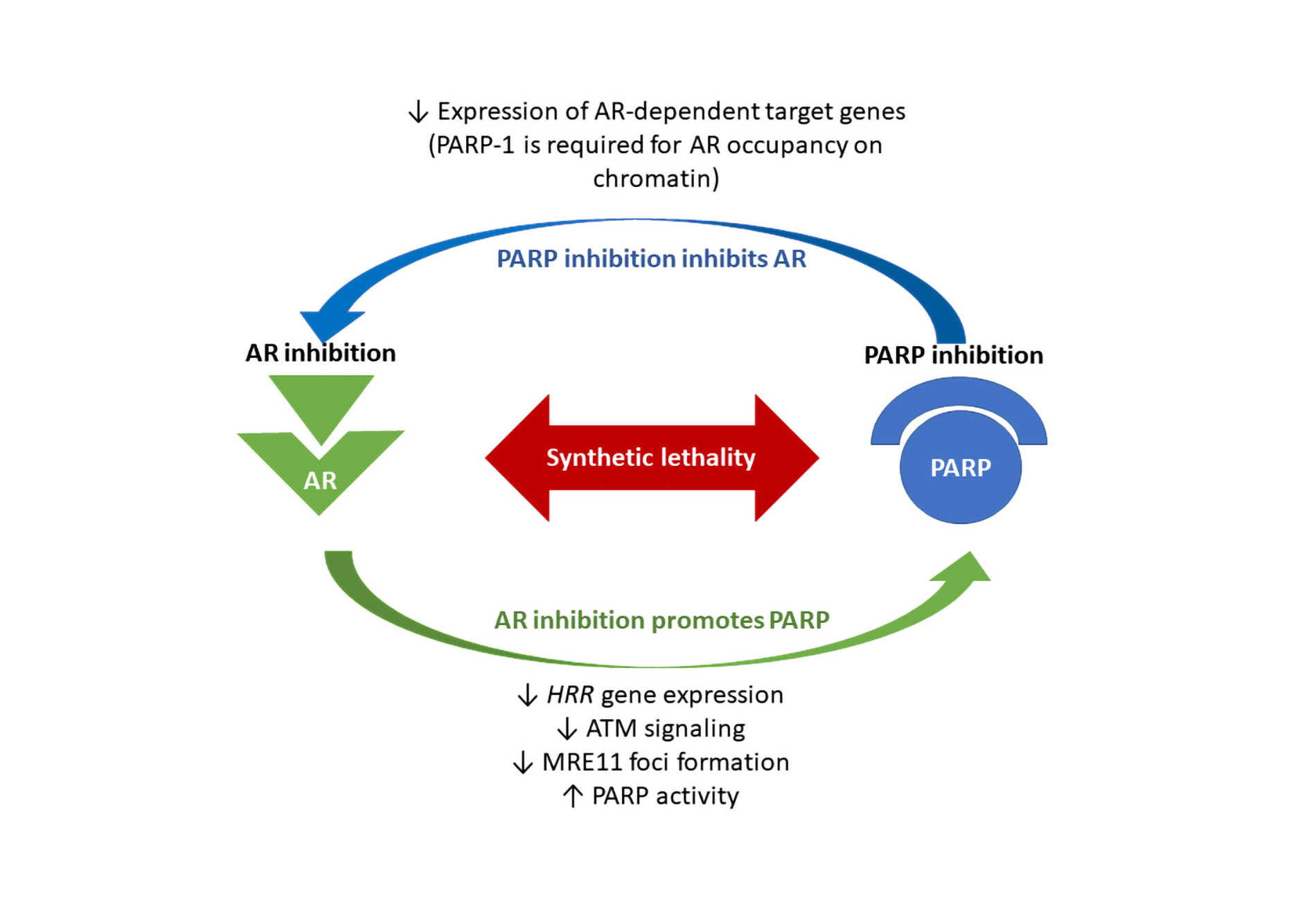 Combination of the PARPi and ARSi in advanced castration resistant prostate cancer: a review of the recent phase III trialsOpen AccessReviewTumors with an impaired ability to repair DNA double-strand breaks by homologous recombination, including those with alterations in breast cancer 1 and 2 (BRCA1 and BRCA2) genes, are very sensitive ...Martina Panebianco ... Mario Rosario D’AndreaPublished: August 02, 2024 Explor Target Antitumor Ther. DOI: 10.37349/etat.2024.00260
Combination of the PARPi and ARSi in advanced castration resistant prostate cancer: a review of the recent phase III trialsOpen AccessReviewTumors with an impaired ability to repair DNA double-strand breaks by homologous recombination, including those with alterations in breast cancer 1 and 2 (BRCA1 and BRCA2) genes, are very sensitive ...Martina Panebianco ... Mario Rosario D’AndreaPublished: August 02, 2024 Explor Target Antitumor Ther. DOI: 10.37349/etat.2024.00260 Risk factors for Gleason score upgrade from prostate biopsy to radical prostatectomyOpen AccessReviewAccurate identification of prostate cancer Gleason grade group remains an important component of the initial management of clinically localized disease. However, Gleason score upgrading (GSU) from b...Shayan Smani ... Michael S. LeapmanPublished: July 30, 2024 Explor Target Antitumor Ther. DOI: 10.37349/etat.2024.00259
Risk factors for Gleason score upgrade from prostate biopsy to radical prostatectomyOpen AccessReviewAccurate identification of prostate cancer Gleason grade group remains an important component of the initial management of clinically localized disease. However, Gleason score upgrading (GSU) from b...Shayan Smani ... Michael S. LeapmanPublished: July 30, 2024 Explor Target Antitumor Ther. DOI: 10.37349/etat.2024.00259 The rapidly changing treatment landscape of first-line advanced urothelial cancer (aUC) or metastatic urothelial cancer (mUC)Open AccessCommentaryThe landscape of treatment for first-line therapy in advanced urothelial cancer (aUC) and metastatic urothelial cancer (mUC) has rapidly changed in the last year alone. Maintenance avelumab remains ...Minira Aslanova ... Jeanny B. Aragon-ChingPublished: July 29, 2024 Explor Target Antitumor Ther. DOI: 10.37349/etat.2024.00258
The rapidly changing treatment landscape of first-line advanced urothelial cancer (aUC) or metastatic urothelial cancer (mUC)Open AccessCommentaryThe landscape of treatment for first-line therapy in advanced urothelial cancer (aUC) and metastatic urothelial cancer (mUC) has rapidly changed in the last year alone. Maintenance avelumab remains ...Minira Aslanova ... Jeanny B. Aragon-ChingPublished: July 29, 2024 Explor Target Antitumor Ther. DOI: 10.37349/etat.2024.00258 A narrative review on perioperative systemic therapy in non-small cell lung cancerOpen AccessReviewNon-small cell lung cancer (NSCLC) that is operable still carries a high risk of recurrence, approaching 50% of all operable cases despite adding adjuvant chemotherapy. However, the utilization of i...Robert Hsu ... David J. BenjaminPublished: July 26, 2024 Explor Target Antitumor Ther. DOI: 10.37349/etat.2024.00256
A narrative review on perioperative systemic therapy in non-small cell lung cancerOpen AccessReviewNon-small cell lung cancer (NSCLC) that is operable still carries a high risk of recurrence, approaching 50% of all operable cases despite adding adjuvant chemotherapy. However, the utilization of i...Robert Hsu ... David J. BenjaminPublished: July 26, 2024 Explor Target Antitumor Ther. DOI: 10.37349/etat.2024.00256 Hepatobiliary complications of immune checkpoint inhibitors in cancerOpen AccessReviewImmune checkpoint inhibitors (ICIs) have dramatically changed the landscape of cancer therapy. Over the last decade, both their primary focus in trials and clinical application have exponentially ri...Donna Zhuang ... Stephen RiordanPublished: July 26, 2024 Explor Target Antitumor Ther. DOI: 10.37349/etat.2024.00257
Hepatobiliary complications of immune checkpoint inhibitors in cancerOpen AccessReviewImmune checkpoint inhibitors (ICIs) have dramatically changed the landscape of cancer therapy. Over the last decade, both their primary focus in trials and clinical application have exponentially ri...Donna Zhuang ... Stephen RiordanPublished: July 26, 2024 Explor Target Antitumor Ther. DOI: 10.37349/etat.2024.00257 Therapy-induced senescence in breast cancer: an overviewOpen AccessReviewOutcomes for women with breast cancer have improved dramatically in recent decades. However, many patients present with intrinsic drug resistance and others are initially sensitive to anti-cancer dr...Suraj Narayanan Chembukavu, Andrew J LindsayPublished: July 25, 2024 Explor Target Antitumor Ther. DOI: 10.37349/etat.2024.00254
Therapy-induced senescence in breast cancer: an overviewOpen AccessReviewOutcomes for women with breast cancer have improved dramatically in recent decades. However, many patients present with intrinsic drug resistance and others are initially sensitive to anti-cancer dr...Suraj Narayanan Chembukavu, Andrew J LindsayPublished: July 25, 2024 Explor Target Antitumor Ther. DOI: 10.37349/etat.2024.00254 Oligometastatic esophageal cancer cured by systemic therapy combined with radiotherapy to primary tumor and metastasis (metastasis-directed therapy)—small case seriesOpen AccessCase ReportThe prognosis of metastatic esophageal cancer (EC) remains poor with an average life expectancy of around 9–12 months with standard systemic chemotherapy. The concept of oligometastatic disease (O...Mohan Hingorani, Hannah StubleyPublished: July 26, 2024 Explor Target Antitumor Ther. DOI: 10.37349/etat.2024.00255
Oligometastatic esophageal cancer cured by systemic therapy combined with radiotherapy to primary tumor and metastasis (metastasis-directed therapy)—small case seriesOpen AccessCase ReportThe prognosis of metastatic esophageal cancer (EC) remains poor with an average life expectancy of around 9–12 months with standard systemic chemotherapy. The concept of oligometastatic disease (O...Mohan Hingorani, Hannah StubleyPublished: July 26, 2024 Explor Target Antitumor Ther. DOI: 10.37349/etat.2024.00255 The genomic and molecular landscape of splenic marginal zone lymphoma, biological and clinical implicationsOpen AccessReviewSplenic marginal zone lymphoma (SMZL) is a rare, predominantly indolent B-cell lymphoma constituting fewer than 2% of lymphoid neoplasms. However, around 30% of patients have...Amatta Mirandari ... Jonathan C. StreffordPublished: July 23, 2024 Explor Target Antitumor Ther. DOI: 10.37349/etat.2024.00253
The genomic and molecular landscape of splenic marginal zone lymphoma, biological and clinical implicationsOpen AccessReviewSplenic marginal zone lymphoma (SMZL) is a rare, predominantly indolent B-cell lymphoma constituting fewer than 2% of lymphoid neoplasms. However, around 30% of patients have...Amatta Mirandari ... Jonathan C. StreffordPublished: July 23, 2024 Explor Target Antitumor Ther. DOI: 10.37349/etat.2024.00253 Regulatory RNAs: role as scaffolds assembling protein complexes and their epigenetic deregulationOpen AccessReviewOver the last decade, immune checkpoint inhibitors (ICIs) have dramatically improved the systemic treatment of multiple solid tumour types. However, they can also induce inflammation in an extensive...Palmiro PoltronieriPublished: July 22, 2024 Explor Target Antitumor Ther. DOI: 10.37349/etat.2024.00252
Regulatory RNAs: role as scaffolds assembling protein complexes and their epigenetic deregulationOpen AccessReviewOver the last decade, immune checkpoint inhibitors (ICIs) have dramatically improved the systemic treatment of multiple solid tumour types. However, they can also induce inflammation in an extensive...Palmiro PoltronieriPublished: July 22, 2024 Explor Target Antitumor Ther. DOI: 10.37349/etat.2024.00252 Immune checkpoint inhibitor-induced cholangitis—a three-case seriesOpen AccessCase ReportOver the last decade, immune checkpoint inhibitors (ICIs) have dramatically improved the systemic treatment of multiple solid tumour types. However, they can also induce inflammation in an extensive range of normal tissues types. ...Simon Gray ... Anna Olsson-BrownPublished: July 19, 2024 Explor Target Antitumor Ther. DOI: 10.37349/etat.2024.00250
Immune checkpoint inhibitor-induced cholangitis—a three-case seriesOpen AccessCase ReportOver the last decade, immune checkpoint inhibitors (ICIs) have dramatically improved the systemic treatment of multiple solid tumour types. However, they can also induce inflammation in an extensive range of normal tissues types. ...Simon Gray ... Anna Olsson-BrownPublished: July 19, 2024 Explor Target Antitumor Ther. DOI: 10.37349/etat.2024.00250 It might be a dead end: immune checkpoint inhibitor therapy in EGFR-mutated NSCLCOpen AccessReviewDespite innovative advances in molecular targeted therapy, treatment strategies using immune checkpoint inhibitors (ICIs) for epidermal growth factor receptor (EGFR)-mutant non-small cell lung cancer...Ken Akao ... Kazuyoshi ImaizumiPublished: July 19, 2024 Explor Target Antitumor Ther. DOI: 10.37349/etat.2024.00251
It might be a dead end: immune checkpoint inhibitor therapy in EGFR-mutated NSCLCOpen AccessReviewDespite innovative advances in molecular targeted therapy, treatment strategies using immune checkpoint inhibitors (ICIs) for epidermal growth factor receptor (EGFR)-mutant non-small cell lung cancer...Ken Akao ... Kazuyoshi ImaizumiPublished: July 19, 2024 Explor Target Antitumor Ther. DOI: 10.37349/etat.2024.00251 Immunopeptidomics in the cancer immunotherapy eraOpen AccessReviewCancer is the primary cause of death worldwide, and conventional treatments are painful, complicated, and have negative effects on healthy cells. However, cancer immunotherapy has emerged as a promi...Sutatip Pongcharoen ... Supachai TopanurakPublished: July 17, 2024 Explor Target Antitumor Ther. DOI: 10.37349/etat.2024.00249
Immunopeptidomics in the cancer immunotherapy eraOpen AccessReviewCancer is the primary cause of death worldwide, and conventional treatments are painful, complicated, and have negative effects on healthy cells. However, cancer immunotherapy has emerged as a promi...Sutatip Pongcharoen ... Supachai TopanurakPublished: July 17, 2024 Explor Target Antitumor Ther. DOI: 10.37349/etat.2024.00249 Correction: Deep learning based automated epidermal growth factor receptor and anaplastic lymphoma kinase status prediction of brain metastasis in non-small cell lung cancerOpen AccessCorrectionAbhishek Mahajan ... Kumar PrabhashPublished: July 08, 2024 Explor Target Antitumor Ther. DOI: 10.37349/etat.2024.00248
Correction: Deep learning based automated epidermal growth factor receptor and anaplastic lymphoma kinase status prediction of brain metastasis in non-small cell lung cancerOpen AccessCorrectionAbhishek Mahajan ... Kumar PrabhashPublished: July 08, 2024 Explor Target Antitumor Ther. DOI: 10.37349/etat.2024.00248 Response to trametinib, hydroxychloroquine, and bevacizumab in a young woman with NRAS-mutated metastatic intrahepatic cholangiocarcinoma: a case reportOpen AccessCase ReportSystemic chemotherapy is the main treatment option for patients with advanced intrahepatic cholangiocarcinoma (iCCA), however, its efficacy is limited. Herein, we report a young patient with NRAS-mu...Aram A. Musaelyan ... Sergey V. OrlovPublished: June 28, 2024 Explor Target Antitumor Ther. DOI: 10.37349/etat.2024.00246
Response to trametinib, hydroxychloroquine, and bevacizumab in a young woman with NRAS-mutated metastatic intrahepatic cholangiocarcinoma: a case reportOpen AccessCase ReportSystemic chemotherapy is the main treatment option for patients with advanced intrahepatic cholangiocarcinoma (iCCA), however, its efficacy is limited. Herein, we report a young patient with NRAS-mu...Aram A. Musaelyan ... Sergey V. OrlovPublished: June 28, 2024 Explor Target Antitumor Ther. DOI: 10.37349/etat.2024.00246 Selected meeting abstracts of 2nd International Conference on Contemporary OncologyOpen AccessMeeting AbstractsChouaib SalemPublished: June 28, 2024 Explor Target Antitumor Ther. DOI: 10.37349/etat.2024.00247
Selected meeting abstracts of 2nd International Conference on Contemporary OncologyOpen AccessMeeting AbstractsChouaib SalemPublished: June 28, 2024 Explor Target Antitumor Ther. DOI: 10.37349/etat.2024.00247 Current status of molecular diagnostics for lung cancerOpen AccessReviewThe management of lung cancer (LC) requires the analysis of a diverse spectrum of molecular targets, including kinase activating mutations in EGFR, ERBB2 (HER2), BRAF and MET oncogenes,...Evgeny N. Imyanitov ... Sergey V. OrlovPublished: June 27, 2024 Explor Target Antitumor Ther. DOI: 10.37349/etat.2024.00244
Current status of molecular diagnostics for lung cancerOpen AccessReviewThe management of lung cancer (LC) requires the analysis of a diverse spectrum of molecular targets, including kinase activating mutations in EGFR, ERBB2 (HER2), BRAF and MET oncogenes,...Evgeny N. Imyanitov ... Sergey V. OrlovPublished: June 27, 2024 Explor Target Antitumor Ther. DOI: 10.37349/etat.2024.00244 Antibody-drug conjugates combinations in cancer treatmentOpen AccessReviewAntibody-drug conjugates (ADCs) have emerged as a promising class of anticancer agents. Currently, the Food and Drug Administration has granted approval to 12 compounds, with 2 later undergoing with...Giulia Pretelli ... Anastasios StathisPublished: June 27, 2024 Explor Target Antitumor Ther. DOI: 10.37349/etat.2024.00243
Antibody-drug conjugates combinations in cancer treatmentOpen AccessReviewAntibody-drug conjugates (ADCs) have emerged as a promising class of anticancer agents. Currently, the Food and Drug Administration has granted approval to 12 compounds, with 2 later undergoing with...Giulia Pretelli ... Anastasios StathisPublished: June 27, 2024 Explor Target Antitumor Ther. DOI: 10.37349/etat.2024.00243 Imaging of supratentorial ependymomas with radio-pathological correlationOpen AccessOriginal ArticleAim: Supratentorial ependymoma (STE) is a rare tumor with distinct genetic alterations, whose imaging features have been scarcely studied. This study aims to review the computed tomography (CT) a...Arpita Sahu ... Epari SridharPublished: June 27, 2024 Explor Target Antitumor Ther. DOI: 10.37349/etat.2024.00245
Imaging of supratentorial ependymomas with radio-pathological correlationOpen AccessOriginal ArticleAim: Supratentorial ependymoma (STE) is a rare tumor with distinct genetic alterations, whose imaging features have been scarcely studied. This study aims to review the computed tomography (CT) a...Arpita Sahu ... Epari SridharPublished: June 27, 2024 Explor Target Antitumor Ther. DOI: 10.37349/etat.2024.00245 Promising immunotherapeutic approaches for primary effusion lymphomaOpen AccessReviewPrimary effusion lymphoma (PEL) is a large B-cell neoplasm usually presenting as a serious effusion in body cavities without detectable tumor masses. It is an AIDS-related non-Hodgkin’s lymphoma (...Jutatip Panaampon, Seiji OkadaPublished: June 26, 2024 Explor Target Antitumor Ther. DOI: 10.37349/etat.2024.00242
Promising immunotherapeutic approaches for primary effusion lymphomaOpen AccessReviewPrimary effusion lymphoma (PEL) is a large B-cell neoplasm usually presenting as a serious effusion in body cavities without detectable tumor masses. It is an AIDS-related non-Hodgkin’s lymphoma (...Jutatip Panaampon, Seiji OkadaPublished: June 26, 2024 Explor Target Antitumor Ther. DOI: 10.37349/etat.2024.00242 DNA damage targeted therapy for advanced breast cancerOpen AccessReviewBreast cancer (BC) is the most prevalent malignancy affecting women worldwide, including Portugal. While the majority of BC cases are sporadic, hereditary forms account for 5-10% of cases. The most ...Vanessa Patel ... Luís CostaPublished: June 25, 2024 Explor Target Antitumor Ther. DOI: 10.37349/etat.2024.00241
DNA damage targeted therapy for advanced breast cancerOpen AccessReviewBreast cancer (BC) is the most prevalent malignancy affecting women worldwide, including Portugal. While the majority of BC cases are sporadic, hereditary forms account for 5-10% of cases. The most ...Vanessa Patel ... Luís CostaPublished: June 25, 2024 Explor Target Antitumor Ther. DOI: 10.37349/etat.2024.00241 Landscape of targeted therapies for advanced urothelial carcinomaOpen AccessReviewBladder cancer (BC) is the tenth most common malignancy globally. Urothelial carcinoma (UC) is a major type of BC, and advanced UC (aUC) is associated with poor clinical outcomes and limited surviva...Shihao Shang ... Zheng ZhuPublished: June 21, 2024 Explor Target Antitumor Ther. DOI: 10.37349/etat.2024.00240
Landscape of targeted therapies for advanced urothelial carcinomaOpen AccessReviewBladder cancer (BC) is the tenth most common malignancy globally. Urothelial carcinoma (UC) is a major type of BC, and advanced UC (aUC) is associated with poor clinical outcomes and limited surviva...Shihao Shang ... Zheng ZhuPublished: June 21, 2024 Explor Target Antitumor Ther. DOI: 10.37349/etat.2024.00240 Clinical relevance of circulating tumor DNA in ovarian cancer: current issues and future opportunitiesOpen AccessReviewOvarian cancer (OC) is the most lethal gynecologic malignancy worldwide. Due to the lack of effective screening and early detection strategies, many patients with OC are diagnosed with advanced dise...Elena Trevisi ... Ilaria ColomboPublished: June 19, 2024 Explor Target Antitumor Ther. DOI: 10.37349/etat.2024.00239
Clinical relevance of circulating tumor DNA in ovarian cancer: current issues and future opportunitiesOpen AccessReviewOvarian cancer (OC) is the most lethal gynecologic malignancy worldwide. Due to the lack of effective screening and early detection strategies, many patients with OC are diagnosed with advanced dise...Elena Trevisi ... Ilaria ColomboPublished: June 19, 2024 Explor Target Antitumor Ther. DOI: 10.37349/etat.2024.00239 Evaluation of antitumor potential of an anti-glypican-1 monoclonal antibody in preclinical lung cancer models reveals a distinct mechanism of actionOpen AccessOriginal ArticleAim: The main objective of this study was to investigate the antitumor effect of a mouse anti-human glypican-1 (GPC1) monoclonal antibody (mAb) on non-small cell lung carcinoma (NSCLC) and associ...Minghua Li ... Qingyu ZhouPublished: June 17, 2024 Explor Target Antitumor Ther. DOI: 10.37349/etat.2024.00238
Evaluation of antitumor potential of an anti-glypican-1 monoclonal antibody in preclinical lung cancer models reveals a distinct mechanism of actionOpen AccessOriginal ArticleAim: The main objective of this study was to investigate the antitumor effect of a mouse anti-human glypican-1 (GPC1) monoclonal antibody (mAb) on non-small cell lung carcinoma (NSCLC) and associ...Minghua Li ... Qingyu ZhouPublished: June 17, 2024 Explor Target Antitumor Ther. DOI: 10.37349/etat.2024.00238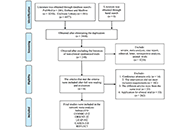 Anti-PD-1/L1 antibody plus anti-VEGF antibody vs. plus VEGFR-targeted TKI as first-line therapy for unresectable hepatocellular carcinoma: a network meta-analysisOpen AccessMeta-AnalysisBackground: This article is based on our previous research, which was presented at the 2023 ASCO Annual Meeting I and published in Journal of Clinical Oncology as Conference Abstract (JCO. 2023;4...Yiwen Zhou ... Jieer YingPublished: June 17, 2024 Explor Target Antitumor Ther. DOI: 10.37349/etat.2024.00236
Anti-PD-1/L1 antibody plus anti-VEGF antibody vs. plus VEGFR-targeted TKI as first-line therapy for unresectable hepatocellular carcinoma: a network meta-analysisOpen AccessMeta-AnalysisBackground: This article is based on our previous research, which was presented at the 2023 ASCO Annual Meeting I and published in Journal of Clinical Oncology as Conference Abstract (JCO. 2023;4...Yiwen Zhou ... Jieer YingPublished: June 17, 2024 Explor Target Antitumor Ther. DOI: 10.37349/etat.2024.00236 Comparison of primary and passaged tumor cell cultures and their application in personalized medicineOpen AccessReviewPassaged cell lines represent currently an integral component in various studies of malignant neoplasms. These cell lines are utilized for drug screening both in monolayer cultures or as part of thr...Vladislava V. Pipiya ... Valeriya V. SolovyevaPublished: June 17, 2024 Explor Target Antitumor Ther. DOI: 10.37349/etat.2024.00237
Comparison of primary and passaged tumor cell cultures and their application in personalized medicineOpen AccessReviewPassaged cell lines represent currently an integral component in various studies of malignant neoplasms. These cell lines are utilized for drug screening both in monolayer cultures or as part of thr...Vladislava V. Pipiya ... Valeriya V. SolovyevaPublished: June 17, 2024 Explor Target Antitumor Ther. DOI: 10.37349/etat.2024.00237 Evaluation of molecular effects associated with apoptosis, tumour progression, angiogenesis and metastasis by a novel combination of drugs with ormeloxifene in triple negative breast cancer cellsOpen AccessOriginal ArticleAim: To investigate the molecular effects of a novel combination [sertraline and plumbagin (comb) with ormeloxifene (Orm)] for anticancer activity in triple negative breast cancer cell line “MD...Shehna Sharaf ... Lakshmi SPublished: June 11, 2024 Explor Target Antitumor Ther. DOI: 10.37349/etat.2024.00235
Evaluation of molecular effects associated with apoptosis, tumour progression, angiogenesis and metastasis by a novel combination of drugs with ormeloxifene in triple negative breast cancer cellsOpen AccessOriginal ArticleAim: To investigate the molecular effects of a novel combination [sertraline and plumbagin (comb) with ormeloxifene (Orm)] for anticancer activity in triple negative breast cancer cell line “MD...Shehna Sharaf ... Lakshmi SPublished: June 11, 2024 Explor Target Antitumor Ther. DOI: 10.37349/etat.2024.00235 Chemotherapy related changes in cfDNA levels in squamous non-small cell lung cancer: correlation with symptom scores and radiological responsesOpen AccessOriginal ArticleAim: There is limited data on prognostic value of baseline plasma cell free DNA (cfDNA) in advanced squamous non-small cell lung cancer (sq-NSCLC). This prospective observational study aimed to a...Nithiyanandan Ravi ... Navneet SinghPublished: May 28, 2024 Explor Target Antitumor Ther. DOI: 10.37349/etat.2024.00232
Chemotherapy related changes in cfDNA levels in squamous non-small cell lung cancer: correlation with symptom scores and radiological responsesOpen AccessOriginal ArticleAim: There is limited data on prognostic value of baseline plasma cell free DNA (cfDNA) in advanced squamous non-small cell lung cancer (sq-NSCLC). This prospective observational study aimed to a...Nithiyanandan Ravi ... Navneet SinghPublished: May 28, 2024 Explor Target Antitumor Ther. DOI: 10.37349/etat.2024.00232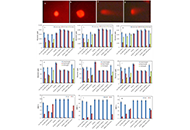 Cadmium nanocluster as a safe nanocarrier: biodistribution in BALB/c mice and application to carry crocin to breast cancer cell linesOpen AccessOriginal ArticleAim: Metal nanoclusters are emerging nanomaterials applicable for drug delivery. Here, the toxicity and oxidative stress induction of divalent cationic cadmium (Cd2+) was compared with a Cd in th...Moslem Jafarisani ... S. Zahra BathaiePublished: May 28, 2024 Explor Target Antitumor Ther. DOI: 10.37349/etat.2024.00233
Cadmium nanocluster as a safe nanocarrier: biodistribution in BALB/c mice and application to carry crocin to breast cancer cell linesOpen AccessOriginal ArticleAim: Metal nanoclusters are emerging nanomaterials applicable for drug delivery. Here, the toxicity and oxidative stress induction of divalent cationic cadmium (Cd2+) was compared with a Cd in th...Moslem Jafarisani ... S. Zahra BathaiePublished: May 28, 2024 Explor Target Antitumor Ther. DOI: 10.37349/etat.2024.00233 Practical implications of androgen receptor inhibitors for prostate cancer treatmentOpen AccessPerspectiveAntiandrogens have been used for the treatment of prostate cancer as a single agent or in combination with hormone deprivation therapy. New generation antiandrogens act like androgen receptor inhibi...Fabio Campodonico ... Carlo IntroiniPublished: May 28, 2024 Explor Target Antitumor Ther. DOI: 10.37349/etat.2024.00234
Practical implications of androgen receptor inhibitors for prostate cancer treatmentOpen AccessPerspectiveAntiandrogens have been used for the treatment of prostate cancer as a single agent or in combination with hormone deprivation therapy. New generation antiandrogens act like androgen receptor inhibi...Fabio Campodonico ... Carlo IntroiniPublished: May 28, 2024 Explor Target Antitumor Ther. DOI: 10.37349/etat.2024.00234 Advancements and recent explorations of anti-cancer activity of chrysin: from molecular targets to therapeutic perspectiveOpen AccessReviewIn recent times, there have been notable advancements in comprehending the potential anti-cancer effects of chrysin (CH), a naturally occurring flavonoid compound found abundantly in various plant s...Abhilasha Sood ... Manoj KumarPublished: May 23, 2024 Explor Target Antitumor Ther. DOI: 10.37349/etat.2024.00230
Advancements and recent explorations of anti-cancer activity of chrysin: from molecular targets to therapeutic perspectiveOpen AccessReviewIn recent times, there have been notable advancements in comprehending the potential anti-cancer effects of chrysin (CH), a naturally occurring flavonoid compound found abundantly in various plant s...Abhilasha Sood ... Manoj KumarPublished: May 23, 2024 Explor Target Antitumor Ther. DOI: 10.37349/etat.2024.00230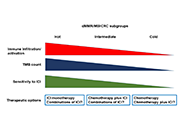 Resistance to immune checkpoint inhibitors in colorectal cancer with deficient mismatch repair/microsatellite instability: misdiagnosis, pseudoprogression and/or tumor heterogeneity?Open AccessPerspectiveColorectal carcinoma (CRC) with deficiency of the deficient mismatch repair (dMMR) pathway/ microsatellite instability (MSI) is characterized by a high mutation load and infiltration of immune cells...Nicola Normanno ... Carmine PintoPublished: May 23, 2024 Explor Target Antitumor Ther. DOI: 10.37349/etat.2024.00231
Resistance to immune checkpoint inhibitors in colorectal cancer with deficient mismatch repair/microsatellite instability: misdiagnosis, pseudoprogression and/or tumor heterogeneity?Open AccessPerspectiveColorectal carcinoma (CRC) with deficiency of the deficient mismatch repair (dMMR) pathway/ microsatellite instability (MSI) is characterized by a high mutation load and infiltration of immune cells...Nicola Normanno ... Carmine PintoPublished: May 23, 2024 Explor Target Antitumor Ther. DOI: 10.37349/etat.2024.00231 Immunotherapy in thymic epithelial tumors: tissue predictive biomarkers for immune checkpoint inhibitorsOpen AccessPerspectiveThymic epithelial tumors (TETs) are rare malignant neoplasms arising in the thymus gland. Nevertheless, TETs, including thymomas (TMs), thymic carcinomas (TCs), and thymic neuroendocrine neoplasms (...Stefano Lucà ... Renato FrancoPublished: May 21, 2024 Explor Target Antitumor Ther. DOI: 10.37349/etat.2024.00229
Immunotherapy in thymic epithelial tumors: tissue predictive biomarkers for immune checkpoint inhibitorsOpen AccessPerspectiveThymic epithelial tumors (TETs) are rare malignant neoplasms arising in the thymus gland. Nevertheless, TETs, including thymomas (TMs), thymic carcinomas (TCs), and thymic neuroendocrine neoplasms (...Stefano Lucà ... Renato FrancoPublished: May 21, 2024 Explor Target Antitumor Ther. DOI: 10.37349/etat.2024.00229 Management of oligometastatic and oligoprogressive epidermal growth factor receptor mutated non-small cell lung cancer patients: state of the art of a combined approachOpen AccessReviewRecently, the development of targeted therapy approaches such as those based on tyrosine kinase inhibitor (TKI) greatly improved the clinical outcomes of patients affected by oncogene addicted advan...Francesca Di Pressa ... Alessio BruniPublished: May 17, 2024 Explor Target Antitumor Ther. DOI: 10.37349/etat.2024.00228
Management of oligometastatic and oligoprogressive epidermal growth factor receptor mutated non-small cell lung cancer patients: state of the art of a combined approachOpen AccessReviewRecently, the development of targeted therapy approaches such as those based on tyrosine kinase inhibitor (TKI) greatly improved the clinical outcomes of patients affected by oncogene addicted advan...Francesca Di Pressa ... Alessio BruniPublished: May 17, 2024 Explor Target Antitumor Ther. DOI: 10.37349/etat.2024.00228 Tri-specific killer engager: unleashing multi-synergic power against cancerOpen AccessReviewCancer continues to be a global health concern, necessitating innovative solutions for treatment. Tri-specific killer engagers (TriKEs) have emerged as a promising class of immunotherapeutic agents,...Peeranut Winidmanokul ... Seiji OkadaPublished: April 25, 2024 Explor Target Antitumor Ther. DOI: 10.37349/etat.2024.00227
Tri-specific killer engager: unleashing multi-synergic power against cancerOpen AccessReviewCancer continues to be a global health concern, necessitating innovative solutions for treatment. Tri-specific killer engagers (TriKEs) have emerged as a promising class of immunotherapeutic agents,...Peeranut Winidmanokul ... Seiji OkadaPublished: April 25, 2024 Explor Target Antitumor Ther. DOI: 10.37349/etat.2024.00227 Spheroids and organoids derived from colorectal cancer as tools for in vitro drug screeningOpen AccessReviewColorectal cancer (CRC) is a heterogeneous disease. Conventional two-dimensional (2D) culture employing cell lines was developed to study the molecular properties of CRC in vitro. Although these cel...Sahira Syamimi Ahmad Zawawi ... Marahaini MusaPublished: April 25, 2024 Explor Target Antitumor Ther. DOI: 10.37349/etat.2024.00226
Spheroids and organoids derived from colorectal cancer as tools for in vitro drug screeningOpen AccessReviewColorectal cancer (CRC) is a heterogeneous disease. Conventional two-dimensional (2D) culture employing cell lines was developed to study the molecular properties of CRC in vitro. Although these cel...Sahira Syamimi Ahmad Zawawi ... Marahaini MusaPublished: April 25, 2024 Explor Target Antitumor Ther. DOI: 10.37349/etat.2024.00226 Magnetite nanoparticles: an emerging adjunctive tool for the improvement of cancer immunotherapyOpen AccessReviewCancer immunotherapy has emerged as a groundbreaking field, offering promising and transformative tools for oncological research and treatment. However, it faces several limitations, including varia...Phoomipat Jungcharoen ... Charupong SaengboonmeePublished: April 23, 2024 Explor Target Antitumor Ther. DOI: 10.37349/etat.2024.00220
Magnetite nanoparticles: an emerging adjunctive tool for the improvement of cancer immunotherapyOpen AccessReviewCancer immunotherapy has emerged as a groundbreaking field, offering promising and transformative tools for oncological research and treatment. However, it faces several limitations, including varia...Phoomipat Jungcharoen ... Charupong SaengboonmeePublished: April 23, 2024 Explor Target Antitumor Ther. DOI: 10.37349/etat.2024.00220 Artificial intelligence and classification of mature lymphoid neoplasmsOpen AccessPerspectiveHematologists, geneticists, and clinicians came to a multidisciplinary agreement on the classification of lymphoid neoplasms that combines clinical features, histological characteristics, immunophen...Joaquim Carreras ... Naoya NakamuraPublished: April 23, 2024 Explor Target Antitumor Ther. DOI: 10.37349/etat.2024.00221
Artificial intelligence and classification of mature lymphoid neoplasmsOpen AccessPerspectiveHematologists, geneticists, and clinicians came to a multidisciplinary agreement on the classification of lymphoid neoplasms that combines clinical features, histological characteristics, immunophen...Joaquim Carreras ... Naoya NakamuraPublished: April 23, 2024 Explor Target Antitumor Ther. DOI: 10.37349/etat.2024.00221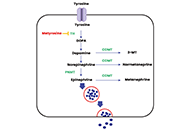 Tumor metabolism in pheochromocytomas: clinical and therapeutic implicationsOpen AccessReviewPheochromocytomas and paragangliomas (PPGLs) have emerged as one of the most common endocrine tumors. It epitomizes fascinating crossroads of genetic, metabolic, and endocrine oncology, providing a ...Mohammad Sadiq Jeeyavudeen ... Joseph M. PappachanPublished: April 24, 2024 Explor Target Antitumor Ther. DOI: 10.37349/etat.2024.00222
Tumor metabolism in pheochromocytomas: clinical and therapeutic implicationsOpen AccessReviewPheochromocytomas and paragangliomas (PPGLs) have emerged as one of the most common endocrine tumors. It epitomizes fascinating crossroads of genetic, metabolic, and endocrine oncology, providing a ...Mohammad Sadiq Jeeyavudeen ... Joseph M. PappachanPublished: April 24, 2024 Explor Target Antitumor Ther. DOI: 10.37349/etat.2024.00222 Improving single nucleotide polymorphisms genotyping accuracy for dihydropyrimidine dehydrogenase testing in pharmacogeneticsOpen AccessCase ReportFluoropyrimidines, crucial in cancer treatment, often cause toxicity concerns even at standard doses. Toxic accumulation of fluoropyrimidine metabolites, culminating in adverse effects, can stem fro...Annalaura Montella ... Mario CapassoPublished: April 24, 2024 Explor Target Antitumor Ther. DOI: 10.37349/etat.2024.00223
Improving single nucleotide polymorphisms genotyping accuracy for dihydropyrimidine dehydrogenase testing in pharmacogeneticsOpen AccessCase ReportFluoropyrimidines, crucial in cancer treatment, often cause toxicity concerns even at standard doses. Toxic accumulation of fluoropyrimidine metabolites, culminating in adverse effects, can stem fro...Annalaura Montella ... Mario CapassoPublished: April 24, 2024 Explor Target Antitumor Ther. DOI: 10.37349/etat.2024.00223 Alteration of glucose metabolism and expression of glucose transporters in ovarian cancerOpen AccessReviewAerobic glycolysis also known as the Warburg effect, remains a hallmark of various cancers, including ovarian cancer. Cancer cells undergo metabolic changes to sustain their tumorigenic properties a...Fatima Ben Ali ... Rabii Ameziane El HassaniPublished: April 24, 2024 Explor Target Antitumor Ther. DOI: 10.37349/etat.2024.00224
Alteration of glucose metabolism and expression of glucose transporters in ovarian cancerOpen AccessReviewAerobic glycolysis also known as the Warburg effect, remains a hallmark of various cancers, including ovarian cancer. Cancer cells undergo metabolic changes to sustain their tumorigenic properties a...Fatima Ben Ali ... Rabii Ameziane El HassaniPublished: April 24, 2024 Explor Target Antitumor Ther. DOI: 10.37349/etat.2024.00224 Cancer symptom cluster research in pediatric oncology: a work in progressOpen AccessPerspectiveIn the 21st century, advances in basic research have provided new insights in the field of pediatric oncology. Pediatric patients tend to experience higher levels of distressing symptoms, which toge...Luciana Chain Veronez, Luís Carlos Lopes-JúniorPublished: April 24, 2024 Explor Target Antitumor Ther. DOI: 10.37349/etat.2024.00225
Cancer symptom cluster research in pediatric oncology: a work in progressOpen AccessPerspectiveIn the 21st century, advances in basic research have provided new insights in the field of pediatric oncology. Pediatric patients tend to experience higher levels of distressing symptoms, which toge...Luciana Chain Veronez, Luís Carlos Lopes-JúniorPublished: April 24, 2024 Explor Target Antitumor Ther. DOI: 10.37349/etat.2024.00225 Emerging roles of type 1 innate lymphoid cells in tumour pathogenesis and cancer immunotherapyOpen AccessReviewInnate lymphoid cells (ILCs) are the most recently discovered class of innate immune cells found to have prominent roles in various human immune-related pathologies such as infection and autoimmune ...James Michael Verner ... Eric JouPublished: April 23, 2024 Explor Target Antitumor Ther. DOI: 10.37349/etat.2024.00219
Emerging roles of type 1 innate lymphoid cells in tumour pathogenesis and cancer immunotherapyOpen AccessReviewInnate lymphoid cells (ILCs) are the most recently discovered class of innate immune cells found to have prominent roles in various human immune-related pathologies such as infection and autoimmune ...James Michael Verner ... Eric JouPublished: April 23, 2024 Explor Target Antitumor Ther. DOI: 10.37349/etat.2024.00219 Hexachlorobenzene as a differential modulator of the conventional and metronomic chemotherapy response in triple negative breast cancer cellsOpen AccessOriginal ArticleAim: Triple negative breast cancer (TNBC) is usually treated with high doses of paclitaxel, whose effectiveness may be modulated by the action of environmental contaminants such as hexachlorobenz...Yamila Sanchez ... Alejandro EspañolPublished: March 21, 2024 Explor Target Antitumor Ther. DOI: 10.37349/etat.2024.00218
Hexachlorobenzene as a differential modulator of the conventional and metronomic chemotherapy response in triple negative breast cancer cellsOpen AccessOriginal ArticleAim: Triple negative breast cancer (TNBC) is usually treated with high doses of paclitaxel, whose effectiveness may be modulated by the action of environmental contaminants such as hexachlorobenz...Yamila Sanchez ... Alejandro EspañolPublished: March 21, 2024 Explor Target Antitumor Ther. DOI: 10.37349/etat.2024.00218 Improving the quality of patient care in lung cancer: key factors for successful multidisciplinary team workingOpen AccessReviewInternational Guidelines as well as Cancer Associations recommend a multidisciplinary approach to lung cancer care. A multidisciplinary team (MDT) can significantly improve treatment decision-making...Alessandro Morabito ... Giacomo PascarellaPublished: March 21, 2024 Explor Target Antitumor Ther. DOI: 10.37349/etat.2024.00217
Improving the quality of patient care in lung cancer: key factors for successful multidisciplinary team workingOpen AccessReviewInternational Guidelines as well as Cancer Associations recommend a multidisciplinary approach to lung cancer care. A multidisciplinary team (MDT) can significantly improve treatment decision-making...Alessandro Morabito ... Giacomo PascarellaPublished: March 21, 2024 Explor Target Antitumor Ther. DOI: 10.37349/etat.2024.00217 Potential of targeting signal-transducing adaptor protein-2 in cancer therapeutic applicationsOpen AccessMini ReviewAdaptor proteins play essential roles in various intracellular signaling pathways. Signal-transducing adaptor protein-2 (STAP-2) is an adaptor protein that possesses pleckstrin homology (PH) and Src...Taiga Maemoto ... Tadashi MatsudaPublished: March 07, 2024 Explor Target Antitumor Ther. DOI: 10.37349/etat.2024.00216
Potential of targeting signal-transducing adaptor protein-2 in cancer therapeutic applicationsOpen AccessMini ReviewAdaptor proteins play essential roles in various intracellular signaling pathways. Signal-transducing adaptor protein-2 (STAP-2) is an adaptor protein that possesses pleckstrin homology (PH) and Src...Taiga Maemoto ... Tadashi MatsudaPublished: March 07, 2024 Explor Target Antitumor Ther. DOI: 10.37349/etat.2024.00216 Novel therapeutic strategies targeting myeloid-derived suppressor cell immunosuppressive mechanisms for cancer treatmentOpen AccessReviewCancer is the leading cause of death globally superseded only by cardiovascular diseases, and novel strategies to overcome therapeutic resistance against existing cancer treatments are urgently requ...Eric Jou ... Fizza NasimPublished: February 28, 2024 Explor Target Antitumor Ther. DOI: 10.37349/etat.2024.00212
Novel therapeutic strategies targeting myeloid-derived suppressor cell immunosuppressive mechanisms for cancer treatmentOpen AccessReviewCancer is the leading cause of death globally superseded only by cardiovascular diseases, and novel strategies to overcome therapeutic resistance against existing cancer treatments are urgently requ...Eric Jou ... Fizza NasimPublished: February 28, 2024 Explor Target Antitumor Ther. DOI: 10.37349/etat.2024.00212 Conceptual breakthroughs of the long noncoding RNA functional system and its endogenous regulatory role in the cancerous regimeOpen AccessReviewLong noncoding RNAs (lncRNAs) derived from noncoding regions in the human genome were once regarded as junks with no biological significance, but recent studies have shown that these molecules are h...Anyou WangPublished: February 27, 2024 Explor Target Antitumor Ther. DOI: 10.37349/etat.2024.00211
Conceptual breakthroughs of the long noncoding RNA functional system and its endogenous regulatory role in the cancerous regimeOpen AccessReviewLong noncoding RNAs (lncRNAs) derived from noncoding regions in the human genome were once regarded as junks with no biological significance, but recent studies have shown that these molecules are h...Anyou WangPublished: February 27, 2024 Explor Target Antitumor Ther. DOI: 10.37349/etat.2024.00211 Recent preclinical and clinical advances in radioimmunotherapy for non-Hodgkin’s lymphomaOpen AccessReviewRadioimmunotherapy (RIT) is a therapy that combines a radioactive nucleotide with a monoclonal antibody (mAb). RIT enhances the therapeutic effect of mAb and reduces toxicity compared with conventio...Hiroki Goto ... Seiji OkadaPublished: February 28, 2024 Explor Target Antitumor Ther. DOI: 10.37349/etat.2024.00213
Recent preclinical and clinical advances in radioimmunotherapy for non-Hodgkin’s lymphomaOpen AccessReviewRadioimmunotherapy (RIT) is a therapy that combines a radioactive nucleotide with a monoclonal antibody (mAb). RIT enhances the therapeutic effect of mAb and reduces toxicity compared with conventio...Hiroki Goto ... Seiji OkadaPublished: February 28, 2024 Explor Target Antitumor Ther. DOI: 10.37349/etat.2024.00213 A case of immunotherapy-induced thyroiditisOpen AccessCase ReportImmunotherapy treatments for cancer are known to cause adverse thyroid events which present a diagnostic challenge to clinicians and radiologists. This case report highlights the importance of a hig...George Pears ... Joseph SaccoPublished: February 28, 2024 Explor Target Antitumor Ther. DOI: 10.37349/etat.2024.00214
A case of immunotherapy-induced thyroiditisOpen AccessCase ReportImmunotherapy treatments for cancer are known to cause adverse thyroid events which present a diagnostic challenge to clinicians and radiologists. This case report highlights the importance of a hig...George Pears ... Joseph SaccoPublished: February 28, 2024 Explor Target Antitumor Ther. DOI: 10.37349/etat.2024.00214 Early-stage triple negative breast cancer: the therapeutic role of immunotherapy and the prognostic value of pathological complete responseOpen AccessReviewTriple negative breast cancer (TNBC) represents an aggressive disease associated with a high risk of recurrence after curative treatment and a poor prognosis in the metastatic setting. Chemotherapy ...Pierluigi De Santis ... Palma FedelePublished: February 28, 2024 Explor Target Antitumor Ther. DOI: 10.37349/etat.2024.00215
Early-stage triple negative breast cancer: the therapeutic role of immunotherapy and the prognostic value of pathological complete responseOpen AccessReviewTriple negative breast cancer (TNBC) represents an aggressive disease associated with a high risk of recurrence after curative treatment and a poor prognosis in the metastatic setting. Chemotherapy ...Pierluigi De Santis ... Palma FedelePublished: February 28, 2024 Explor Target Antitumor Ther. DOI: 10.37349/etat.2024.00215 Exploring monocarboxylate transporter inhibition for cancer treatmentOpen AccessReviewCells are separated from the environment by a lipid bilayer membrane that is relatively impermeable to solutes. The transport of ions and small molecules across this membrane is an essential process...Tomas Koltai, Larry FliegelPublished: February 23, 2024 Explor Target Antitumor Ther. DOI: 10.37349/etat.2024.00210
Exploring monocarboxylate transporter inhibition for cancer treatmentOpen AccessReviewCells are separated from the environment by a lipid bilayer membrane that is relatively impermeable to solutes. The transport of ions and small molecules across this membrane is an essential process...Tomas Koltai, Larry FliegelPublished: February 23, 2024 Explor Target Antitumor Ther. DOI: 10.37349/etat.2024.00210 The oncogenic role of hepatitis B virus X gene in hepatocarcinogenesis: recent updatesOpen AccessReviewHepatocellular carcinoma (HCC) is the most prevalent form of primary liver cancers with high mortality rate. Among its various etiological factors, one of the major risk factors for HCC is a chronic...Agustiningsih Agustiningsih ... Caecilia SukowatiPublished: February 20, 2024 Explor Target Antitumor Ther. DOI: 10.37349/etat.2024.00209
The oncogenic role of hepatitis B virus X gene in hepatocarcinogenesis: recent updatesOpen AccessReviewHepatocellular carcinoma (HCC) is the most prevalent form of primary liver cancers with high mortality rate. Among its various etiological factors, one of the major risk factors for HCC is a chronic...Agustiningsih Agustiningsih ... Caecilia SukowatiPublished: February 20, 2024 Explor Target Antitumor Ther. DOI: 10.37349/etat.2024.00209 Efficacy of metformin and electrical pulses in breast cancer MDA-MB-231 cellsOpen AccessOriginal ArticleAim: Triple-negative breast cancer (TNBC) is a very aggressive subset of breast cancer, with limited treatment options, due to the lack of three commonly targeted receptors, which merits the need...Praveen Sahu ... Raji SundararajanPublished: February 19, 2024 Explor Target Antitumor Ther. DOI: 10.37349/etat.2024.00204
Efficacy of metformin and electrical pulses in breast cancer MDA-MB-231 cellsOpen AccessOriginal ArticleAim: Triple-negative breast cancer (TNBC) is a very aggressive subset of breast cancer, with limited treatment options, due to the lack of three commonly targeted receptors, which merits the need...Praveen Sahu ... Raji SundararajanPublished: February 19, 2024 Explor Target Antitumor Ther. DOI: 10.37349/etat.2024.00204 Quantitative peritumoral magnetic resonance imaging fingerprinting improves machine learning-based prediction of overall survival in colorectal cancerOpen AccessOriginal ArticleAim: To investigate magnetic resonance imaging (MRI)-based peritumoral texture features as prognostic indicators of survival in patients with colorectal liver metastasis (CRLM). Methods: Fr...Azadeh Tabari ... Dania DayePublished: February 19, 2024 Explor Target Antitumor Ther. DOI: 10.37349/etat.2024.00205
Quantitative peritumoral magnetic resonance imaging fingerprinting improves machine learning-based prediction of overall survival in colorectal cancerOpen AccessOriginal ArticleAim: To investigate magnetic resonance imaging (MRI)-based peritumoral texture features as prognostic indicators of survival in patients with colorectal liver metastasis (CRLM). Methods: Fr...Azadeh Tabari ... Dania DayePublished: February 19, 2024 Explor Target Antitumor Ther. DOI: 10.37349/etat.2024.00205 Management of stage III non-small-cell lung cancer: rays of hopeOpen AccessMini ReviewLung cancer remains the most common cause of cancer death across the world. Non-small-cell lung cancer (NSCLC) represents the most frequent type of lung cancer and is frequently diagnosed at an adva...Floryane Kim ... Alex FriedlaenderPublished: February 19, 2024 Explor Target Antitumor Ther. DOI: 10.37349/etat.2024.00206
Management of stage III non-small-cell lung cancer: rays of hopeOpen AccessMini ReviewLung cancer remains the most common cause of cancer death across the world. Non-small-cell lung cancer (NSCLC) represents the most frequent type of lung cancer and is frequently diagnosed at an adva...Floryane Kim ... Alex FriedlaenderPublished: February 19, 2024 Explor Target Antitumor Ther. DOI: 10.37349/etat.2024.00206 CD99 tumor associated antigen is a potential target for antibody therapy of T-cell acute lymphoblastic leukemiaOpen AccessReviewMonoclonal antibodies (mAbs) are an effective drug for targeted immunotherapy in several cancer types. However, so far, no antibody has been successfully developed for certain types of cancer, inclu...Kamonporn Kotemul ... Nuchjira TakheawPublished: February 19, 2024 Explor Target Antitumor Ther. DOI: 10.37349/etat.2024.00207
CD99 tumor associated antigen is a potential target for antibody therapy of T-cell acute lymphoblastic leukemiaOpen AccessReviewMonoclonal antibodies (mAbs) are an effective drug for targeted immunotherapy in several cancer types. However, so far, no antibody has been successfully developed for certain types of cancer, inclu...Kamonporn Kotemul ... Nuchjira TakheawPublished: February 19, 2024 Explor Target Antitumor Ther. DOI: 10.37349/etat.2024.00207 Exploring the function of myeloid cells in promoting metastasis in head and neck cancerOpen AccessMini ReviewHead and neck cancer (HNC) is a challenging disease that lacks effective treatment, particularly in the cases that spread locoregionally and metastasize distantly, dramatically reducing patient surv...Dakota Dike Dimegwu Okwuone ... Gregory N. GanPublished: February 19, 2024 Explor Target Antitumor Ther. DOI: 10.37349/etat.2024.00208
Exploring the function of myeloid cells in promoting metastasis in head and neck cancerOpen AccessMini ReviewHead and neck cancer (HNC) is a challenging disease that lacks effective treatment, particularly in the cases that spread locoregionally and metastasize distantly, dramatically reducing patient surv...Dakota Dike Dimegwu Okwuone ... Gregory N. GanPublished: February 19, 2024 Explor Target Antitumor Ther. DOI: 10.37349/etat.2024.00208 DNA methylation modulates epigenetic regulation in colorectal cancer diagnosis, prognosis and precision medicineOpen AccessReviewColorectal cancer (CRC) is a multifaceted disease influenced by the interplay of genetic and environmental factors. The clinical heterogeneity of CRC cannot be attributed exclusively to genetic dive...Jingxin Ye ... Weifeng DingPublished: January 28, 2024 Explor Target Antitumor Ther. DOI: 10.37349/etat.2024.00203
DNA methylation modulates epigenetic regulation in colorectal cancer diagnosis, prognosis and precision medicineOpen AccessReviewColorectal cancer (CRC) is a multifaceted disease influenced by the interplay of genetic and environmental factors. The clinical heterogeneity of CRC cannot be attributed exclusively to genetic dive...Jingxin Ye ... Weifeng DingPublished: January 28, 2024 Explor Target Antitumor Ther. DOI: 10.37349/etat.2024.00203 Role of STAT3 in pancreatic cancerOpen AccessReviewPancreatic cancer remains a serious and deadly disease, impacting people globally. There remain prominent gaps in the current understanding of the disease, specifically regarding the role of the sig...Zachary Hamel ... Shrikant AnantPublished: January 17, 2024 Explor Target Antitumor Ther. DOI: 10.37349/etat.2024.00202
Role of STAT3 in pancreatic cancerOpen AccessReviewPancreatic cancer remains a serious and deadly disease, impacting people globally. There remain prominent gaps in the current understanding of the disease, specifically regarding the role of the sig...Zachary Hamel ... Shrikant AnantPublished: January 17, 2024 Explor Target Antitumor Ther. DOI: 10.37349/etat.2024.00202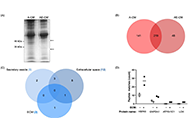 Identification of lysyl oxidase as an adipocyte-secreted mediator that promotes a partial mesenchymal-to-epithelial transition in MDA-MB-231 cellsOpen AccessOriginal ArticleAim: Breast cancer (BC) is the most common cancer in women worldwide, where adiposity has been linked to BC morbidity. In general, obese premenopausal women diagnosed with triple-negative BC (TNB...Cassidy M. Van Stiphout ... Alicia M. Viloria-PetitPublished: January 16, 2024 Explor Target Antitumor Ther. DOI: 10.37349/etat.2024.00201
Identification of lysyl oxidase as an adipocyte-secreted mediator that promotes a partial mesenchymal-to-epithelial transition in MDA-MB-231 cellsOpen AccessOriginal ArticleAim: Breast cancer (BC) is the most common cancer in women worldwide, where adiposity has been linked to BC morbidity. In general, obese premenopausal women diagnosed with triple-negative BC (TNB...Cassidy M. Van Stiphout ... Alicia M. Viloria-PetitPublished: January 16, 2024 Explor Target Antitumor Ther. DOI: 10.37349/etat.2024.00201 Cola rostrata K. Schum. constituents induce cytotoxicity through reactive oxygen species generation and mitochondrial membrane depolarisationOpen AccessOriginal ArticleAim: While the traditional use of Cola rostrata in treating illnesses and diseases has not been reported, the presence of cytotoxic principles has been reported in phylogenetically and biogeograp...Babatunde E. Ajayi ... Amos A. FatokunPublished: December 28, 2023 Explor Target Antitumor Ther. DOI: 10.37349/etat.2023.00200
Cola rostrata K. Schum. constituents induce cytotoxicity through reactive oxygen species generation and mitochondrial membrane depolarisationOpen AccessOriginal ArticleAim: While the traditional use of Cola rostrata in treating illnesses and diseases has not been reported, the presence of cytotoxic principles has been reported in phylogenetically and biogeograp...Babatunde E. Ajayi ... Amos A. FatokunPublished: December 28, 2023 Explor Target Antitumor Ther. DOI: 10.37349/etat.2023.00200 Facing the conundrum: which first-line therapy should be used for patients with metastatic triple-negative breast cancer carrying germline BRCA mutation?Open AccessPerspectivePembrolizumab combined with chemotherapy has been established as the preferred first-line therapy for treating metastatic triple-negative breast cancer (mTNBC) with programmed cell death ligand-1 (P...Sabah Alaklabi ... Shipra GandhiPublished: December 27, 2023 Explor Target Antitumor Ther. DOI: 10.37349/etat.2023.00198
Facing the conundrum: which first-line therapy should be used for patients with metastatic triple-negative breast cancer carrying germline BRCA mutation?Open AccessPerspectivePembrolizumab combined with chemotherapy has been established as the preferred first-line therapy for treating metastatic triple-negative breast cancer (mTNBC) with programmed cell death ligand-1 (P...Sabah Alaklabi ... Shipra GandhiPublished: December 27, 2023 Explor Target Antitumor Ther. DOI: 10.37349/etat.2023.00198 Therapeutic significance of tumor microenvironment in cholangiocarcinoma: focus on tumor-infiltrating T lymphocytesOpen AccessReviewCholangiocarcinoma (CCA) is a highly aggressive type of adenocarcinoma distinguished by its invasiveness. Depending on specific anatomical positioning within the biliary tree, CCA can be categorized...Chaoqun Li ... Jieer YingPublished: December 28, 2023 Explor Target Antitumor Ther DOI: 10.37349/etat.2023.00199
Therapeutic significance of tumor microenvironment in cholangiocarcinoma: focus on tumor-infiltrating T lymphocytesOpen AccessReviewCholangiocarcinoma (CCA) is a highly aggressive type of adenocarcinoma distinguished by its invasiveness. Depending on specific anatomical positioning within the biliary tree, CCA can be categorized...Chaoqun Li ... Jieer YingPublished: December 28, 2023 Explor Target Antitumor Ther DOI: 10.37349/etat.2023.00199 Telehealth in breast cancer following the coronavirus disease 2019 pandemicOpen AccessReviewBreast cancer (BC) is the second most diagnosed cancer in 2018 with around 2.3 million cases globally in 2020. In March 2020 and after its worldwide spread, the World Health Organization (WHO) decla...Jean Zeghondy ... Barbara PistilliPublished: December 26, 2023 Explor Target Antitumor Ther. DOI: 10.37349/etat.2023.00195
Telehealth in breast cancer following the coronavirus disease 2019 pandemicOpen AccessReviewBreast cancer (BC) is the second most diagnosed cancer in 2018 with around 2.3 million cases globally in 2020. In March 2020 and after its worldwide spread, the World Health Organization (WHO) decla...Jean Zeghondy ... Barbara PistilliPublished: December 26, 2023 Explor Target Antitumor Ther. DOI: 10.37349/etat.2023.00195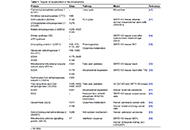 Post-translational modulation of cell signalling through protein succinylationOpen AccessReviewCells need to adapt their activities to extra- and intracellular signalling cues. To translate a received extracellular signal, cells have specific receptors that transmit the signal to downstream p...Katharina F. Kubatzky ... Dayoung YuPublished: December 27, 2023 Explor Target Antitumor Ther. DOI: 10.37349/etat.2023.00196
Post-translational modulation of cell signalling through protein succinylationOpen AccessReviewCells need to adapt their activities to extra- and intracellular signalling cues. To translate a received extracellular signal, cells have specific receptors that transmit the signal to downstream p...Katharina F. Kubatzky ... Dayoung YuPublished: December 27, 2023 Explor Target Antitumor Ther. DOI: 10.37349/etat.2023.00196 Current implications and challenges of artificial intelligence technologies in therapeutic intervention of colorectal cancerOpen AccessReviewIrrespective of men and women, colorectal cancer (CRC), is the third most common cancer in the population with more than 1.85 million cases annually. Fewer than 20% of patients only survive beyond f...Kriti Das ... Chakresh Kumar JainPublished: December 27, 2023 Explor Target Antitumor Ther. DOI: 10.37349/etat.2023.00197
Current implications and challenges of artificial intelligence technologies in therapeutic intervention of colorectal cancerOpen AccessReviewIrrespective of men and women, colorectal cancer (CRC), is the third most common cancer in the population with more than 1.85 million cases annually. Fewer than 20% of patients only survive beyond f...Kriti Das ... Chakresh Kumar JainPublished: December 27, 2023 Explor Target Antitumor Ther. DOI: 10.37349/etat.2023.00197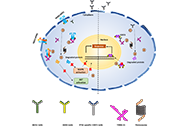 Recent advancements in targeted protein knockdown technologies—emerging paradigms for targeted therapyOpen AccessReviewA generalized therapeutic strategy for various disease conditions, including cancer, is to deplete or inactivate harmful protein targets. Various forms of protein or gene silencing molecules, e.g., ...Mansi Joshi ... Abhijit DePublished: December 26, 2023 Explor Target Antitumor Ther. DOI: 10.37349/etat.2023.00194
Recent advancements in targeted protein knockdown technologies—emerging paradigms for targeted therapyOpen AccessReviewA generalized therapeutic strategy for various disease conditions, including cancer, is to deplete or inactivate harmful protein targets. Various forms of protein or gene silencing molecules, e.g., ...Mansi Joshi ... Abhijit DePublished: December 26, 2023 Explor Target Antitumor Ther. DOI: 10.37349/etat.2023.00194 Receptor tyrosine kinase-like orphan receptor 1 inhibitor strictinin exhibits anti-cancer properties against highly aggressive androgen-independent prostate cancerOpen AccessOriginal ArticleAim: It is important to identify anti-cancer compounds that can inhibit specific molecular targets to eradicate androgen-receptor negative (ARneg), androgen-independent (AI) prostate cancer, whic...Vignesh Sivaganesh, Bela PeethambaranPublished: December 20, 2023 Explor Target Antitumor Ther. DOI: 10.37349/etat.2023.00192
Receptor tyrosine kinase-like orphan receptor 1 inhibitor strictinin exhibits anti-cancer properties against highly aggressive androgen-independent prostate cancerOpen AccessOriginal ArticleAim: It is important to identify anti-cancer compounds that can inhibit specific molecular targets to eradicate androgen-receptor negative (ARneg), androgen-independent (AI) prostate cancer, whic...Vignesh Sivaganesh, Bela PeethambaranPublished: December 20, 2023 Explor Target Antitumor Ther. DOI: 10.37349/etat.2023.00192 Investigations of the novel checkpoint kinase 1 inhibitor SRA737 in non-small cell lung cancer and colorectal cancer cells of differing tumour protein 53 gene statusOpen AccessOriginal ArticleAim: In response to DNA damage the serine/threonine-specific protein kinase checkpoint kinase 1 (CHK1) is activated allowing cells to enter S phase (S) and G2 phase (G2) cell-cycle arrest. CHK1 i...Ali JN Duabil ... George DD JonesPublished: December 21, 2023 Explor Target Antitumor Ther. DOI: 10.37349/etat.2023.00193
Investigations of the novel checkpoint kinase 1 inhibitor SRA737 in non-small cell lung cancer and colorectal cancer cells of differing tumour protein 53 gene statusOpen AccessOriginal ArticleAim: In response to DNA damage the serine/threonine-specific protein kinase checkpoint kinase 1 (CHK1) is activated allowing cells to enter S phase (S) and G2 phase (G2) cell-cycle arrest. CHK1 i...Ali JN Duabil ... George DD JonesPublished: December 21, 2023 Explor Target Antitumor Ther. DOI: 10.37349/etat.2023.00193 Is oligoprogression a potentially curable disease in epidermal growth factor receptor mutant lung adenocarcinoma?Open AccessCase ReportThird-generation epidermal growth factor receptor (EGFR)-tyrosine kinase inhibitors (TKIs) have shown impressive results in EGFR mutant lung cancer (LC) patients in terms of disease control rate wit...Sviatoslav Chekhun ... Maria SaigíPublished: December 13, 2023 Explor Target Antitumor Ther. DOI: 10.37349/etat.2023.00191
Is oligoprogression a potentially curable disease in epidermal growth factor receptor mutant lung adenocarcinoma?Open AccessCase ReportThird-generation epidermal growth factor receptor (EGFR)-tyrosine kinase inhibitors (TKIs) have shown impressive results in EGFR mutant lung cancer (LC) patients in terms of disease control rate wit...Sviatoslav Chekhun ... Maria SaigíPublished: December 13, 2023 Explor Target Antitumor Ther. DOI: 10.37349/etat.2023.00191 Targeting cancer stem cell plasticity in triple-negative breast cancerOpen AccessReviewTriple-negative breast cancer (TNBC) is a highly aggressive breast cancer subtype with limited treatment options. Cancer stem cells (CSCs) are thought to play a crucial role in TNBC progression and ...Zhengwang Guo, Shuyan HanPublished: December 11, 2023 Explor Target Antitumor Ther. DOI: 10.37349/etat.2023.00190
Targeting cancer stem cell plasticity in triple-negative breast cancerOpen AccessReviewTriple-negative breast cancer (TNBC) is a highly aggressive breast cancer subtype with limited treatment options. Cancer stem cells (CSCs) are thought to play a crucial role in TNBC progression and ...Zhengwang Guo, Shuyan HanPublished: December 11, 2023 Explor Target Antitumor Ther. DOI: 10.37349/etat.2023.00190 Chimeric single-chain variable fragment-human immunoglobulin G crystallizable fragment antibody against GD2 for neuroblastoma targeted immunotherapyOpen AccessOriginal ArticleAim: The present study aims to generate chimeric mouse single-chain variable fragment (scFv) and immunoglobulin G1 (IgG1) crystallizable fragment (Fc) antibody against disialoganglioside (GD2) fo...Witida Laopajon ... Watchara KasinrerkPublished: December 06, 2023 Explor Target Antitumor Ther. DOI: 10.37349/etat.2023.00188
Chimeric single-chain variable fragment-human immunoglobulin G crystallizable fragment antibody against GD2 for neuroblastoma targeted immunotherapyOpen AccessOriginal ArticleAim: The present study aims to generate chimeric mouse single-chain variable fragment (scFv) and immunoglobulin G1 (IgG1) crystallizable fragment (Fc) antibody against disialoganglioside (GD2) fo...Witida Laopajon ... Watchara KasinrerkPublished: December 06, 2023 Explor Target Antitumor Ther. DOI: 10.37349/etat.2023.00188 Unexpected “Lazarus response” to single-agent bevacizumab in heavily pretreated patients with HER2-positive breast cancerOpen AccessCase ReportEarly clinical trials aimed to halt cancer progression by inhibiting the growth of new blood vessels in tumors through single-agent targeted therapy with bevacizumab. These trials largely proved uns...Alexey V. Emshanov ... Evgeny N. ImyanitovPublished: December 06, 2023 Explor Target Antitumor Ther. DOI: 10.37349/etat.2023.00189
Unexpected “Lazarus response” to single-agent bevacizumab in heavily pretreated patients with HER2-positive breast cancerOpen AccessCase ReportEarly clinical trials aimed to halt cancer progression by inhibiting the growth of new blood vessels in tumors through single-agent targeted therapy with bevacizumab. These trials largely proved uns...Alexey V. Emshanov ... Evgeny N. ImyanitovPublished: December 06, 2023 Explor Target Antitumor Ther. DOI: 10.37349/etat.2023.00189 Comparing efficacy and safety of upfront treatment strategies for anaplastic lymphoma kinase-positive non-small cell lung cancer: a network meta-analysisOpen AccessMeta-AnalysisAim: This article is based on our previous research, which was presented as a post at the Congress Aiom 2022 Congress and published in Tumori Journal as Conference Abstract (Tumori J. 2022;108:1...Marco Filetti ... Gennaro DanielePublished: December 01, 2023 Explor Target Antitumor Ther. DOI: 10.37349/etat.2023.00187
Comparing efficacy and safety of upfront treatment strategies for anaplastic lymphoma kinase-positive non-small cell lung cancer: a network meta-analysisOpen AccessMeta-AnalysisAim: This article is based on our previous research, which was presented as a post at the Congress Aiom 2022 Congress and published in Tumori Journal as Conference Abstract (Tumori J. 2022;108:1...Marco Filetti ... Gennaro DanielePublished: December 01, 2023 Explor Target Antitumor Ther. DOI: 10.37349/etat.2023.00187 A decade of CD4+ chimeric antigen receptor T-cell evolution in two chronic lymphocytic leukemia patients: were chronic lymphocytic leukemia cells present?Open AccessCommentaryOn Feb 2, 2022, Nature published the paper titled “Decade-long leukemia remissions with the persistence of CD4+ CAR T-cells” (Nature. 2022;602:503–9. doi: 10.1038/s41586-021-04390-6). Accordin...Dimitrios Bouzianas, Stella BouzianaPublished: October 31, 2023 Explor Target Antitumor Ther. DOI: 10.37349/etat.2023.00186
A decade of CD4+ chimeric antigen receptor T-cell evolution in two chronic lymphocytic leukemia patients: were chronic lymphocytic leukemia cells present?Open AccessCommentaryOn Feb 2, 2022, Nature published the paper titled “Decade-long leukemia remissions with the persistence of CD4+ CAR T-cells” (Nature. 2022;602:503–9. doi: 10.1038/s41586-021-04390-6). Accordin...Dimitrios Bouzianas, Stella BouzianaPublished: October 31, 2023 Explor Target Antitumor Ther. DOI: 10.37349/etat.2023.00186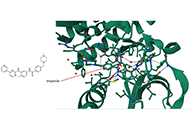 Overcoming phenotypic switching: targeting protein-protein interactions in cancerOpen AccessReviewAlternative protein-protein interactions (PPIs) arising from mutations or post-translational modifications (PTMs), termed phenotypic switching (PS), are critical for the transmission of alternative ...Christos Ladias ... Nikolaos A. PapanikolaouPublished: October 30, 2023 Explor Target Antitumor Ther. DOI: 10.37349/etat.2023.00181
Overcoming phenotypic switching: targeting protein-protein interactions in cancerOpen AccessReviewAlternative protein-protein interactions (PPIs) arising from mutations or post-translational modifications (PTMs), termed phenotypic switching (PS), are critical for the transmission of alternative ...Christos Ladias ... Nikolaos A. PapanikolaouPublished: October 30, 2023 Explor Target Antitumor Ther. DOI: 10.37349/etat.2023.00181 Coronavirus disease 2019 and lung cancer: where are we?Open AccessReviewOncology patients are more susceptible to severe acute respiratory syndrome coronavirus 2 (SARS-CoV-2) infection due to hospital contact and an immunological system that can be compromised by antine...Abrahams Ocanto ... Felipe CouñagoPublished: October 30, 2023 Explor Target Antitumor Ther. DOI: 10.37349/etat.2023.00182
Coronavirus disease 2019 and lung cancer: where are we?Open AccessReviewOncology patients are more susceptible to severe acute respiratory syndrome coronavirus 2 (SARS-CoV-2) infection due to hospital contact and an immunological system that can be compromised by antine...Abrahams Ocanto ... Felipe CouñagoPublished: October 30, 2023 Explor Target Antitumor Ther. DOI: 10.37349/etat.2023.00182 Impact of coronavirus disease 2019 pandemic on good clinical practice trials in oncologyOpen AccessSystematic ReviewAim: Coronavirus disease 2019 (COVID-19) became pandemic on 11th March 2020 and it deeply stressed the healthcare system. Cancer patients represent a vulnerable population, so many recommendation...Veronica Agostinelli ... Rossana BerardiPublished: October 30, 2023 Explor Target Antitumor Ther. DOI: 10.37349/etat.2023.00183
Impact of coronavirus disease 2019 pandemic on good clinical practice trials in oncologyOpen AccessSystematic ReviewAim: Coronavirus disease 2019 (COVID-19) became pandemic on 11th March 2020 and it deeply stressed the healthcare system. Cancer patients represent a vulnerable population, so many recommendation...Veronica Agostinelli ... Rossana BerardiPublished: October 30, 2023 Explor Target Antitumor Ther. DOI: 10.37349/etat.2023.00183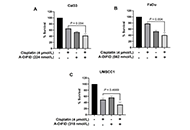 Acryl-3,5-bis(2,4-difluorobenzylidene)-4-piperidone targeting cellular JUN proto-oncogene, AP-1 transcription factor subunit inhibits head and neck squamous cell carcinoma progressionOpen AccessOriginal ArticleAim: Head and neck squamous cell carcinoma (HNSCC) is the seventh most common cancer worldwide with a survival rate below fifty percent. Addressing meager therapeutic options, a series of small m...Levi Arnold ... Sufi Mary ThomasPublished: October 31, 2023 Explor Target Antitumor Ther. DOI: 10.37349/etat.2023.00184
Acryl-3,5-bis(2,4-difluorobenzylidene)-4-piperidone targeting cellular JUN proto-oncogene, AP-1 transcription factor subunit inhibits head and neck squamous cell carcinoma progressionOpen AccessOriginal ArticleAim: Head and neck squamous cell carcinoma (HNSCC) is the seventh most common cancer worldwide with a survival rate below fifty percent. Addressing meager therapeutic options, a series of small m...Levi Arnold ... Sufi Mary ThomasPublished: October 31, 2023 Explor Target Antitumor Ther. DOI: 10.37349/etat.2023.00184 Cholesterol esterification and p53-mediated tumor suppressionOpen AccessPerspectiveMany human cancers carry missense mutations in or deletions of the tumor protein 53 (TP53) tumor suppressor gene. TP53’s product, p53 regulates many biological processes, including cell metabolism...Youjun Li ... Edward V. ProchownikPublished: October 31, 2023 Explor Target Antitumor Ther. DOI: 10.37349/etat.2023.00185
Cholesterol esterification and p53-mediated tumor suppressionOpen AccessPerspectiveMany human cancers carry missense mutations in or deletions of the tumor protein 53 (TP53) tumor suppressor gene. TP53’s product, p53 regulates many biological processes, including cell metabolism...Youjun Li ... Edward V. ProchownikPublished: October 31, 2023 Explor Target Antitumor Ther. DOI: 10.37349/etat.2023.00185 Effect of vitamin D supplementation on inflammatory markers and total antioxidant capacity in breast cancer women using a machine learning techniqueOpen AccessOriginal ArticleAim: This study aimed to establish a learning system using an artificial neural network (ANN) to predict the effects of vitamin D supplementation on the serum levels of vitamin D, inflammatory fa...Marzieh Tahmasebi ... Amir JamshidnezhadPublished: October 30, 2023 Explor Target Antitumor Ther. DOI: 10.37349/etat.2023.00180
Effect of vitamin D supplementation on inflammatory markers and total antioxidant capacity in breast cancer women using a machine learning techniqueOpen AccessOriginal ArticleAim: This study aimed to establish a learning system using an artificial neural network (ANN) to predict the effects of vitamin D supplementation on the serum levels of vitamin D, inflammatory fa...Marzieh Tahmasebi ... Amir JamshidnezhadPublished: October 30, 2023 Explor Target Antitumor Ther. DOI: 10.37349/etat.2023.00180 A review on in silico virtual screening methods in COVID-19 using anticancer drugs and other natural/chemical inhibitorsOpen AccessReviewThe present coronavirus disease 2019 (COVID-19) pandemic scenario has posed a difficulty for cancer treatment. Even under ideal conditions, malignancies like small cell lung cancer (SCLC) are challe...Babak SokoutiPublished: October 26, 2023 Explor Target Antitumor Ther. DOI: 10.37349/etat.2023.00177
A review on in silico virtual screening methods in COVID-19 using anticancer drugs and other natural/chemical inhibitorsOpen AccessReviewThe present coronavirus disease 2019 (COVID-19) pandemic scenario has posed a difficulty for cancer treatment. Even under ideal conditions, malignancies like small cell lung cancer (SCLC) are challe...Babak SokoutiPublished: October 26, 2023 Explor Target Antitumor Ther. DOI: 10.37349/etat.2023.00177 Integration of signaling pathway and bromodomain and extra-terminal domain inhibition for the treatment of mutant Kirsten rat sarcoma viral oncogene homolog cancerOpen AccessReviewMutant Kirsten rat sarcoma viral oncogene homolog (KRAS) is now a drugable oncogenic driver and the KRAS G12C variant responds clinically to sotorasib and adagrasib that covalently block the cystein...Gerhard Hamilton ... Barbara RathPublished: October 26, 2023 Explor Target Antitumor Ther. DOI: 10.37349/etat.2023.00178
Integration of signaling pathway and bromodomain and extra-terminal domain inhibition for the treatment of mutant Kirsten rat sarcoma viral oncogene homolog cancerOpen AccessReviewMutant Kirsten rat sarcoma viral oncogene homolog (KRAS) is now a drugable oncogenic driver and the KRAS G12C variant responds clinically to sotorasib and adagrasib that covalently block the cystein...Gerhard Hamilton ... Barbara RathPublished: October 26, 2023 Explor Target Antitumor Ther. DOI: 10.37349/etat.2023.00178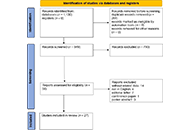 Effect of coronavirus disease 2019 on diagnosis and treatment of hepatocellular carcinoma: a systematic reviewOpen AccessSystematic ReviewAim: Changes in strategies in the coronavirus disease 2019 (COVID-19) crisis and the imposing of restrictions have isolated many vulnerable patients including those with hepatocellular carcinoma ...Afrooz Mazidimoradi ... Hamid SalehiniyaPublished: October 26, 2023 Explor Target Antitumor Ther. DOI: 10.37349/etat.2023.00179
Effect of coronavirus disease 2019 on diagnosis and treatment of hepatocellular carcinoma: a systematic reviewOpen AccessSystematic ReviewAim: Changes in strategies in the coronavirus disease 2019 (COVID-19) crisis and the imposing of restrictions have isolated many vulnerable patients including those with hepatocellular carcinoma ...Afrooz Mazidimoradi ... Hamid SalehiniyaPublished: October 26, 2023 Explor Target Antitumor Ther. DOI: 10.37349/etat.2023.00179 Current role of artificial intelligence in head and neck cancer surgery: a systematic review of literatureOpen AccessSystematic ReviewAim: Artificial intelligence (AI) is a new field of science in which computers will provide decisions-supporting tools to help doctors make difficult clinical choices. Recent AI applications in o...Antonella Loperfido ... Gianluca BellocchiPublished: October 24, 2023 Explor Target Antitumor Ther. DOI: 10.37349/etat.2023.00174
Current role of artificial intelligence in head and neck cancer surgery: a systematic review of literatureOpen AccessSystematic ReviewAim: Artificial intelligence (AI) is a new field of science in which computers will provide decisions-supporting tools to help doctors make difficult clinical choices. Recent AI applications in o...Antonella Loperfido ... Gianluca BellocchiPublished: October 24, 2023 Explor Target Antitumor Ther. DOI: 10.37349/etat.2023.00174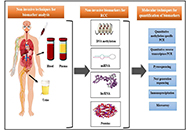 Biomarkers in renal cell carcinoma and their targeted therapies: a reviewOpen AccessReviewRenal cell carcinoma (RCC) is one of the most life-threatening urinary malignancies displaying poor response to radiotherapy and chemotherapy. Although in the recent past there have been tremendous ...Shruti Gupta, Shamsher Singh KanwarPublished: October 25, 2023 Explor Target Antitumor Ther. DOI: 10.37349/etat.2023.00175
Biomarkers in renal cell carcinoma and their targeted therapies: a reviewOpen AccessReviewRenal cell carcinoma (RCC) is one of the most life-threatening urinary malignancies displaying poor response to radiotherapy and chemotherapy. Although in the recent past there have been tremendous ...Shruti Gupta, Shamsher Singh KanwarPublished: October 25, 2023 Explor Target Antitumor Ther. DOI: 10.37349/etat.2023.00175 Melatonin, BAG-1 and cortisol circadian interactions in tumor pathogenesis and patterned immune responsesOpen AccessReviewA dysregulated circadian rhythm is significantly associated with cancer risk, as is aging. Both aging and circadian dysregulation show suppressed pineal melatonin, which is indicated in many studies...George AndersonPublished: October 25, 2023 Explor Target Antitumor Ther. DOI: 10.37349/etat.2023.00176
Melatonin, BAG-1 and cortisol circadian interactions in tumor pathogenesis and patterned immune responsesOpen AccessReviewA dysregulated circadian rhythm is significantly associated with cancer risk, as is aging. Both aging and circadian dysregulation show suppressed pineal melatonin, which is indicated in many studies...George AndersonPublished: October 25, 2023 Explor Target Antitumor Ther. DOI: 10.37349/etat.2023.00176 Molecular interaction of metastasis suppressor genes and tumor microenvironment in breast cancerOpen AccessReviewBreast cancer (BC) is a leading cause of cancer-related deaths in women worldwide where the process of metastasis is a major contributor to the mortality associated with this disease. Metastasis sup...Sathammai Sathappa Supuramanian ... Sitaram HariharPublished: October 11, 2023 Explor Target Antitumor Ther. DOI: 10.37349/etat.2023.00173
Molecular interaction of metastasis suppressor genes and tumor microenvironment in breast cancerOpen AccessReviewBreast cancer (BC) is a leading cause of cancer-related deaths in women worldwide where the process of metastasis is a major contributor to the mortality associated with this disease. Metastasis sup...Sathammai Sathappa Supuramanian ... Sitaram HariharPublished: October 11, 2023 Explor Target Antitumor Ther. DOI: 10.37349/etat.2023.00173 Understanding the feasibility of chemotherapeutic and immunotherapeutic targets against non-small cell lung cancers: an update of resistant responses and recent combinatorial therapiesOpen AccessReviewDespite consistent progress in prompt diagnosis and curative therapies in the last decade, lung cancer (LC) continues to threaten mankind, accounting for nearly twice the casualties compared to pros...Parth Malik ... Tapan Kumar MukherjeePublished: October 10, 2023 Explor Target Antitumor Ther. DOI: 10.37349/etat.2023.00171
Understanding the feasibility of chemotherapeutic and immunotherapeutic targets against non-small cell lung cancers: an update of resistant responses and recent combinatorial therapiesOpen AccessReviewDespite consistent progress in prompt diagnosis and curative therapies in the last decade, lung cancer (LC) continues to threaten mankind, accounting for nearly twice the casualties compared to pros...Parth Malik ... Tapan Kumar MukherjeePublished: October 10, 2023 Explor Target Antitumor Ther. DOI: 10.37349/etat.2023.00171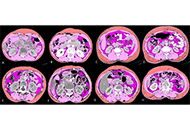 Exploring the implications of modified advanced lung cancer inflammation index on outcomes in patients with advanced non-small cell lung cancerOpen AccessOriginal ArticleAim: Sarcopenia and skeletal muscle density (SMD) have been shown to be both predictive and prognostic marker in oncology. Advanced lung cancer inflammation index (ALI) has been shown to predict ...Abhishek Mahajan ... Kumar PrabhashPublished: October 11, 2023 Explor Target Antitumor Ther. DOI: 10.37349/etat.2023.00172
Exploring the implications of modified advanced lung cancer inflammation index on outcomes in patients with advanced non-small cell lung cancerOpen AccessOriginal ArticleAim: Sarcopenia and skeletal muscle density (SMD) have been shown to be both predictive and prognostic marker in oncology. Advanced lung cancer inflammation index (ALI) has been shown to predict ...Abhishek Mahajan ... Kumar PrabhashPublished: October 11, 2023 Explor Target Antitumor Ther. DOI: 10.37349/etat.2023.00172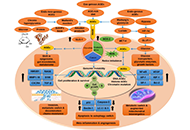 AGEs and RAGE: metabolic and molecular signatures of the glycation-inflammation axis in malignant or metastatic cancersOpen AccessReviewFrom attributing mutations to cancers with the advent of cutting-edge genetic technology in recent decades, to re-searching the age-old theory of intrinsic metabolic shift of cancers (Warburg’s gl...Gowri Palanissami, Solomon F.D. PaulPublished: September 28, 2023 Explor Target Antitumor Ther. DOI: 10.37349/etat.2023.00170
AGEs and RAGE: metabolic and molecular signatures of the glycation-inflammation axis in malignant or metastatic cancersOpen AccessReviewFrom attributing mutations to cancers with the advent of cutting-edge genetic technology in recent decades, to re-searching the age-old theory of intrinsic metabolic shift of cancers (Warburg’s gl...Gowri Palanissami, Solomon F.D. PaulPublished: September 28, 2023 Explor Target Antitumor Ther. DOI: 10.37349/etat.2023.00170 Malignant tumors of the external auditory canal: diagnosis, treatment, genetic landscape, biomarkers, and clinical outcomeOpen AccessReviewMalignant tumors of the external auditory canal (EAC) are rare neoplasms that appear in the head and neck area. A common feature of these malignancies is their rarity, as well as their delayed diagn...Pinelopi Samara ... Ioannis AthanasopoulosPublished: September 21, 2023 Explor Target Antitumor Ther. DOI: 10.37349/etat.2023.00169
Malignant tumors of the external auditory canal: diagnosis, treatment, genetic landscape, biomarkers, and clinical outcomeOpen AccessReviewMalignant tumors of the external auditory canal (EAC) are rare neoplasms that appear in the head and neck area. A common feature of these malignancies is their rarity, as well as their delayed diagn...Pinelopi Samara ... Ioannis AthanasopoulosPublished: September 21, 2023 Explor Target Antitumor Ther. DOI: 10.37349/etat.2023.00169 A single experience in the conduction of clinical trial during COronaVIrusDisease-2019 pandemicOpen AccessOriginal ArticleAim: From the start of the pandemic, several aspects of healthcare policies changed, not least the clinical trials management from recruiting capabilities to the protocol compliance in terms of s...Zelmira Ballatore ... Rossana BerardiPublished: September 07, 2023 Explor Target Antitumor Ther. DOI: 10.37349/etat.2023.00168
A single experience in the conduction of clinical trial during COronaVIrusDisease-2019 pandemicOpen AccessOriginal ArticleAim: From the start of the pandemic, several aspects of healthcare policies changed, not least the clinical trials management from recruiting capabilities to the protocol compliance in terms of s...Zelmira Ballatore ... Rossana BerardiPublished: September 07, 2023 Explor Target Antitumor Ther. DOI: 10.37349/etat.2023.00168 Aflatoxin B1-DNA adducts modify the effects of post-operative adjuvant transarterial chemoembolization improving hepatocellular carcinoma prognosisOpen AccessOriginal ArticleAim: DNA damage involves in the carcinogenesis of some cancer and may act as a target for therapeutic intervention of cancers. However, it is unclear whether aflatoxin B1 (AFB1)-DNA adducts (ADAs)...Liyan Huang ... Xidai LongPublished: August 31, 2023 Explor Target Antitumor Ther. DOI: 10.37349/etat.2023.00167
Aflatoxin B1-DNA adducts modify the effects of post-operative adjuvant transarterial chemoembolization improving hepatocellular carcinoma prognosisOpen AccessOriginal ArticleAim: DNA damage involves in the carcinogenesis of some cancer and may act as a target for therapeutic intervention of cancers. However, it is unclear whether aflatoxin B1 (AFB1)-DNA adducts (ADAs)...Liyan Huang ... Xidai LongPublished: August 31, 2023 Explor Target Antitumor Ther. DOI: 10.37349/etat.2023.00167 In silico targeting of colony-stimulating factor-1 receptor: delineating immunotherapy in cancerOpen AccessOriginal ArticleAim: Delineate structure-based inhibition of colony-stimulating factor-1 receptor (CSF1R) by small molecule CSF1R inhibitors in clinical development for target identification and potential lead o...Zahra Azhar ... Zohaib RazaPublished: August 31, 2023 Explor Target Antitumor Ther. DOI: 10.37349/etat.2023.00164
In silico targeting of colony-stimulating factor-1 receptor: delineating immunotherapy in cancerOpen AccessOriginal ArticleAim: Delineate structure-based inhibition of colony-stimulating factor-1 receptor (CSF1R) by small molecule CSF1R inhibitors in clinical development for target identification and potential lead o...Zahra Azhar ... Zohaib RazaPublished: August 31, 2023 Explor Target Antitumor Ther. DOI: 10.37349/etat.2023.00164 Retrospective immunophenotypical evaluation of MET, PD-1/PD-L1, and mTOR pathways in primary tumors and pulmonary metastases of renal cell carcinoma: the RIVELATOR study addresses the issue of biomarkers heterogeneityOpen AccessOriginal ArticleAim: In renal cell carcinoma (RCC), tumor heterogeneity generated challenges to biomarker development and therapeutic management, often becoming responsible for primary and acquired drug resistan...Melissa Bersanelli ... Luca AmpolliniPublished: August 31, 2023 Explor Target Antitumor Ther. DOI: 10.37349/etat.2023.00165
Retrospective immunophenotypical evaluation of MET, PD-1/PD-L1, and mTOR pathways in primary tumors and pulmonary metastases of renal cell carcinoma: the RIVELATOR study addresses the issue of biomarkers heterogeneityOpen AccessOriginal ArticleAim: In renal cell carcinoma (RCC), tumor heterogeneity generated challenges to biomarker development and therapeutic management, often becoming responsible for primary and acquired drug resistan...Melissa Bersanelli ... Luca AmpolliniPublished: August 31, 2023 Explor Target Antitumor Ther. DOI: 10.37349/etat.2023.00165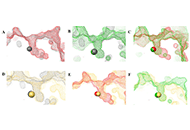 Medicinal chemistry advances in targeting class I histone deacetylasesOpen AccessReviewHistone deacetylases (HDACs) are a class of zinc (Zn)-dependent metalloenzymes that are responsible for epigenetic modifications. HDACs are largely associated with histone proteins that regulate gen...Diaaeldin I. Abdallah ... Patrick T. GunningPublished: August 31, 2023 Explor Target Antitumor Ther. DOI: 10.37349/etat.2023.00166
Medicinal chemistry advances in targeting class I histone deacetylasesOpen AccessReviewHistone deacetylases (HDACs) are a class of zinc (Zn)-dependent metalloenzymes that are responsible for epigenetic modifications. HDACs are largely associated with histone proteins that regulate gen...Diaaeldin I. Abdallah ... Patrick T. GunningPublished: August 31, 2023 Explor Target Antitumor Ther. DOI: 10.37349/etat.2023.00166 Nanomedicine strategies to counteract cancer stemness and chemoresistanceOpen AccessReviewCancer stem-like cells (CSCs) identified by self-renewal ability and tumor-initiating potential are responsible for tumor recurrence and metastasis in many cancers. Conventional chemotherapy fails t...Huayu Liu ... Ran MoPublished: August 30, 2023 Explor Target Antitumor Ther. DOI: 10.37349/etat.2023.00157
Nanomedicine strategies to counteract cancer stemness and chemoresistanceOpen AccessReviewCancer stem-like cells (CSCs) identified by self-renewal ability and tumor-initiating potential are responsible for tumor recurrence and metastasis in many cancers. Conventional chemotherapy fails t...Huayu Liu ... Ran MoPublished: August 30, 2023 Explor Target Antitumor Ther. DOI: 10.37349/etat.2023.00157 Deep learning based automated epidermal growth factor receptor and anaplastic lymphoma kinase status prediction of brain metastasis in non-small cell lung cancerOpen AccessOriginal ArticleAim: The aim of this study was to investigate the feasibility of developing a deep learning (DL) algorithm for classifying brain metastases from non-small cell lung cancer (NSCLC) into epidermal ...Abhishek Mahajan ... Kumar PrabhashPublished: August 30, 2023 Explor Target Antitumor Ther. DOI: 10.37349/etat.2023.00158
Deep learning based automated epidermal growth factor receptor and anaplastic lymphoma kinase status prediction of brain metastasis in non-small cell lung cancerOpen AccessOriginal ArticleAim: The aim of this study was to investigate the feasibility of developing a deep learning (DL) algorithm for classifying brain metastases from non-small cell lung cancer (NSCLC) into epidermal ...Abhishek Mahajan ... Kumar PrabhashPublished: August 30, 2023 Explor Target Antitumor Ther. DOI: 10.37349/etat.2023.00158 Deep learning based clinico-radiological model for paediatric brain tumor detection and subtype predictionOpen AccessOriginal ArticleAim: Early diagnosis of paediatric brain tumors significantly improves the outcome. The aim is to study magnetic resonance imaging (MRI) features of paediatric brain tumors and to develop an auto...Abhishek Mahajan ... Aliasgar MoiyadiPublished: August 30, 2023 Explor Target Antitumor Ther. DOI: 10.37349/etat.2023.00159
Deep learning based clinico-radiological model for paediatric brain tumor detection and subtype predictionOpen AccessOriginal ArticleAim: Early diagnosis of paediatric brain tumors significantly improves the outcome. The aim is to study magnetic resonance imaging (MRI) features of paediatric brain tumors and to develop an auto...Abhishek Mahajan ... Aliasgar MoiyadiPublished: August 30, 2023 Explor Target Antitumor Ther. DOI: 10.37349/etat.2023.00159 Artificial intelligence ethics in precision oncology: balancing advancements in technology with patient privacy and autonomyOpen AccessPerspectivePrecision oncology is a rapidly evolving field that uses advanced technologies to deliver personalized cancer care based on a patient’s unique genetic and clinical profile. The use of artificial i...Bahareh Farasati FarPublished: August 31, 2023 Explor Target Antitumor Ther. DOI: 10.37349/etat.2023.00160
Artificial intelligence ethics in precision oncology: balancing advancements in technology with patient privacy and autonomyOpen AccessPerspectivePrecision oncology is a rapidly evolving field that uses advanced technologies to deliver personalized cancer care based on a patient’s unique genetic and clinical profile. The use of artificial i...Bahareh Farasati FarPublished: August 31, 2023 Explor Target Antitumor Ther. DOI: 10.37349/etat.2023.00160 Anticancer action of naturally occurring emodin for the controlling of cervical cancerOpen AccessReviewOne of the major causes of death on the globe is cancer. The fourth most frequent malignancy in women worldwide is cervical cancer. Several cancer patients are remaining incurable due to the emergen...Priyanka S. Lande ... Leena P. JogePublished: August 31, 2023 Explor Target Antitumor Ther. DOI: 10.37349/etat.2023.00161
Anticancer action of naturally occurring emodin for the controlling of cervical cancerOpen AccessReviewOne of the major causes of death on the globe is cancer. The fourth most frequent malignancy in women worldwide is cervical cancer. Several cancer patients are remaining incurable due to the emergen...Priyanka S. Lande ... Leena P. JogePublished: August 31, 2023 Explor Target Antitumor Ther. DOI: 10.37349/etat.2023.00161 Clinical and mutational profile of AT-rich interaction domain 1A-mutated cancersOpen AccessOriginal ArticleAim: AT-rich interaction domain 1A (ARID1A) encodes a key component of the SWItch/Sucrose Non-Fermentable (SWI/SNF) chromatin remodeling complex that participates in gene expression. ARID1A alter...Rosa Falcone ... Gennaro DanielePublished: August 31, 2023 Explor Target Antitumor Ther. DOI: 10.37349/etat.2023.00163
Clinical and mutational profile of AT-rich interaction domain 1A-mutated cancersOpen AccessOriginal ArticleAim: AT-rich interaction domain 1A (ARID1A) encodes a key component of the SWItch/Sucrose Non-Fermentable (SWI/SNF) chromatin remodeling complex that participates in gene expression. ARID1A alter...Rosa Falcone ... Gennaro DanielePublished: August 31, 2023 Explor Target Antitumor Ther. DOI: 10.37349/etat.2023.00163 Protein ISGylation: a posttranslational modification with implications for malignant neoplasmsOpen AccessReviewInterferon (IFN)-stimulated gene 15 (ISG15) is a member of the ubiquitin-like (UBL) protein family that can modify specific proteins via a catalytic process called ISGylation. This posttranslational...Angeles C. Tecalco-Cruz, Jesús Zepeda-CervantesPublished: August 31, 2023 Explor Target Antitumor Ther. DOI: 10.37349/etat.2023.00162
Protein ISGylation: a posttranslational modification with implications for malignant neoplasmsOpen AccessReviewInterferon (IFN)-stimulated gene 15 (ISG15) is a member of the ubiquitin-like (UBL) protein family that can modify specific proteins via a catalytic process called ISGylation. This posttranslational...Angeles C. Tecalco-Cruz, Jesús Zepeda-CervantesPublished: August 31, 2023 Explor Target Antitumor Ther. DOI: 10.37349/etat.2023.00162 Nuclear epidermal growth factor receptor as a therapeutic targetOpen AccessReviewEpidermal growth factor receptor (EGFR) is one of the most well-studied oncogenes with roles in proliferation, growth, metastasis, and therapeutic resistance. This intense study has led to the devel...Benjamin Atwell ... Joyce SchroederPublished: August 30, 2023 Explor Target Antitumor Ther. DOI: 10.37349/etat.2023.00156
Nuclear epidermal growth factor receptor as a therapeutic targetOpen AccessReviewEpidermal growth factor receptor (EGFR) is one of the most well-studied oncogenes with roles in proliferation, growth, metastasis, and therapeutic resistance. This intense study has led to the devel...Benjamin Atwell ... Joyce SchroederPublished: August 30, 2023 Explor Target Antitumor Ther. DOI: 10.37349/etat.2023.00156 Aspirin and the metabolic hallmark of cancer: novel therapeutic opportunities for colorectal cancerOpen AccessReviewAspirin is a well-known nonsteroidal anti-inflammatory drug (NSAID) that has a recognized role in cancer prevention as well as evidence to support its use as an adjuvant for cancer treatment. Import...Ashley J. Hoskin ... Emma E. VincentPublished: August 28, 2023 Explor Target Antitumor Ther. DOI: 10.37349/etat.2023.00155
Aspirin and the metabolic hallmark of cancer: novel therapeutic opportunities for colorectal cancerOpen AccessReviewAspirin is a well-known nonsteroidal anti-inflammatory drug (NSAID) that has a recognized role in cancer prevention as well as evidence to support its use as an adjuvant for cancer treatment. Import...Ashley J. Hoskin ... Emma E. VincentPublished: August 28, 2023 Explor Target Antitumor Ther. DOI: 10.37349/etat.2023.00155 Potential tactics with certain gut microbiota for the treatment of unresectable hepatocellular carcinomaOpen AccessPerspectiveHepatocellular carcinoma (HCC) constitutes an extremely malignant form of primary liver cancer. Intricate connections linking to the immune system might be associated with the pathogenesis of HCC. M...Sayuri Yoshikawa ... Satoru MatsudaPublished: August 24, 2023 Explor Target Antitumor Ther. DOI: 10.37349/etat.2023.00152
Potential tactics with certain gut microbiota for the treatment of unresectable hepatocellular carcinomaOpen AccessPerspectiveHepatocellular carcinoma (HCC) constitutes an extremely malignant form of primary liver cancer. Intricate connections linking to the immune system might be associated with the pathogenesis of HCC. M...Sayuri Yoshikawa ... Satoru MatsudaPublished: August 24, 2023 Explor Target Antitumor Ther. DOI: 10.37349/etat.2023.00152 Emerging role of quantitative imaging (radiomics) and artificial intelligence in precision oncologyOpen AccessReviewCancer is a fatal disease and the second most cause of death worldwide. Treatment of cancer is a complex process and requires a multi-modality-based approach. Cancer detection and treatment starts w...Ashish Kumar Jha ... Andre DekkerPublished: August 24, 2023 Explor Target Antitumor Ther. DOI: 10.37349/etat.2023.00153
Emerging role of quantitative imaging (radiomics) and artificial intelligence in precision oncologyOpen AccessReviewCancer is a fatal disease and the second most cause of death worldwide. Treatment of cancer is a complex process and requires a multi-modality-based approach. Cancer detection and treatment starts w...Ashish Kumar Jha ... Andre DekkerPublished: August 24, 2023 Explor Target Antitumor Ther. DOI: 10.37349/etat.2023.00153 B-cell lymphoma 2 family members and sarcomas: a promising target in a heterogeneous diseaseOpen AccessReviewTargeting the B-cell lymphoma 2 (Bcl-2) family proteins has been the backbone for hematological malignancies with overall survival improvements. The Bcl-2 family is a major player in apoptosis regul...Rui Caetano Oliveira ... José CasanovaPublished: August 24, 2023 Explor Target Antitumor Ther. DOI: 10.37349/etat.2023.00154
B-cell lymphoma 2 family members and sarcomas: a promising target in a heterogeneous diseaseOpen AccessReviewTargeting the B-cell lymphoma 2 (Bcl-2) family proteins has been the backbone for hematological malignancies with overall survival improvements. The Bcl-2 family is a major player in apoptosis regul...Rui Caetano Oliveira ... José CasanovaPublished: August 24, 2023 Explor Target Antitumor Ther. DOI: 10.37349/etat.2023.00154 Current role of machine learning and radiogenomics in precision neuro-oncologyOpen AccessReviewIn the past few years, artificial intelligence (AI) has been increasingly used to create tools that can enhance workflow in medicine. In particular, neuro-oncology has benefited from the use of AI a...Teresa Perillo ... Andrea MantoPublished: July 19, 2023 Explor Target Antitumor Ther. DOI: 10.37349/etat.2023.00151
Current role of machine learning and radiogenomics in precision neuro-oncologyOpen AccessReviewIn the past few years, artificial intelligence (AI) has been increasingly used to create tools that can enhance workflow in medicine. In particular, neuro-oncology has benefited from the use of AI a...Teresa Perillo ... Andrea MantoPublished: July 19, 2023 Explor Target Antitumor Ther. DOI: 10.37349/etat.2023.00151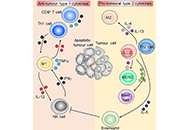 Type 1 and type 2 cytokine-mediated immune orchestration in the tumour microenvironment and their therapeutic potentialOpen AccessReviewCancer remains the second leading cause of death worldwide despite modern breakthroughs in medicine, and novel treatments are urgently needed. The revolutionary success of immune checkpoint inhibito...Eric JouPublished: June 30, 2023 Explor Target Antitumor Ther. DOI: 10.37349/etat.2023.00146
Type 1 and type 2 cytokine-mediated immune orchestration in the tumour microenvironment and their therapeutic potentialOpen AccessReviewCancer remains the second leading cause of death worldwide despite modern breakthroughs in medicine, and novel treatments are urgently needed. The revolutionary success of immune checkpoint inhibito...Eric JouPublished: June 30, 2023 Explor Target Antitumor Ther. DOI: 10.37349/etat.2023.00146 Spontaneous regression of a metastatic carcinoma transmitted by a kidney graftOpen AccessCase ReportTransmission of a malignancy from a donor’s organ to the recipient of the graft is a rare event, though it is a severe complication that can result in a poor outcome. Usually, immunosuppressive th...Mikhail V. Kiselevskiy ... Irina Zh. ShubinaPublished: June 30, 2023 Explor Target Antitumor Ther. DOI: 10.37349/etat.2023.00148
Spontaneous regression of a metastatic carcinoma transmitted by a kidney graftOpen AccessCase ReportTransmission of a malignancy from a donor’s organ to the recipient of the graft is a rare event, though it is a severe complication that can result in a poor outcome. Usually, immunosuppressive th...Mikhail V. Kiselevskiy ... Irina Zh. ShubinaPublished: June 30, 2023 Explor Target Antitumor Ther. DOI: 10.37349/etat.2023.00148 Increasing differential diagnosis between lipoma and liposarcoma through radiomics: a narrative reviewOpen AccessReviewSoft tissue sarcomas (STSs) are rare, heterogeneous, and very often asymptomatic diseases. Their diagnosis is fundamental, as is the identification of the degree of malignancy, which may be high, me...Raffaele Natella ... Antonella SantonePublished: June 30, 2023 Explor Target Antitumor Ther. DOI: 10.37349/etat.2023.00147
Increasing differential diagnosis between lipoma and liposarcoma through radiomics: a narrative reviewOpen AccessReviewSoft tissue sarcomas (STSs) are rare, heterogeneous, and very often asymptomatic diseases. Their diagnosis is fundamental, as is the identification of the degree of malignancy, which may be high, me...Raffaele Natella ... Antonella SantonePublished: June 30, 2023 Explor Target Antitumor Ther. DOI: 10.37349/etat.2023.00147 Glucose metabolism reprogramming promotes immune escape of hepatocellular carcinoma cellsOpen AccessReviewHepatocellular carcinoma (HCC) is a complex process that plays an important role in its progression. Abnormal glucose metabolism in HCC cells can meet the nutrients required for the occurrence and d...Qiuyue Zhang ... Mengsen LiPublished: June 30, 2023 Explor Target Antitumor Ther. DOI: 10.37349/etat.2023.00149
Glucose metabolism reprogramming promotes immune escape of hepatocellular carcinoma cellsOpen AccessReviewHepatocellular carcinoma (HCC) is a complex process that plays an important role in its progression. Abnormal glucose metabolism in HCC cells can meet the nutrients required for the occurrence and d...Qiuyue Zhang ... Mengsen LiPublished: June 30, 2023 Explor Target Antitumor Ther. DOI: 10.37349/etat.2023.00149 An introductory review of post-resection chemotherapeutics for primary brain tumorsOpen AccessReviewThe treatment of central nervous system (CNS) tumors is complicated by high rates of recurrence and treatment resistance that contribute to high morbidity and mortality (Nat Rev Neurol. 2022;18:221...Meaghan McGovern ... Brandon Lucke-WoldPublished: June 30, 2023 Explor Target Antitumor Ther. DOI: 10.37349/etat.2023.00150
An introductory review of post-resection chemotherapeutics for primary brain tumorsOpen AccessReviewThe treatment of central nervous system (CNS) tumors is complicated by high rates of recurrence and treatment resistance that contribute to high morbidity and mortality (Nat Rev Neurol. 2022;18:221...Meaghan McGovern ... Brandon Lucke-WoldPublished: June 30, 2023 Explor Target Antitumor Ther. DOI: 10.37349/etat.2023.00150 Artificial intelligence and radiomics in magnetic resonance imaging of rectal cancer: a reviewOpen AccessReviewRectal cancer (RC) is one of the most common tumours worldwide in both males and females, with significant morbidity and mortality rates, and it accounts for approximately one-third of colorectal ca...Giuseppe Di Costanzo ... Enrico CavagliàPublished: June 30, 2023 Explor Target Antitumor Ther. DOI: 10.37349/etat.2023.00142
Artificial intelligence and radiomics in magnetic resonance imaging of rectal cancer: a reviewOpen AccessReviewRectal cancer (RC) is one of the most common tumours worldwide in both males and females, with significant morbidity and mortality rates, and it accounts for approximately one-third of colorectal ca...Giuseppe Di Costanzo ... Enrico CavagliàPublished: June 30, 2023 Explor Target Antitumor Ther. DOI: 10.37349/etat.2023.00142 Liquid biopsy: an examination of platelet RNA obtained from head and neck squamous cell carcinoma patients for predictive molecular tumor markersOpen AccessOriginal ArticleAim: Recently, a tumor cell-platelet interaction was identified in different tumor entities, resulting in a transfer of tumor-derived RNA into platelets, named further “tumor-educated platelets...Lisa T. Huber ... Cornelia BrunnerPublished: June 30, 2023 Explor Target Antitumor Ther. DOI: 10.37349/etat.2023.00143
Liquid biopsy: an examination of platelet RNA obtained from head and neck squamous cell carcinoma patients for predictive molecular tumor markersOpen AccessOriginal ArticleAim: Recently, a tumor cell-platelet interaction was identified in different tumor entities, resulting in a transfer of tumor-derived RNA into platelets, named further “tumor-educated platelets...Lisa T. Huber ... Cornelia BrunnerPublished: June 30, 2023 Explor Target Antitumor Ther. DOI: 10.37349/etat.2023.00143 Continuous enzyme activity assay for high-throughput classification of histone deacetylase 8 inhibitorsOpen AccessOriginal ArticleAim: Human histone deacetylase 8 (KDAC8) is a well-recognized pharmaceutical target in Cornelia de Lange syndrome and different types of cancer, particularly childhood neuroblastoma. Several clas...Markus Schweipert ... Franz-Josef Meyer-AlmesPublished: June 30, 2023 Explor Target Antitumor Ther. DOI: 10.37349/etat.2023.00144
Continuous enzyme activity assay for high-throughput classification of histone deacetylase 8 inhibitorsOpen AccessOriginal ArticleAim: Human histone deacetylase 8 (KDAC8) is a well-recognized pharmaceutical target in Cornelia de Lange syndrome and different types of cancer, particularly childhood neuroblastoma. Several clas...Markus Schweipert ... Franz-Josef Meyer-AlmesPublished: June 30, 2023 Explor Target Antitumor Ther. DOI: 10.37349/etat.2023.00144 Potential tactics with vitamin D and certain phytochemicals for enhancing the effectiveness of immune-checkpoint blockade therapiesOpen AccessPerspectiveImmunotherapy strategies targeting immune checkpoint molecules such as programmed cell death-1 (PD-1) and cytotoxic T-lymphocyte-associated protein-4 (CTLA-4) are revolutionizing oncology. However, ...Ai Tsuji ... Satoru MatsudaPublished: June 30, 2023 Explor Target Antitumor Ther. DOI: 10.37349/etat.2023.00145
Potential tactics with vitamin D and certain phytochemicals for enhancing the effectiveness of immune-checkpoint blockade therapiesOpen AccessPerspectiveImmunotherapy strategies targeting immune checkpoint molecules such as programmed cell death-1 (PD-1) and cytotoxic T-lymphocyte-associated protein-4 (CTLA-4) are revolutionizing oncology. However, ...Ai Tsuji ... Satoru MatsudaPublished: June 30, 2023 Explor Target Antitumor Ther. DOI: 10.37349/etat.2023.00145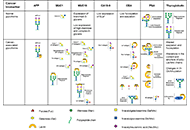 Capitalizing glycomic changes for improved biomarker-based cancer diagnosticsOpen AccessReviewCancer serum biomarkers are valuable or even indispensable for cancer diagnostics and/or monitoring and, currently, many cancer serum markers are routinely used in the clinic. Most of those markers ...Maria Luísa S. SilvaPublished: June 28, 2023 Explor Target Antitumor Ther. DOI: 10.37349/etat.2023.00140
Capitalizing glycomic changes for improved biomarker-based cancer diagnosticsOpen AccessReviewCancer serum biomarkers are valuable or even indispensable for cancer diagnostics and/or monitoring and, currently, many cancer serum markers are routinely used in the clinic. Most of those markers ...Maria Luísa S. SilvaPublished: June 28, 2023 Explor Target Antitumor Ther. DOI: 10.37349/etat.2023.00140 Real world outcomes in patients with neuroendocrine tumor receiving peptide receptor radionucleotide therapyOpen AccessOriginal ArticleAim: 177Lu-Dotatate (Lu-177), a form of peptide receptor radionuclide therapy (PRRT), was approved by Food and Drug Administration (FDA) for the treatment of somatostatin-receptor-positive neur...Stijn Hentzen ... Anup KasiPublished: June 29, 2023 Explor Target Antitumor Ther. DOI: 10.37349/etat.2023.00141
Real world outcomes in patients with neuroendocrine tumor receiving peptide receptor radionucleotide therapyOpen AccessOriginal ArticleAim: 177Lu-Dotatate (Lu-177), a form of peptide receptor radionuclide therapy (PRRT), was approved by Food and Drug Administration (FDA) for the treatment of somatostatin-receptor-positive neur...Stijn Hentzen ... Anup KasiPublished: June 29, 2023 Explor Target Antitumor Ther. DOI: 10.37349/etat.2023.00141 Transforming growth factor-β signaling: from tumor microenvironment to anticancer therapyOpen AccessReviewTransforming growth factor-β (TGF-β) signaling is an important pathway for promoting the pathogenesis of inflammatory diseases, including cancer. The roles of TGF-β signaling are heterogeneous and versatile in cancer development and progression, both anticancer and protumoral actions are reported. Interestingly, increasing evidence suggests that TGF-β enhances disease progression and drug resistance via immune-modulatory actions in the tumor microenvironment (TME) of solid tumors. A better understanding of its regulatory mechanisms in the TME at the molecular level can facilitate the development of precision medicine to block the protumoral actions of TGF-β in the TME. Here, the latest information about the regulatory mechanisms and translational research of TGF-β signaling in the TME for therapeutic development had been summarized....Max Kam-Kwan Chan ... Patrick Ming-Kuen TangPublished: April 28, 2023 Explor Target Antitumor Ther. DOI: 10.37349/etat.2023.00137
Transforming growth factor-β signaling: from tumor microenvironment to anticancer therapyOpen AccessReviewTransforming growth factor-β (TGF-β) signaling is an important pathway for promoting the pathogenesis of inflammatory diseases, including cancer. The roles of TGF-β signaling are heterogeneous and versatile in cancer development and progression, both anticancer and protumoral actions are reported. Interestingly, increasing evidence suggests that TGF-β enhances disease progression and drug resistance via immune-modulatory actions in the tumor microenvironment (TME) of solid tumors. A better understanding of its regulatory mechanisms in the TME at the molecular level can facilitate the development of precision medicine to block the protumoral actions of TGF-β in the TME. Here, the latest information about the regulatory mechanisms and translational research of TGF-β signaling in the TME for therapeutic development had been summarized....Max Kam-Kwan Chan ... Patrick Ming-Kuen TangPublished: April 28, 2023 Explor Target Antitumor Ther. DOI: 10.37349/etat.2023.00137 Role of artificial intelligence in oncologic emergencies: a narrative reviewOpen AccessReviewOncologic emergencies are a wide spectrum of oncologic conditions caused directly by malignancies or their treatment. Oncologic emergencies may be classified according to the underlying physiopathol...Salvatore Claudio Fanni ... Emanuele NeriPublished: April 28, 2023 Explor Target Antitumor Ther. DOI: 10.37349/etat.2023.00138
Role of artificial intelligence in oncologic emergencies: a narrative reviewOpen AccessReviewOncologic emergencies are a wide spectrum of oncologic conditions caused directly by malignancies or their treatment. Oncologic emergencies may be classified according to the underlying physiopathol...Salvatore Claudio Fanni ... Emanuele NeriPublished: April 28, 2023 Explor Target Antitumor Ther. DOI: 10.37349/etat.2023.00138 Small cell lung cancer: circulating tumor cell lines and expression of mediators of angiogenesis and coagulationOpen AccessOriginal ArticleAim: Coagulation is frequently activated in cancer patients and has been correlated with an unfavorable prognosis. To evaluate whether a putative release of tissue factor (TF) by circulating tumor ...Barbara Rath ... Gerhard HamiltonPublished: April 28, 2023 Explor Target Antitumor Ther. DOI: 10.37349/etat.2023.00139
Small cell lung cancer: circulating tumor cell lines and expression of mediators of angiogenesis and coagulationOpen AccessOriginal ArticleAim: Coagulation is frequently activated in cancer patients and has been correlated with an unfavorable prognosis. To evaluate whether a putative release of tissue factor (TF) by circulating tumor ...Barbara Rath ... Gerhard HamiltonPublished: April 28, 2023 Explor Target Antitumor Ther. DOI: 10.37349/etat.2023.00139 Development and validation of an infrared-artificial intelligence software for breast cancer detectionOpen AccessOriginal ArticleAim: In countries where access to mammography equipment and skilled personnel is limited, most breast cancer (BC) cases are detected in locally advanced stages. Infrared breast thermography is reco...Enrique Martín-Del-Campo-Mena ... Yessica González-MejíaPublished: April 27, 2023 Explor Target Antitumor Ther. DOI: 10.37349/etat.2023.00135
Development and validation of an infrared-artificial intelligence software for breast cancer detectionOpen AccessOriginal ArticleAim: In countries where access to mammography equipment and skilled personnel is limited, most breast cancer (BC) cases are detected in locally advanced stages. Infrared breast thermography is reco...Enrique Martín-Del-Campo-Mena ... Yessica González-MejíaPublished: April 27, 2023 Explor Target Antitumor Ther. DOI: 10.37349/etat.2023.00135 Anticancer of genus Syzygium: a systematic reviewOpen AccessSystematic ReviewAim: One in eight fatalities globally are considered cancer-related. The need for cancer therapy is growing. Natural products continue to play a role in drug development, as up to 50% of authorized...Mahmoud Dogara Abdulrahman, Harmand A. HamaPublished: April 27, 2023 Explor Target Antitumor Ther. DOI: 10.37349/etat.2023.00134
Anticancer of genus Syzygium: a systematic reviewOpen AccessSystematic ReviewAim: One in eight fatalities globally are considered cancer-related. The need for cancer therapy is growing. Natural products continue to play a role in drug development, as up to 50% of authorized...Mahmoud Dogara Abdulrahman, Harmand A. HamaPublished: April 27, 2023 Explor Target Antitumor Ther. DOI: 10.37349/etat.2023.00134 Complete response to third-line treatment with trifluridine/tipiracil (TAS-102) in stage IV colon adenocarcinomaOpen AccessCase ReportA clinical case of a 61-year-old female diagnosed with stage IV right colon adenocarcinoma (unresectable liver and multiple lymph node metastases at the time of diagnosis), Kirsten rat sarcoma viral...Celia Lara-Morga ... Luis Cabezón-GutiérrezPublished: April 27, 2023 Explor Target Antitumor Ther. DOI: 10.37349/etat.2023.00136
Complete response to third-line treatment with trifluridine/tipiracil (TAS-102) in stage IV colon adenocarcinomaOpen AccessCase ReportA clinical case of a 61-year-old female diagnosed with stage IV right colon adenocarcinoma (unresectable liver and multiple lymph node metastases at the time of diagnosis), Kirsten rat sarcoma viral...Celia Lara-Morga ... Luis Cabezón-GutiérrezPublished: April 27, 2023 Explor Target Antitumor Ther. DOI: 10.37349/etat.2023.00136 Cystic presentation of primary hepatic neuroendocrine tumour: a case report with a brief review of literatureOpen AccessCase ReportNeuroendocrine tumours (NETs) are a rare type of tumours that arise from the neuroendocrine cells which are distributed throughout the body. Of all the gastrointestinal tumours only 1–2% account for NETs. They have an extremely low incidence of 0.17% arising in the intrahepatic bile duct epithelium. Majority of hepatic NETs occur as a result of metastases from the primary NETs. Most cases of primary hepatic NET (PHNET) present as a solid nodular mass. However, predominantly cystic PHNET is extremely rare which mimics other cystic space-occupying lesions clinically and radiologically as seen in this case....Mangesh Londhe ... Charusheela GorePublished: April 26, 2023 Explor Target Antitumor Ther. DOI: 10.37349/etat.2023.00133
Cystic presentation of primary hepatic neuroendocrine tumour: a case report with a brief review of literatureOpen AccessCase ReportNeuroendocrine tumours (NETs) are a rare type of tumours that arise from the neuroendocrine cells which are distributed throughout the body. Of all the gastrointestinal tumours only 1–2% account for NETs. They have an extremely low incidence of 0.17% arising in the intrahepatic bile duct epithelium. Majority of hepatic NETs occur as a result of metastases from the primary NETs. Most cases of primary hepatic NET (PHNET) present as a solid nodular mass. However, predominantly cystic PHNET is extremely rare which mimics other cystic space-occupying lesions clinically and radiologically as seen in this case....Mangesh Londhe ... Charusheela GorePublished: April 26, 2023 Explor Target Antitumor Ther. DOI: 10.37349/etat.2023.00133 Gut microbiota, an emergent target to shape the efficiency of cancer therapyOpen AccessReviewIt is now well-acknowledged that microbiota has a profound influence on both human health and illness. The gut microbiota has recently come to light as a crucial element that influences cancer throu...Soumaya Kouidhi ... Amel Ben Ammar El GaaiedPublished: April 26, 2023 Explor Target Antitumor Ther. DOI: 10.37349/etat.2023.00132
Gut microbiota, an emergent target to shape the efficiency of cancer therapyOpen AccessReviewIt is now well-acknowledged that microbiota has a profound influence on both human health and illness. The gut microbiota has recently come to light as a crucial element that influences cancer throu...Soumaya Kouidhi ... Amel Ben Ammar El GaaiedPublished: April 26, 2023 Explor Target Antitumor Ther. DOI: 10.37349/etat.2023.00132 A potent bioactive fraction against colon cancer from Plectranthus vettiveroidesOpen AccessOriginal ArticleAim: This study was designed to investigate the anticancer efficacy of the organic leaf extracts of the plant, Plectranthus vettiveroides (P. vettiveroides), and to analyze the molecular mechanism ...Faisal M. Athikkavil ... Smitha V. BavaPublished: April 24, 2023 Explor Target Antitumor Ther. DOI: 10.37349/etat.2023.00131
A potent bioactive fraction against colon cancer from Plectranthus vettiveroidesOpen AccessOriginal ArticleAim: This study was designed to investigate the anticancer efficacy of the organic leaf extracts of the plant, Plectranthus vettiveroides (P. vettiveroides), and to analyze the molecular mechanism ...Faisal M. Athikkavil ... Smitha V. BavaPublished: April 24, 2023 Explor Target Antitumor Ther. DOI: 10.37349/etat.2023.00131 Clinicopathological relevance of stem cell marker growth and differentiation factor 3 in esophageal squamous cell carcinomaOpen AccessLetter to the EditorEsophageal squamous cell carcinoma (ESCC) is the second leading cause of cancer-related deaths in Iran, often diagnosed in advanced stages with a poor prognosis. Growth and differentiation factor 3 ...Sara Tahbazzadeh Moghaddam, Mohammad Mahdi ForghanifardPublished: April 24, 2023 Explor Target Antitumor Ther. DOI: 10.37349/etat.2023.00130
Clinicopathological relevance of stem cell marker growth and differentiation factor 3 in esophageal squamous cell carcinomaOpen AccessLetter to the EditorEsophageal squamous cell carcinoma (ESCC) is the second leading cause of cancer-related deaths in Iran, often diagnosed in advanced stages with a poor prognosis. Growth and differentiation factor 3 ...Sara Tahbazzadeh Moghaddam, Mohammad Mahdi ForghanifardPublished: April 24, 2023 Explor Target Antitumor Ther. DOI: 10.37349/etat.2023.00130 Cancer resistance via the downregulation of the tumor suppressors RKIP and PTEN expressions: therapeutic implicationsOpen AccessReviewThe Raf kinase inhibitor protein (RKIP) has been reported to be underexpressed in many cancers and plays a role in the regulation of tumor cells' survival, proliferation, invasion, and me...Matthew Moghaddam ... Benjamin BonavidaPublished: April 20, 2023 Explor Target Antitumor Ther. DOI: 10.37349/etat.2023.00128
Cancer resistance via the downregulation of the tumor suppressors RKIP and PTEN expressions: therapeutic implicationsOpen AccessReviewThe Raf kinase inhibitor protein (RKIP) has been reported to be underexpressed in many cancers and plays a role in the regulation of tumor cells' survival, proliferation, invasion, and me...Matthew Moghaddam ... Benjamin BonavidaPublished: April 20, 2023 Explor Target Antitumor Ther. DOI: 10.37349/etat.2023.00128 Ginnalin A and hamamelitannin: the unique gallotannins with promising anti-carcinogenic potentialOpen AccessReviewTannins are secondary metabolites that belong to the family of polyphenolic compounds and have gained a huge interest among researchers due to their versatile therapeutic potential. After lignin, th...Rippin ... Anil K. SharmaPublished: April 21, 2023 Explor Target Antitumor Ther. DOI: 10.37349/etat.2023.00129
Ginnalin A and hamamelitannin: the unique gallotannins with promising anti-carcinogenic potentialOpen AccessReviewTannins are secondary metabolites that belong to the family of polyphenolic compounds and have gained a huge interest among researchers due to their versatile therapeutic potential. After lignin, th...Rippin ... Anil K. SharmaPublished: April 21, 2023 Explor Target Antitumor Ther. DOI: 10.37349/etat.2023.00129 Diagnostic value of liquid biopsy in the era of precision medicine: 10 years of clinical evidence in cancerOpen AccessReviewLiquid biopsy is a diagnostic repeatable test, which in last years has emerged as a powerful tool for profiling cancer genomes in real-time with minimal invasiveness and tailoring oncological decisi...Vincenza Caputo ... Stefania NapolitanoPublished: February 28, 2023 Explor Target Antitumor Ther DOI: 10.37349/etat.2023.00125
Diagnostic value of liquid biopsy in the era of precision medicine: 10 years of clinical evidence in cancerOpen AccessReviewLiquid biopsy is a diagnostic repeatable test, which in last years has emerged as a powerful tool for profiling cancer genomes in real-time with minimal invasiveness and tailoring oncological decisi...Vincenza Caputo ... Stefania NapolitanoPublished: February 28, 2023 Explor Target Antitumor Ther DOI: 10.37349/etat.2023.00125 Research progress in molecular pathology markers in medulloblastomaOpen AccessReviewMedulloblastoma (MB) is the commonest primary malignant brain cancer. The current treatment of MB is usually surgical resection combined with radiotherapy or chemotherapy. Although great...Zixuan Zhou ... Shangfeng GaoPublished: February 28, 2023 Explor Target Antitumor Ther. DOI: 10.37349/etat.2023.00126
Research progress in molecular pathology markers in medulloblastomaOpen AccessReviewMedulloblastoma (MB) is the commonest primary malignant brain cancer. The current treatment of MB is usually surgical resection combined with radiotherapy or chemotherapy. Although great...Zixuan Zhou ... Shangfeng GaoPublished: February 28, 2023 Explor Target Antitumor Ther. DOI: 10.37349/etat.2023.00126 Artificial intelligence applications in pediatric oncology diagnosisOpen AccessReviewArtificial intelligence (AI) algorithms have been applied in abundant medical tasks with high accuracy and efficiency. Physicians can improve their diagnostic efficiency with the assistance of AI techniques for improving the subsequent personalized treatment and surveillance. AI algorithms fundamentally capture data, identify underlying patterns, achieve preset endpoints, and provide decisions and predictions about real-world events with working principles of machine learning and deep learning. AI algorithms with sufficient graphic processing unit power have been demonstrated to provide timely diagnostic references based on preliminary training of large amounts of clinical and imaging data. The sample size issue is an inevitable challenge for pediatric oncology considering its low morbidity and individual heterogeneity. However, this problem may be solved in the near future considering the exponential advancements of AI algorithms technically to decrease the dependence of AI operation on the amount of data sets and the efficiency of computing power. For instance, it could be a feasible solution by shifting convolutional neural networks (CNNs) from adults and sharing CNN algorithms across multiple institutions besides original data. The present review provides important insights into emerging AI applications for the diagnosis of pediatric oncology by systematically overviewing of up-to-date literature....Yuhan Yang ... Yuan LiPublished: February 28, 2023 Explor Target Antitumor Ther. DOI: 10.37349/etat.2023.00127
Artificial intelligence applications in pediatric oncology diagnosisOpen AccessReviewArtificial intelligence (AI) algorithms have been applied in abundant medical tasks with high accuracy and efficiency. Physicians can improve their diagnostic efficiency with the assistance of AI techniques for improving the subsequent personalized treatment and surveillance. AI algorithms fundamentally capture data, identify underlying patterns, achieve preset endpoints, and provide decisions and predictions about real-world events with working principles of machine learning and deep learning. AI algorithms with sufficient graphic processing unit power have been demonstrated to provide timely diagnostic references based on preliminary training of large amounts of clinical and imaging data. The sample size issue is an inevitable challenge for pediatric oncology considering its low morbidity and individual heterogeneity. However, this problem may be solved in the near future considering the exponential advancements of AI algorithms technically to decrease the dependence of AI operation on the amount of data sets and the efficiency of computing power. For instance, it could be a feasible solution by shifting convolutional neural networks (CNNs) from adults and sharing CNN algorithms across multiple institutions besides original data. The present review provides important insights into emerging AI applications for the diagnosis of pediatric oncology by systematically overviewing of up-to-date literature....Yuhan Yang ... Yuan LiPublished: February 28, 2023 Explor Target Antitumor Ther. DOI: 10.37349/etat.2023.00127 Enhancement of reactive oxygen species production in triple negative breast cancer cells treated with electric pulses and resveratrolOpen AccessOriginal ArticleAim: Triple negative breast cancer (TNBC) is difficult to treat since it lacks all the three most commonly targeted hormone receptors. Patients afflicted with TNBC are treated with platinum core ...Pragatheiswar Giri ... Raji SundararajanPublished: February 28, 2023 Explor Target Antitumor Ther. DOI: 10.37349/etat.2023.00122
Enhancement of reactive oxygen species production in triple negative breast cancer cells treated with electric pulses and resveratrolOpen AccessOriginal ArticleAim: Triple negative breast cancer (TNBC) is difficult to treat since it lacks all the three most commonly targeted hormone receptors. Patients afflicted with TNBC are treated with platinum core ...Pragatheiswar Giri ... Raji SundararajanPublished: February 28, 2023 Explor Target Antitumor Ther. DOI: 10.37349/etat.2023.00122 Crude extract of Ficus deltoidea Jack (FD) as a natural biological therapyOpen AccessSystematic ReviewAim: This study shows how important it is to coordinate research on Ficus deltoidea Jack (FD) so that results from different sources can be compared directly and a scientific conclusion can be made. Methods: The author looked for research papers on Ficus (F.) deltoidea on Google Scholar, Science Direct, Google.com, Wiley, PubMed, Hindawi, Springer, and other related databases. This analysis excludes data that cannot be trusted, thesis papers, and review articles about F. deltoidea. Results: In traditional medicine, the plant’s leaves and syconia are used to cure a wide variety of ailments, including itchiness, diarrhoea, cancer, sexual dysfunction, age-related issues, malaria, cancer, anxiety, pain, constipation, fever, diabetes, tooth pain, and tooth decay. In vitro and in vivo studies showed the effectiveness of the leaves against cancer cell lines. Conclusions: Based on the existing research on the health benefits of FD, it is critical to focus on its more active constituents and their identification, determination, further development, and, most importantly, standardization of the leaves for the management and treatment of cancer and its related cases. More research is needed before it can be considered a promising herbal source of novel medication candidates for treating various disorders....Mahmoud Dogara AbdulrahmanPublished: February 28, 2023 Explor Target Antitumor Ther. DOI: 10.37349/etat.2023.00123
Crude extract of Ficus deltoidea Jack (FD) as a natural biological therapyOpen AccessSystematic ReviewAim: This study shows how important it is to coordinate research on Ficus deltoidea Jack (FD) so that results from different sources can be compared directly and a scientific conclusion can be made. Methods: The author looked for research papers on Ficus (F.) deltoidea on Google Scholar, Science Direct, Google.com, Wiley, PubMed, Hindawi, Springer, and other related databases. This analysis excludes data that cannot be trusted, thesis papers, and review articles about F. deltoidea. Results: In traditional medicine, the plant’s leaves and syconia are used to cure a wide variety of ailments, including itchiness, diarrhoea, cancer, sexual dysfunction, age-related issues, malaria, cancer, anxiety, pain, constipation, fever, diabetes, tooth pain, and tooth decay. In vitro and in vivo studies showed the effectiveness of the leaves against cancer cell lines. Conclusions: Based on the existing research on the health benefits of FD, it is critical to focus on its more active constituents and their identification, determination, further development, and, most importantly, standardization of the leaves for the management and treatment of cancer and its related cases. More research is needed before it can be considered a promising herbal source of novel medication candidates for treating various disorders....Mahmoud Dogara AbdulrahmanPublished: February 28, 2023 Explor Target Antitumor Ther. DOI: 10.37349/etat.2023.00123 Macrophages as potential targets in gene therapy for cancer treatmentOpen AccessReviewMacrophages, as ubiquitous and functionally diverse immune cells, play a central role in innate immunity and initiate adaptive immunity. Especially, tumor-associated macrophages (TAMs) are crucial c...Yuanzheng Huang ... Xiaoxuan LiuPublished: February 28, 2023 Explor Target Antitumor Ther. DOI: 10.37349/etat.2023.00124
Macrophages as potential targets in gene therapy for cancer treatmentOpen AccessReviewMacrophages, as ubiquitous and functionally diverse immune cells, play a central role in innate immunity and initiate adaptive immunity. Especially, tumor-associated macrophages (TAMs) are crucial c...Yuanzheng Huang ... Xiaoxuan LiuPublished: February 28, 2023 Explor Target Antitumor Ther. DOI: 10.37349/etat.2023.00124 Liquid biopsy and glioblastomaOpen AccessReviewGlioblastoma is the most common and malignant primary brain tumor. Despite a century of research efforts, the survival of patients has not significantly improved. Currently, diagnosis is based on ne...Robert H. Eibl, Markus SchneemannPublished: February 25, 2023 Explor Target Antitumor Ther. DOI: 10.37349/etat.2023.00121
Liquid biopsy and glioblastomaOpen AccessReviewGlioblastoma is the most common and malignant primary brain tumor. Despite a century of research efforts, the survival of patients has not significantly improved. Currently, diagnosis is based on ne...Robert H. Eibl, Markus SchneemannPublished: February 25, 2023 Explor Target Antitumor Ther. DOI: 10.37349/etat.2023.00121 A primer on cancer-associated fibroblast mechanics and immunosuppressive abilityOpen AccessPerspectiveCancer-associated fibroblasts (CAFs) are a major point of interest in modern oncology. Their interest resides in their ability to favor tumor growth without carrying genetic mutations. From a transl...Vanessa C. Talayero, Miguel Vicente-ManzanaresPublished: February 20, 2023 Explor Target Antitumor Ther. DOI: 10.37349/etat.2023.00120
A primer on cancer-associated fibroblast mechanics and immunosuppressive abilityOpen AccessPerspectiveCancer-associated fibroblasts (CAFs) are a major point of interest in modern oncology. Their interest resides in their ability to favor tumor growth without carrying genetic mutations. From a transl...Vanessa C. Talayero, Miguel Vicente-ManzanaresPublished: February 20, 2023 Explor Target Antitumor Ther. DOI: 10.37349/etat.2023.00120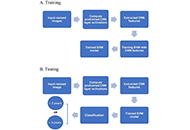 Artificial intelligence fusion for predicting survival of rectal cancer patients using immunohistochemical expression of Ras homolog family member B in biopsyOpen AccessOriginal ArticleAim: The process of biomarker discovery is being accelerated with the application of artificial intelligence (AI), including machine learning. Biomarkers of diseases are useful because they are i...Tuan D. Pham ... Xiao-Feng SunPublished: February 07, 2023 Explor Target Antitumor Ther. DOI: 10.37349/etat.2023.00119
Artificial intelligence fusion for predicting survival of rectal cancer patients using immunohistochemical expression of Ras homolog family member B in biopsyOpen AccessOriginal ArticleAim: The process of biomarker discovery is being accelerated with the application of artificial intelligence (AI), including machine learning. Biomarkers of diseases are useful because they are i...Tuan D. Pham ... Xiao-Feng SunPublished: February 07, 2023 Explor Target Antitumor Ther. DOI: 10.37349/etat.2023.00119 New phase therapeutic pursuits for targeted drug delivery in glioblastoma multiformeOpen AccessReviewGlioblastoma multiforme (GBM) is known as the most aggressive and prevalent brain tumor with a high mortality rate. It is reported in people who are as young as 10 years old to as old as over 70 years old, exhibiting inter and intra tumor heterogeneity. There are several genomic and proteomic investigations that have been performed to find the unexplored potential targets of the drug against GBM. Therefore, certain effective targets have been taken to further validate the studies embarking on the robustness in the field of medicinal chemistry followed by testing in clinical trials. Also, The Cancer Genome Atlas (TCGA) project has identified certain overexpressed targets involved in the pathogenesis of GBM in three major pathways, i.e., tumor protein 53 (p53), retinoblastoma (RB), and receptor tyrosine kinase (RTK)/rat sarcoma virus (Ras)/phosphoinositide 3-kinase (PI3K) pathways. This review focuses on the compilation of recent developments in the fight against GBM thus, directing future research into the elucidation of pathogenesis and potential cure for GBM. Also, it highlights the potential biomarkers that have undergone extensive research and have promising prognostic and predictive values. Additionally, this manuscript analyses the advent of gene therapy and immunotherapy, unlocking the way to consider treatment approaches other than, or in addition to, conventional chemo-radiation therapies. This review study encompasses all the relevant research studies associated with the pathophysiology, occurrence, diagnostic tools, and therapeutic intervention for GBM. It highlights the evolution of various therapeutic perspectives against GBM from the most conventional form of radiotherapy to the recent advancement of gene/cell/immune therapy. Further, the review focuses on various targeted therapies for GBM including chemotherapy sensitization, radiotherapy, nanoparticles based, immunotherapy, cell therapy, and gene therapy which would offer a comprehensive account for exploring several facets related to GBM prognostics....Manisha Singh ... RachanaPublished: December 30, 2022 Explor Target Antitumor Ther. DOI: 10.37349/etat.2022.00118
New phase therapeutic pursuits for targeted drug delivery in glioblastoma multiformeOpen AccessReviewGlioblastoma multiforme (GBM) is known as the most aggressive and prevalent brain tumor with a high mortality rate. It is reported in people who are as young as 10 years old to as old as over 70 years old, exhibiting inter and intra tumor heterogeneity. There are several genomic and proteomic investigations that have been performed to find the unexplored potential targets of the drug against GBM. Therefore, certain effective targets have been taken to further validate the studies embarking on the robustness in the field of medicinal chemistry followed by testing in clinical trials. Also, The Cancer Genome Atlas (TCGA) project has identified certain overexpressed targets involved in the pathogenesis of GBM in three major pathways, i.e., tumor protein 53 (p53), retinoblastoma (RB), and receptor tyrosine kinase (RTK)/rat sarcoma virus (Ras)/phosphoinositide 3-kinase (PI3K) pathways. This review focuses on the compilation of recent developments in the fight against GBM thus, directing future research into the elucidation of pathogenesis and potential cure for GBM. Also, it highlights the potential biomarkers that have undergone extensive research and have promising prognostic and predictive values. Additionally, this manuscript analyses the advent of gene therapy and immunotherapy, unlocking the way to consider treatment approaches other than, or in addition to, conventional chemo-radiation therapies. This review study encompasses all the relevant research studies associated with the pathophysiology, occurrence, diagnostic tools, and therapeutic intervention for GBM. It highlights the evolution of various therapeutic perspectives against GBM from the most conventional form of radiotherapy to the recent advancement of gene/cell/immune therapy. Further, the review focuses on various targeted therapies for GBM including chemotherapy sensitization, radiotherapy, nanoparticles based, immunotherapy, cell therapy, and gene therapy which would offer a comprehensive account for exploring several facets related to GBM prognostics....Manisha Singh ... RachanaPublished: December 30, 2022 Explor Target Antitumor Ther. DOI: 10.37349/etat.2022.00118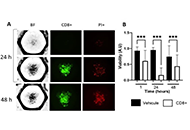 Evaluating immune response in vitro in a relevant microenvironment: a high-throughput microfluidic model for clinical screeningOpen AccessOriginal ArticleAim: Functional screening of new pharmaceutical compounds requires clinically relevant models to monitor essential cellular and immune responses during cancer progression, with or without treatment. Beyond survival, the emergence of resistant tumor cell clones should also be considered, including specific properties related to plasticity, such as invasiveness, stemness, escape from programmed cell death, and immune response. Numerous pathways are involved in these processes. Defining the relevant ones in the context of a specific tumor type will be key to designing an appropriate combination of inhibitors. However, the diversity and potential redundancy of these pathways remain a challenge for therapy. Methods: A new microfluidic device developed by Okomera was dedicated to the screening of drug treatment for breast cancer. This microchip includes 150 droplet-trapping microwells, offering multi-chip settings and multiple treatment choices. Results: After validating the system with established cell lines and a panel of drugs used clinically at Gustave Roussy, preclinical experiments were initiated including patient-derived xenograft (PDX) and primary tumor cells-derived tumoroids with the collaboration of Gustave Roussy clinicians. Tumor-isolated lymphocytes were also added to the tumoroids, using secondary droplets in proof-of-concept experiments. Conclusions: These results show the relevance of the methodology for screening large numbers of drugs, a wide range of doses, and multiple drug combinations. This methodology will be used for two purposes: 1) new drug screening from the compound library, using the high throughput potential of the chip; and 2) pre-clinical assay for a two-weeks response for personalized medicine, allowing evaluation of drug combinations to flag an optimized treatment with potential clinical application....Flora Doffe ... Pierre SavagnerPublished: December 29, 2022 Explor Target Antitumor Ther. DOI: 10.37349/etat.2022.00117
Evaluating immune response in vitro in a relevant microenvironment: a high-throughput microfluidic model for clinical screeningOpen AccessOriginal ArticleAim: Functional screening of new pharmaceutical compounds requires clinically relevant models to monitor essential cellular and immune responses during cancer progression, with or without treatment. Beyond survival, the emergence of resistant tumor cell clones should also be considered, including specific properties related to plasticity, such as invasiveness, stemness, escape from programmed cell death, and immune response. Numerous pathways are involved in these processes. Defining the relevant ones in the context of a specific tumor type will be key to designing an appropriate combination of inhibitors. However, the diversity and potential redundancy of these pathways remain a challenge for therapy. Methods: A new microfluidic device developed by Okomera was dedicated to the screening of drug treatment for breast cancer. This microchip includes 150 droplet-trapping microwells, offering multi-chip settings and multiple treatment choices. Results: After validating the system with established cell lines and a panel of drugs used clinically at Gustave Roussy, preclinical experiments were initiated including patient-derived xenograft (PDX) and primary tumor cells-derived tumoroids with the collaboration of Gustave Roussy clinicians. Tumor-isolated lymphocytes were also added to the tumoroids, using secondary droplets in proof-of-concept experiments. Conclusions: These results show the relevance of the methodology for screening large numbers of drugs, a wide range of doses, and multiple drug combinations. This methodology will be used for two purposes: 1) new drug screening from the compound library, using the high throughput potential of the chip; and 2) pre-clinical assay for a two-weeks response for personalized medicine, allowing evaluation of drug combinations to flag an optimized treatment with potential clinical application....Flora Doffe ... Pierre SavagnerPublished: December 29, 2022 Explor Target Antitumor Ther. DOI: 10.37349/etat.2022.00117 De novo cholesterol biosynthesis: an additional therapeutic target for the treatment of postmenopausal breast cancer with excessive adipose tissueOpen AccessCommentaryThe onset and development of breast cancer in postmenopausal women are associated with closely related individual-dependent factors, including weight gain and high levels of circulating androgens. Adipose tissue is the most peripheral site of aromatase enzyme synthesis; therefore, the excessive accumulation of visceral fat results in increased androgens aromatization and estradiol production that provides the microenvironment favorable to tumorigenesis in mammary epithelial cells expressing estrogen receptors (ERs). Moreover, to meet the increased requirement of cholesterol for cell membrane assembly and the production of steroid hormones to sustain their proliferation, ER-positive cells activate de novo cholesterol biosynthesis and subsequent steroidogenesis. Several approaches have been followed to neutralize the de novo cholesterol synthesis, including specific enzyme inhibitors, statins, and, more recently, metformin. Cumulating evidence indicated that inhibiting cholesterol biosynthesis by statins and metformin may be a promising therapeutic strategy to block breast cancer progression. Unlike antiestrogens and aromatase inhibitors (AIs) which compete for binding to ER and inhibit androgens aromatization, respectively, statins block the production of mevalonic acid by inhibiting the activity of 3-hydroxy-3-methylglutaryl-coenzyme A (HMG-CoA) reductase, and metformin hampers the activation of the sterol regulatory element-binding protein 2 (SREBP2) transcription factor, thus inhibiting the synthesis of several enzymes involved in cholesterol biosynthesis. Noteworthy, statins and metformin not only improve the prognosis of overweight patients with ER-positive cancer but also improve the prognosis of patients with triple-negative breast cancer, the aggressive tumor subtype that lacks, at present, specific therapy....Danila CoradiniPublished: December 28, 2022 Explor Target Antitumor Ther. DOI: 10.37349/etat.2022.00116
De novo cholesterol biosynthesis: an additional therapeutic target for the treatment of postmenopausal breast cancer with excessive adipose tissueOpen AccessCommentaryThe onset and development of breast cancer in postmenopausal women are associated with closely related individual-dependent factors, including weight gain and high levels of circulating androgens. Adipose tissue is the most peripheral site of aromatase enzyme synthesis; therefore, the excessive accumulation of visceral fat results in increased androgens aromatization and estradiol production that provides the microenvironment favorable to tumorigenesis in mammary epithelial cells expressing estrogen receptors (ERs). Moreover, to meet the increased requirement of cholesterol for cell membrane assembly and the production of steroid hormones to sustain their proliferation, ER-positive cells activate de novo cholesterol biosynthesis and subsequent steroidogenesis. Several approaches have been followed to neutralize the de novo cholesterol synthesis, including specific enzyme inhibitors, statins, and, more recently, metformin. Cumulating evidence indicated that inhibiting cholesterol biosynthesis by statins and metformin may be a promising therapeutic strategy to block breast cancer progression. Unlike antiestrogens and aromatase inhibitors (AIs) which compete for binding to ER and inhibit androgens aromatization, respectively, statins block the production of mevalonic acid by inhibiting the activity of 3-hydroxy-3-methylglutaryl-coenzyme A (HMG-CoA) reductase, and metformin hampers the activation of the sterol regulatory element-binding protein 2 (SREBP2) transcription factor, thus inhibiting the synthesis of several enzymes involved in cholesterol biosynthesis. Noteworthy, statins and metformin not only improve the prognosis of overweight patients with ER-positive cancer but also improve the prognosis of patients with triple-negative breast cancer, the aggressive tumor subtype that lacks, at present, specific therapy....Danila CoradiniPublished: December 28, 2022 Explor Target Antitumor Ther. DOI: 10.37349/etat.2022.00116 Antibody-drug conjugates for lymphoma patients: preclinical and clinical evidencesOpen AccessReviewAntibody-drug conjugates (ADCs) are a recent, revolutionary approach for malignancies treatment, designed to provide superior efficacy and specific targeting of tumor cells, compared to systemic cyt...Marilia Barreca ... Francesco BertoniPublished: December 26, 2022 Explor Target Antitumor Ther. DOI: 10.37349/etat.2022.00112
Antibody-drug conjugates for lymphoma patients: preclinical and clinical evidencesOpen AccessReviewAntibody-drug conjugates (ADCs) are a recent, revolutionary approach for malignancies treatment, designed to provide superior efficacy and specific targeting of tumor cells, compared to systemic cyt...Marilia Barreca ... Francesco BertoniPublished: December 26, 2022 Explor Target Antitumor Ther. DOI: 10.37349/etat.2022.00112 Artificial intelligence in breast cancer imaging: risk stratification, lesion detection and classification, treatment planning and prognosis—a narrative reviewOpen AccessReviewThe advent of artificial intelligence (AI) represents a real game changer in today’s landscape of breast cancer imaging. Several innovative AI-based tools have been developed and validated in recent years that promise to accelerate the goal of real patient-tailored management. Numerous studies confirm that proper integration of AI into existing clinical workflows could bring significant benefits to women, radiologists, and healthcare systems. The AI-based approach has proved particularly useful for developing new risk prediction models that integrate multi-data streams for planning individualized screening protocols. ...Maurizio Cè ... Michaela CellinaPublished: December 27, 2022 Explor Target Antitumor Ther. DOI: 10.37349/etat.2022.00113
Artificial intelligence in breast cancer imaging: risk stratification, lesion detection and classification, treatment planning and prognosis—a narrative reviewOpen AccessReviewThe advent of artificial intelligence (AI) represents a real game changer in today’s landscape of breast cancer imaging. Several innovative AI-based tools have been developed and validated in recent years that promise to accelerate the goal of real patient-tailored management. Numerous studies confirm that proper integration of AI into existing clinical workflows could bring significant benefits to women, radiologists, and healthcare systems. The AI-based approach has proved particularly useful for developing new risk prediction models that integrate multi-data streams for planning individualized screening protocols. ...Maurizio Cè ... Michaela CellinaPublished: December 27, 2022 Explor Target Antitumor Ther. DOI: 10.37349/etat.2022.00113 Encouraging probiotics for the prevention and treatment of immune-related adverse events in novel immunotherapies against malignant gliomaOpen AccessPerspectiveAmong the malignant tumors in the central nervous system (CNS), glioma is the most challenging tumor to the public society, which accounts for the majority of intracranial malignant tumors with impa...Sayuri Yoshikawa ... Satoru MatsudaPublished: December 27, 2022 Explor Target Antitumor Ther. DOI: 10.37349/etat.2022.00114
Encouraging probiotics for the prevention and treatment of immune-related adverse events in novel immunotherapies against malignant gliomaOpen AccessPerspectiveAmong the malignant tumors in the central nervous system (CNS), glioma is the most challenging tumor to the public society, which accounts for the majority of intracranial malignant tumors with impa...Sayuri Yoshikawa ... Satoru MatsudaPublished: December 27, 2022 Explor Target Antitumor Ther. DOI: 10.37349/etat.2022.00114 Dendritic cell-targeting chemokines inhibit colorectal cancer progressionOpen AccessOriginal ArticleAim: Recent progress in cancer immunotherapy has shown its promise and prompted researchers to develop novel therapeutic strategies. Dendritic cells (DCs) are professional antigen-presenting cell...Pengkun Yuan ... Bin MaPublished: December 27, 2022 Explor Target Antitumor Ther. DOI: 10.37349/etat.2022.00115
Dendritic cell-targeting chemokines inhibit colorectal cancer progressionOpen AccessOriginal ArticleAim: Recent progress in cancer immunotherapy has shown its promise and prompted researchers to develop novel therapeutic strategies. Dendritic cells (DCs) are professional antigen-presenting cell...Pengkun Yuan ... Bin MaPublished: December 27, 2022 Explor Target Antitumor Ther. DOI: 10.37349/etat.2022.00115 Mutant and non-mutant neoantigen-based cancer vaccines: recent advances and future promisesOpen AccessReviewMajor advances in cancer treatment have emerged with the introduction of immunotherapies using blocking antibodies that target T-cell inhibitory receptors, such as programmed death-1 (PD-1) and cyto...Mohamad Omar Ashi ... Stéphanie CorgnacPublished: December 22, 2022 Explor Target Antitumor Ther. DOI: 10.37349/etat.2022.00111
Mutant and non-mutant neoantigen-based cancer vaccines: recent advances and future promisesOpen AccessReviewMajor advances in cancer treatment have emerged with the introduction of immunotherapies using blocking antibodies that target T-cell inhibitory receptors, such as programmed death-1 (PD-1) and cyto...Mohamad Omar Ashi ... Stéphanie CorgnacPublished: December 22, 2022 Explor Target Antitumor Ther. DOI: 10.37349/etat.2022.00111 Diffusion-weighted imaging and apparent diffusion coefficient mapping of head and neck lymph node metastasis: a systematic reviewOpen AccessSystematic ReviewAim: Head and neck squamous cell cancer (HNSCC) is the ninth most common tumor worldwide. Neck lymph node (LN) status is the major indicator of prognosis in all head and neck cancers, and the early detection of LN involvement is crucial in terms of therapy and prognosis. Diffusion-weighted imaging (DWI) is a non-invasive imaging technique used in magnetic resonance imaging (MRI) to characterize tissues based on the displacement motion of water molecules. This review aims to provide an overview of the current literature concerning quantitative diffusion imaging for LN staging in patients with HNSCC. Methods: This systematic review performed a literature search on the PubMed database (https://pubmed.ncbi.nlm.nih.gov/) for all relevant, peer-reviewed literature on the subject following the preferred reporting items for systematic reviews and meta-analyses (PRISMA) criteria, using the keywords: DWI, MRI, head and neck, staging, lymph node. Results: After excluding reviews, meta-analyses, case reports, and bibliometric studies, 18 relevant papers out of the 567 retrieved were selected for analysis. Conclusions: DWI improves the diagnosis, treatment planning, treatment response evaluation, and overall management of patients affected by HNSCC. More robust data to clarify the role of apparent diffusion coefficient (ADC) and DWI parameters are needed to develop models for prognosis and prediction in HNSCC cancer using MRI. ...Maria Paola Belfiore ... Salvatore CappabiancaPublished: December 13, 2022 Explor Target Antitumor Ther. DOI: 10.37349/etat.2022.00110
Diffusion-weighted imaging and apparent diffusion coefficient mapping of head and neck lymph node metastasis: a systematic reviewOpen AccessSystematic ReviewAim: Head and neck squamous cell cancer (HNSCC) is the ninth most common tumor worldwide. Neck lymph node (LN) status is the major indicator of prognosis in all head and neck cancers, and the early detection of LN involvement is crucial in terms of therapy and prognosis. Diffusion-weighted imaging (DWI) is a non-invasive imaging technique used in magnetic resonance imaging (MRI) to characterize tissues based on the displacement motion of water molecules. This review aims to provide an overview of the current literature concerning quantitative diffusion imaging for LN staging in patients with HNSCC. Methods: This systematic review performed a literature search on the PubMed database (https://pubmed.ncbi.nlm.nih.gov/) for all relevant, peer-reviewed literature on the subject following the preferred reporting items for systematic reviews and meta-analyses (PRISMA) criteria, using the keywords: DWI, MRI, head and neck, staging, lymph node. Results: After excluding reviews, meta-analyses, case reports, and bibliometric studies, 18 relevant papers out of the 567 retrieved were selected for analysis. Conclusions: DWI improves the diagnosis, treatment planning, treatment response evaluation, and overall management of patients affected by HNSCC. More robust data to clarify the role of apparent diffusion coefficient (ADC) and DWI parameters are needed to develop models for prognosis and prediction in HNSCC cancer using MRI. ...Maria Paola Belfiore ... Salvatore CappabiancaPublished: December 13, 2022 Explor Target Antitumor Ther. DOI: 10.37349/etat.2022.00110 Onosma L. as a source of anticancer agents: phytochemistry to mechanistic insightOpen AccessReviewOnosma (O.) is a genus of perennial flowering plants in the family Boraginaceae with approximately 250 species widely dispersed in temperate, tropical, and subtropical areas. It is traditionally use...Ajay Kumar ... Satwinderjeet KaurPublished: October 31, 2022 Explor Target Antitumor Ther. DOI: 10.37349/etat.2022.00109
Onosma L. as a source of anticancer agents: phytochemistry to mechanistic insightOpen AccessReviewOnosma (O.) is a genus of perennial flowering plants in the family Boraginaceae with approximately 250 species widely dispersed in temperate, tropical, and subtropical areas. It is traditionally use...Ajay Kumar ... Satwinderjeet KaurPublished: October 31, 2022 Explor Target Antitumor Ther. DOI: 10.37349/etat.2022.00109 Clinical utility of liquid biopsy-based companion diagnostics in the non-small-cell lung cancer treatmentOpen AccessReviewRecently, technological advances in the detection and biological characterization of circulating tumor DNA (ctDNA) have enabled the implementation of liquid biopsy testing into clinical practice. Me...Yoshiharu SatoPublished: October 31, 2022 Explor Target Antitumor Ther. DOI: 10.37349/etat.2022.00104
Clinical utility of liquid biopsy-based companion diagnostics in the non-small-cell lung cancer treatmentOpen AccessReviewRecently, technological advances in the detection and biological characterization of circulating tumor DNA (ctDNA) have enabled the implementation of liquid biopsy testing into clinical practice. Me...Yoshiharu SatoPublished: October 31, 2022 Explor Target Antitumor Ther. DOI: 10.37349/etat.2022.00104 Potential role of resveratrol and its nano-formulation as anti-cancer agentOpen AccessReviewThe uncontrolled and metastatic nature of cancer makes it worse and more unpredictable. Hence, many therapy and medication are used to control and treat cancer. However, apart from this, many medica...Akshay Kumar ... Dilpreet SinghPublished: October 31, 2022 Explor Target Antitumor Ther. DOI: 10.37349/etat.2022.00105
Potential role of resveratrol and its nano-formulation as anti-cancer agentOpen AccessReviewThe uncontrolled and metastatic nature of cancer makes it worse and more unpredictable. Hence, many therapy and medication are used to control and treat cancer. However, apart from this, many medica...Akshay Kumar ... Dilpreet SinghPublished: October 31, 2022 Explor Target Antitumor Ther. DOI: 10.37349/etat.2022.00105 Steroid utility, immunotherapy, and brain tumor management: an update on conflicting therapiesOpen AccessReviewSteroid use is a widely accepted practice for both the treatment and prevention of tumor-induced edema, but there are many unknowns regarding their current clinical utility with modern anti-tumor th...Matthew Goldman ... Stephan QuintinPublished: October 31, 2022 Explor Target Antitumor Ther. DOI: 10.37349/etat.2022.00106
Steroid utility, immunotherapy, and brain tumor management: an update on conflicting therapiesOpen AccessReviewSteroid use is a widely accepted practice for both the treatment and prevention of tumor-induced edema, but there are many unknowns regarding their current clinical utility with modern anti-tumor th...Matthew Goldman ... Stephan QuintinPublished: October 31, 2022 Explor Target Antitumor Ther. DOI: 10.37349/etat.2022.00106 Perspectives of traditional Chinese medicine to patch up immune checkpoint blockersOpen AccessReviewIn this era of cancer immunotherapy, the response rates of immune checkpoint blockers (ICBs) are still too low and the adverse events may also be significant. Of the ways of patching up such deficit...Shiu Ying TsaoPublished: October 31, 2022 Explor Target Antitumor Ther. DOI: 10.37349/etat.2022.00107
Perspectives of traditional Chinese medicine to patch up immune checkpoint blockersOpen AccessReviewIn this era of cancer immunotherapy, the response rates of immune checkpoint blockers (ICBs) are still too low and the adverse events may also be significant. Of the ways of patching up such deficit...Shiu Ying TsaoPublished: October 31, 2022 Explor Target Antitumor Ther. DOI: 10.37349/etat.2022.00107 The tumor innate immune microenvironment in prostate cancer: an overview of soluble factors and cellular effectorsOpen AccessReviewProstate cancer (PCa) accounts as the most common non-cutaneous disease affecting males, and as the first cancer, for incidence, in male. With the introduction of the concept of immunoscore, PCa has...Maria Teresa Palano ... Lorenzo MortaraPublished: October 31, 2022 Explor Target Antitumor Ther. DOI: 10.37349/etat.2022.00108
The tumor innate immune microenvironment in prostate cancer: an overview of soluble factors and cellular effectorsOpen AccessReviewProstate cancer (PCa) accounts as the most common non-cutaneous disease affecting males, and as the first cancer, for incidence, in male. With the introduction of the concept of immunoscore, PCa has...Maria Teresa Palano ... Lorenzo MortaraPublished: October 31, 2022 Explor Target Antitumor Ther. DOI: 10.37349/etat.2022.00108 Targeted RNA-sequencing analysis for fusion transcripts detection in tumor diagnostics: assessment of bioinformatic tools reliability in FFPE samplesOpen AccessOriginal ArticleAim: Diagnostic laboratories are progressively introducing next-generation sequencing (NGS) technologies in the routine workflow to meet the increasing clinical need for comprehensive molecular c...Iolanda Capone ... Giancarlo PruneriPublished: October 27, 2022 Explor Target Antitumor Ther. DOI: 10.37349/etat.2022.00102
Targeted RNA-sequencing analysis for fusion transcripts detection in tumor diagnostics: assessment of bioinformatic tools reliability in FFPE samplesOpen AccessOriginal ArticleAim: Diagnostic laboratories are progressively introducing next-generation sequencing (NGS) technologies in the routine workflow to meet the increasing clinical need for comprehensive molecular c...Iolanda Capone ... Giancarlo PruneriPublished: October 27, 2022 Explor Target Antitumor Ther. DOI: 10.37349/etat.2022.00102 Modulation of the antitumor immune response by cancer-associated fibroblasts: mechanisms and targeting strategies to hamper their immunosuppressive functionsOpen AccessReviewCancer-associated fibroblasts (CAFs) are highly heterogeneous players that shape the tumor microenvironment and influence tumor progression, metastasis formation, and response to conventional therap...Jerome ThieryPublished: October 27, 2022 Explor Target Antitumor Ther. DOI: 10.37349/etat.2022.00103
Modulation of the antitumor immune response by cancer-associated fibroblasts: mechanisms and targeting strategies to hamper their immunosuppressive functionsOpen AccessReviewCancer-associated fibroblasts (CAFs) are highly heterogeneous players that shape the tumor microenvironment and influence tumor progression, metastasis formation, and response to conventional therap...Jerome ThieryPublished: October 27, 2022 Explor Target Antitumor Ther. DOI: 10.37349/etat.2022.00103 A xCT role in tumour-associated ferroptosis shed light on novel therapeutic optionsOpen AccessCommentarySolute carrier family 7 member 11 (SLC7A11; also known as xCT), a key component of the cystine/glutamate antiporter, is essential for the maintenance of cellular redox status and the regulation of t...Daniela Criscuolo ... Angela CelettiPublished: October 25, 2022 Explor Target Antitumor Ther. DOI: 10.37349/etat.2022.00101
A xCT role in tumour-associated ferroptosis shed light on novel therapeutic optionsOpen AccessCommentarySolute carrier family 7 member 11 (SLC7A11; also known as xCT), a key component of the cystine/glutamate antiporter, is essential for the maintenance of cellular redox status and the regulation of t...Daniela Criscuolo ... Angela CelettiPublished: October 25, 2022 Explor Target Antitumor Ther. DOI: 10.37349/etat.2022.00101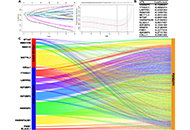 N6-methyladenosine-related microRNAs risk model trumps the isocitrate dehydrogenase mutation status as a predictive biomarker for the prognosis and immunotherapy in lower grade gliomasOpen AccessOriginal ArticleAim: Lower grade gliomas [LGGs; World Health Organization (WHO) grades 2 and 3], owing to the heterogeneity of their clinical behavior, present a therapeutic challenge to ...Feng Yuan ... Chiyuan MaPublished: September 30, 2022 Explor Target Antitumor Ther. DOI: 10.37349/etat.2022.00100
N6-methyladenosine-related microRNAs risk model trumps the isocitrate dehydrogenase mutation status as a predictive biomarker for the prognosis and immunotherapy in lower grade gliomasOpen AccessOriginal ArticleAim: Lower grade gliomas [LGGs; World Health Organization (WHO) grades 2 and 3], owing to the heterogeneity of their clinical behavior, present a therapeutic challenge to ...Feng Yuan ... Chiyuan MaPublished: September 30, 2022 Explor Target Antitumor Ther. DOI: 10.37349/etat.2022.00100 miRNA therapeutics in precision oncology: a natural premium to nurtureOpen AccessReviewThe dynamic spectrum of microRNA (miRNA) has grown significantly over the years with its identification and exploration in cancer therapeutics and is currently identified as an important resource fo...Chakresh Kumar Jain ... R Suresh KumarPublished: August 31, 2022 Explor Target Antitumor Ther. DOI: 10.37349/etat.2022.00098
miRNA therapeutics in precision oncology: a natural premium to nurtureOpen AccessReviewThe dynamic spectrum of microRNA (miRNA) has grown significantly over the years with its identification and exploration in cancer therapeutics and is currently identified as an important resource fo...Chakresh Kumar Jain ... R Suresh KumarPublished: August 31, 2022 Explor Target Antitumor Ther. DOI: 10.37349/etat.2022.00098 Clinical applications of liquid biopsy in HPV-negative and HPV-positive head and neck squamous cell carcinoma: advances and challengesOpen AccessReviewHead and neck squamous cell carcinomas (HNSCCs) represent the most common epithelial tumors that arise from mucosa of the oral cavity, pharynx, and larynx. The development of HNSCCs is usually assoc...Mariana Chantre-Justino ... Lucas DelmonicoPublished: August 31, 2022 Explor Target Antitumor Ther. DOI: 10.37349/etat.2022.00099
Clinical applications of liquid biopsy in HPV-negative and HPV-positive head and neck squamous cell carcinoma: advances and challengesOpen AccessReviewHead and neck squamous cell carcinomas (HNSCCs) represent the most common epithelial tumors that arise from mucosa of the oral cavity, pharynx, and larynx. The development of HNSCCs is usually assoc...Mariana Chantre-Justino ... Lucas DelmonicoPublished: August 31, 2022 Explor Target Antitumor Ther. DOI: 10.37349/etat.2022.00099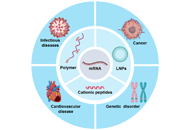 Applications and challenges of biomaterial mediated mRNA deliveryOpen AccessReviewWith the rapid development of gene therapy technology and the outbreak of coronavirus disease 2019 (COVID-19), messenger RNA (mRNA) therapeutics have attracted more and more attention, and the COVID...Huapan Fang, Qian ChenPublished: August 31, 2022 Explor Target Antitumor Ther. DOI: 10.37349/etat.2022.00093
Applications and challenges of biomaterial mediated mRNA deliveryOpen AccessReviewWith the rapid development of gene therapy technology and the outbreak of coronavirus disease 2019 (COVID-19), messenger RNA (mRNA) therapeutics have attracted more and more attention, and the COVID...Huapan Fang, Qian ChenPublished: August 31, 2022 Explor Target Antitumor Ther. DOI: 10.37349/etat.2022.00093 Roles of calcium signaling in cancer metastasis to boneOpen AccessReviewBone metastasis is a frequent complication for cancers and an important reason for the mortality in cancer patients. After surviving in bone, cancer cells can cause severe pain, life-threatening hyp...Tianying Xie ... Jianru XiaoPublished: August 31, 2022 Explor Target Antitumor Ther. DOI: 10.37349/etat.2022.00094
Roles of calcium signaling in cancer metastasis to boneOpen AccessReviewBone metastasis is a frequent complication for cancers and an important reason for the mortality in cancer patients. After surviving in bone, cancer cells can cause severe pain, life-threatening hyp...Tianying Xie ... Jianru XiaoPublished: August 31, 2022 Explor Target Antitumor Ther. DOI: 10.37349/etat.2022.00094 A personalized molecular approach in multiple myeloma: the possible use of RAF/RAS/MEK/ERK and BCL-2 inhibitorsOpen AccessReviewMultiple myeloma (MM) is a blood cancer that derives from plasma cells (PCs), which will accumulate in the bone marrow (BM). Over time, several drugs have been developed to treat this disease that i...Vincenzo Raimondi ... Nicola GiulianiPublished: August 31, 2022 Explor Target Antitumor Ther. DOI: 10.37349/etat.2022.00095
A personalized molecular approach in multiple myeloma: the possible use of RAF/RAS/MEK/ERK and BCL-2 inhibitorsOpen AccessReviewMultiple myeloma (MM) is a blood cancer that derives from plasma cells (PCs), which will accumulate in the bone marrow (BM). Over time, several drugs have been developed to treat this disease that i...Vincenzo Raimondi ... Nicola GiulianiPublished: August 31, 2022 Explor Target Antitumor Ther. DOI: 10.37349/etat.2022.00095 Endocrine therapy resistance: what we know and future directionsOpen AccessReviewEndocrine resistance is a major hurdle in the treatment of estrogen receptor (ER)-positive breast cancer. When abnormally regulated, molecular signals responsible for cellular proliferation, as well...David Musheyev, Anya AlayevPublished: August 31, 2022 Explor Target Antitumor Ther. DOI: 10.37349/etat.2022.00096
Endocrine therapy resistance: what we know and future directionsOpen AccessReviewEndocrine resistance is a major hurdle in the treatment of estrogen receptor (ER)-positive breast cancer. When abnormally regulated, molecular signals responsible for cellular proliferation, as well...David Musheyev, Anya AlayevPublished: August 31, 2022 Explor Target Antitumor Ther. DOI: 10.37349/etat.2022.00096 Myeloid-derived suppressor cells in colorectal cancer: prognostic biomarkers and therapeutic targetsOpen AccessReviewMyeloid-derived suppressor cells (MDSCs) are a group of immature myeloid cells, which are expanded in most cancer patients. MDSCs suppress host immune responses, leading to cancer growth and progres...Mohammad A. Al-Mterin, Eyad ElkordPublished: August 31, 2022 Explor Target Antitumor Ther. DOI: 10.37349/etat.2022.00097
Myeloid-derived suppressor cells in colorectal cancer: prognostic biomarkers and therapeutic targetsOpen AccessReviewMyeloid-derived suppressor cells (MDSCs) are a group of immature myeloid cells, which are expanded in most cancer patients. MDSCs suppress host immune responses, leading to cancer growth and progres...Mohammad A. Al-Mterin, Eyad ElkordPublished: August 31, 2022 Explor Target Antitumor Ther. DOI: 10.37349/etat.2022.00097 Anticancer action of plant products: changing stereotyped attitudesOpen AccessPerspectiveCompared to humans, plants can synthesize an extremely diverse array of chemical compounds, including phenolic acids, flavonoids, stilbenes, lignans, terpenoids, alkaloids, and many other types of s...Katrin SakPublished: August 15, 2022 Explor Target Antitumor Ther. DOI: 10.37349/etat.2022.00092
Anticancer action of plant products: changing stereotyped attitudesOpen AccessPerspectiveCompared to humans, plants can synthesize an extremely diverse array of chemical compounds, including phenolic acids, flavonoids, stilbenes, lignans, terpenoids, alkaloids, and many other types of s...Katrin SakPublished: August 15, 2022 Explor Target Antitumor Ther. DOI: 10.37349/etat.2022.00092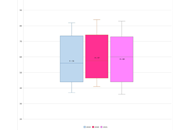 Consequences of the impact of COVID-19 pandemic on breast cancer at a single Italian institutionOpen AccessOriginal ArticleAim: To evaluate the local impact of the coronavirus disease 2019 (COVID-19) pandemic on breast cancer (BC) care, with particular attention to the economical and psychological consequences of the...Daniele Ugo Tari ... Fabio PintoPublished: July 29, 2022 Explor Target Antitumor Ther. DOI: 10.37349/etat.2022.00091
Consequences of the impact of COVID-19 pandemic on breast cancer at a single Italian institutionOpen AccessOriginal ArticleAim: To evaluate the local impact of the coronavirus disease 2019 (COVID-19) pandemic on breast cancer (BC) care, with particular attention to the economical and psychological consequences of the...Daniele Ugo Tari ... Fabio PintoPublished: July 29, 2022 Explor Target Antitumor Ther. DOI: 10.37349/etat.2022.00091 Combination of thermal ablation by focused ultrasound, pFAR4-IL-12 transfection and lipidic adjuvant provide a distal immune responseOpen AccessOriginal ArticleAim: Gene-based immunotherapy against cancer is limited by low gene transfer efficiency. In the literature, interleukin-12 (IL-12) encoding plasmid associated with sonoporation has been shown to en...Hai Doan Do ... Nathalie MignetPublished: June 29, 2022 Explor Target Antitumor Ther. DOI: 10.37349/etat.2022.00090
Combination of thermal ablation by focused ultrasound, pFAR4-IL-12 transfection and lipidic adjuvant provide a distal immune responseOpen AccessOriginal ArticleAim: Gene-based immunotherapy against cancer is limited by low gene transfer efficiency. In the literature, interleukin-12 (IL-12) encoding plasmid associated with sonoporation has been shown to en...Hai Doan Do ... Nathalie MignetPublished: June 29, 2022 Explor Target Antitumor Ther. DOI: 10.37349/etat.2022.00090 Allosteric cross-talk between the hydrophobic cleft and the BH4 domain of Bcl-2 in control of inositol 1,4,5-trisphosphate receptor activityOpen AccessOriginal ArticleAim: Inositol 1,4,5-trisphosphate receptor (IP3R) is a ubiquitous calcium (Ca2+) channel involved in the regulation of cellular fate and motility. Its modulation by anti-apoptotic prote...George Shapovalov ... Natalia PrevarskayaPublished: June 28, 2022 Explor Target Antitumor Ther. DOI: 10.37349/etat.2022.00088
Allosteric cross-talk between the hydrophobic cleft and the BH4 domain of Bcl-2 in control of inositol 1,4,5-trisphosphate receptor activityOpen AccessOriginal ArticleAim: Inositol 1,4,5-trisphosphate receptor (IP3R) is a ubiquitous calcium (Ca2+) channel involved in the regulation of cellular fate and motility. Its modulation by anti-apoptotic prote...George Shapovalov ... Natalia PrevarskayaPublished: June 28, 2022 Explor Target Antitumor Ther. DOI: 10.37349/etat.2022.00088 Advanced metastatic pancreatic neuroendocrine tumor treated successfully with peptide receptor radionuclide therapy: a case reportOpen AccessCase ReportNeuroendocrine tumor (NET) is a rare tumor that has been observed in different sites such as lungs and throughout the gastrointestinal tract. Clinical features are usually non-specific and vary cons...Amit Kumar ... Rohit KumarPublished: June 29, 2022 Explor Target Antitumor Ther. DOI: 10.37349/etat.2022.00089
Advanced metastatic pancreatic neuroendocrine tumor treated successfully with peptide receptor radionuclide therapy: a case reportOpen AccessCase ReportNeuroendocrine tumor (NET) is a rare tumor that has been observed in different sites such as lungs and throughout the gastrointestinal tract. Clinical features are usually non-specific and vary cons...Amit Kumar ... Rohit KumarPublished: June 29, 2022 Explor Target Antitumor Ther. DOI: 10.37349/etat.2022.00089 Liquid biopsy in biliary tract cancer from blood and bile samples: current knowledge and future perspectivesOpen AccessReviewBiliary tract cancer (BTC) is an aggressive tumor characterized by a poor prognosis. In the latest years, targetable genetic alterations have been discovered in BTC patients, leading to the approval...Gianluca Arrichiello ... Emilio Francesco GiuntaPublished: June 22, 2022 Explor Target Antitumor Ther. DOI: 10.37349/etat.2022.00087
Liquid biopsy in biliary tract cancer from blood and bile samples: current knowledge and future perspectivesOpen AccessReviewBiliary tract cancer (BTC) is an aggressive tumor characterized by a poor prognosis. In the latest years, targetable genetic alterations have been discovered in BTC patients, leading to the approval...Gianluca Arrichiello ... Emilio Francesco GiuntaPublished: June 22, 2022 Explor Target Antitumor Ther. DOI: 10.37349/etat.2022.00087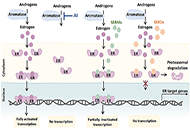 Exploring new pathways in endocrine-resistant breast cancerOpen AccessReviewThe most common breast cancer (BC) subtypes are hormone-dependent, being either estrogen receptor-positive (ER+), progesterone receptor-positive (PR+), or both, and altogether comprise the luminal subtype. The mainstay of treatment for luminal BC is endocrine therapy (ET), which includes several agents that act either directly targeting ER action or suppressing estrogen production. Over the years, ET has proven efficacy in reducing mortality and improving clinical outcomes in metastatic and nonmetastatic BC. However, the development of ET resistance promotes cancer survival and progression and hinders the use of endocrine agents. Several mechanisms implicated in endocrine resistance have now been extensively studied. Based on the current clinical and pre-clinical data, the present article briefly reviews the well-established pathways of ET resistance and continues by focusing on the three most recently uncovered pathways, which may mediate resistance to ET, namely receptor activator of nuclear factor kappa Β ligand (RANKL)/receptor activator of nuclear factor kappa Β (RANK), nuclear factor kappa Β (NFκB), and Notch. It additionally overviews the evidence underlying the approval of combined therapies to overcome ET resistance in BC, while highlighting the relevance of future studies focusing on putative mediators of ET resistance to uncover new therapeutic options for the disease....Inês Soares de Pinho ... Luís CostaPublished: June 20, 2022 Explor Target Antitumor Ther. DOI: 10.37349/etat.2022.00086
Exploring new pathways in endocrine-resistant breast cancerOpen AccessReviewThe most common breast cancer (BC) subtypes are hormone-dependent, being either estrogen receptor-positive (ER+), progesterone receptor-positive (PR+), or both, and altogether comprise the luminal subtype. The mainstay of treatment for luminal BC is endocrine therapy (ET), which includes several agents that act either directly targeting ER action or suppressing estrogen production. Over the years, ET has proven efficacy in reducing mortality and improving clinical outcomes in metastatic and nonmetastatic BC. However, the development of ET resistance promotes cancer survival and progression and hinders the use of endocrine agents. Several mechanisms implicated in endocrine resistance have now been extensively studied. Based on the current clinical and pre-clinical data, the present article briefly reviews the well-established pathways of ET resistance and continues by focusing on the three most recently uncovered pathways, which may mediate resistance to ET, namely receptor activator of nuclear factor kappa Β ligand (RANKL)/receptor activator of nuclear factor kappa Β (RANK), nuclear factor kappa Β (NFκB), and Notch. It additionally overviews the evidence underlying the approval of combined therapies to overcome ET resistance in BC, while highlighting the relevance of future studies focusing on putative mediators of ET resistance to uncover new therapeutic options for the disease....Inês Soares de Pinho ... Luís CostaPublished: June 20, 2022 Explor Target Antitumor Ther. DOI: 10.37349/etat.2022.00086 Management of lung cancer patients during COVID-19 pandemic: dos, don’ts and don’t knowsOpen AccessSystematic ReviewAim: During the coronavirus disease 2019 (COVID-19) pandemic two needs have overlapped: on one hand continuing to provide the best care for patients with lung cancer and preventing the spread of the...Mariangela Torniai ... Rossana BerardiPublished: June 10, 2022 Explor Target Antitumor Ther. DOI: 10.37349/etat.2022.00085
Management of lung cancer patients during COVID-19 pandemic: dos, don’ts and don’t knowsOpen AccessSystematic ReviewAim: During the coronavirus disease 2019 (COVID-19) pandemic two needs have overlapped: on one hand continuing to provide the best care for patients with lung cancer and preventing the spread of the...Mariangela Torniai ... Rossana BerardiPublished: June 10, 2022 Explor Target Antitumor Ther. DOI: 10.37349/etat.2022.00085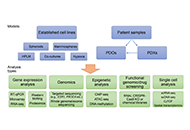 In vitro breast cancer models for studying mechanisms of resistance to endocrine therapyOpen AccessReviewThe development of endocrine resistance is a common reason for the failure of endocrine therapies in hormone receptor-positive breast cancer. This review provides an overview of the different types ...Gary J. Cheng ... Dean C. SingletonPublished: June 01, 2022 Explor Target Antitumor Ther. DOI: 10.37349/etat.2022.00084
In vitro breast cancer models for studying mechanisms of resistance to endocrine therapyOpen AccessReviewThe development of endocrine resistance is a common reason for the failure of endocrine therapies in hormone receptor-positive breast cancer. This review provides an overview of the different types ...Gary J. Cheng ... Dean C. SingletonPublished: June 01, 2022 Explor Target Antitumor Ther. DOI: 10.37349/etat.2022.00084 Myeloid cell leukemia-1: a formidable barrier to anticancer therapeutics and the quest of targeting itOpen AccessReviewThe antiapoptotic B cell lymphoma-2 (Bcl-2) family members are apical regulators of the intrinsic pathway of apoptosis that orchestrate mitochondrial outer membrane permeabilization (MOMP) through i...Prasad Sulkshane, Tanuja TeniPublished: May 24, 2022 Explor Target Antitumor Ther. DOI: 10.37349/etat.2022.00083
Myeloid cell leukemia-1: a formidable barrier to anticancer therapeutics and the quest of targeting itOpen AccessReviewThe antiapoptotic B cell lymphoma-2 (Bcl-2) family members are apical regulators of the intrinsic pathway of apoptosis that orchestrate mitochondrial outer membrane permeabilization (MOMP) through i...Prasad Sulkshane, Tanuja TeniPublished: May 24, 2022 Explor Target Antitumor Ther. DOI: 10.37349/etat.2022.00083 Antibody-drug conjugates: beyond current approvals and potential future strategiesOpen AccessReviewThe recent approvals for antibody-drug conjugates (ADCs) in multiple malignancies in recent years have fuelled the ongoing development of this class of drugs. These novel agents combine the benefits...Siddharth Menon ... Hui K. GanPublished: April 28, 2022 Explor Target Antitumor Ther. DOI: 10.37349/etat.2022.00082
Antibody-drug conjugates: beyond current approvals and potential future strategiesOpen AccessReviewThe recent approvals for antibody-drug conjugates (ADCs) in multiple malignancies in recent years have fuelled the ongoing development of this class of drugs. These novel agents combine the benefits...Siddharth Menon ... Hui K. GanPublished: April 28, 2022 Explor Target Antitumor Ther. DOI: 10.37349/etat.2022.00082 Endocrine resistant breast cancer: brain metastasisOpen AccessPerspectiveEndocrine resistant breast cancer metastasis continues to serve as a significant clinical challenge with high morbidity and mortality for patients. As the number of breast cancer cases continues to ...Matthew Willman ... Brandon Lucke-WoldPublished: April 26, 2022 Explor Target Antitumor Ther. DOI: 10.37349/etat.2022.00081
Endocrine resistant breast cancer: brain metastasisOpen AccessPerspectiveEndocrine resistant breast cancer metastasis continues to serve as a significant clinical challenge with high morbidity and mortality for patients. As the number of breast cancer cases continues to ...Matthew Willman ... Brandon Lucke-WoldPublished: April 26, 2022 Explor Target Antitumor Ther. DOI: 10.37349/etat.2022.00081 Genomic alterations in cholangiocarcinoma: clinical significance and relevance to therapyOpen AccessReviewImproving the survival of patients with cholangiocarcinoma (CCA) has long proved challenging, although the treatment of this disease nowadays is on advancement. The historical invariability of survi...Marianeve Carotenuto ... Nicola NormannoPublished: April 26, 2022 Explor Target Antitumor Ther. DOI: 10.37349/etat.2022.00079
Genomic alterations in cholangiocarcinoma: clinical significance and relevance to therapyOpen AccessReviewImproving the survival of patients with cholangiocarcinoma (CCA) has long proved challenging, although the treatment of this disease nowadays is on advancement. The historical invariability of survi...Marianeve Carotenuto ... Nicola NormannoPublished: April 26, 2022 Explor Target Antitumor Ther. DOI: 10.37349/etat.2022.00079 The importance of targeting signalling mechanisms of the SLC39A family of zinc transporters to inhibit endocrine resistant breast cancerOpen AccessOriginal ArticleAim: Zinc is a key secondary messenger that can regulate multiple signalling pathways within cancer cells, thus its levels need to be strictly controlled. The Zrt, Irt-like protein (ZIP, SLC39A) ...Samuel Jones ... Kathryn M. TaylorPublished: April 26, 2022 Explor Target Antitumor Ther. DOI: 10.37349/etat.2022.00080
The importance of targeting signalling mechanisms of the SLC39A family of zinc transporters to inhibit endocrine resistant breast cancerOpen AccessOriginal ArticleAim: Zinc is a key secondary messenger that can regulate multiple signalling pathways within cancer cells, thus its levels need to be strictly controlled. The Zrt, Irt-like protein (ZIP, SLC39A) ...Samuel Jones ... Kathryn M. TaylorPublished: April 26, 2022 Explor Target Antitumor Ther. DOI: 10.37349/etat.2022.00080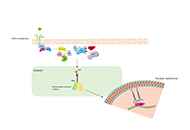 Role of PI3K/Akt/mTOR pathway in mediating endocrine resistance: concept to clinicOpen AccessReviewThe majority of breast cancers express the estrogen receptor (ER) and for this group of patients, endocrine therapy is the cornerstone of systemic treatment. However, drug resistance is common and a...Aglaia Skolariki ... Simon LordPublished: April 24, 2022 Explor Target Antitumor Ther. DOI: 10.37349/etat.2022.00078
Role of PI3K/Akt/mTOR pathway in mediating endocrine resistance: concept to clinicOpen AccessReviewThe majority of breast cancers express the estrogen receptor (ER) and for this group of patients, endocrine therapy is the cornerstone of systemic treatment. However, drug resistance is common and a...Aglaia Skolariki ... Simon LordPublished: April 24, 2022 Explor Target Antitumor Ther. DOI: 10.37349/etat.2022.00078 Advancing antibody-drug conjugates in gynecological malignancies: myth or reality?Open AccessReviewAntibody-drug conjugates (ADCs) represent a new class of therapeutic agents designed to target specific antigens on tumor cells, combining the specificity of monoclonal antibodies to the cytotoxicit...Marta Nerone ... Ilaria ColomboPublished: April 19, 2022 Explor Target Antitumor Ther. DOI: 10.37349/etat.2022.00077
Advancing antibody-drug conjugates in gynecological malignancies: myth or reality?Open AccessReviewAntibody-drug conjugates (ADCs) represent a new class of therapeutic agents designed to target specific antigens on tumor cells, combining the specificity of monoclonal antibodies to the cytotoxicit...Marta Nerone ... Ilaria ColomboPublished: April 19, 2022 Explor Target Antitumor Ther. DOI: 10.37349/etat.2022.00077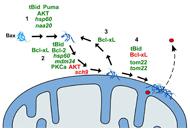 Yeast as a tool to decipher the molecular mechanisms underlying the functions of Bcl-2 familyOpen AccessReviewThe budding yeast
Yeast as a tool to decipher the molecular mechanisms underlying the functions of Bcl-2 familyOpen AccessReviewThe budding yeastSaccharomyces cerevisiae , a favorite model in biology, does not contain any protein of the Bcl-2 family. From initial experiments with two-hybrid systems to the heterologous expression of human Bcl-2 family members, and the characterization of several forms of yeast programmed cell death, ...Stéphen ManonPublished: April 02, 2022 Explor Target Antitumor Ther. DOI: 10.37349/etat.2022.00076 Polyester materials for mRNA deliveryOpen AccessReviewMessenger RNA (mRNA) has recently made important progress in clinical implementation, offering a promising therapeutic option for infectious disease and cancer. However, the nature of mRNA molecules...Wang Chen ... Dandan ZhuPublished: March 11, 2022 Explor Target Antitumor Ther. DOI: 10.37349/etat.2022.00075
Polyester materials for mRNA deliveryOpen AccessReviewMessenger RNA (mRNA) has recently made important progress in clinical implementation, offering a promising therapeutic option for infectious disease and cancer. However, the nature of mRNA molecules...Wang Chen ... Dandan ZhuPublished: March 11, 2022 Explor Target Antitumor Ther. DOI: 10.37349/etat.2022.00075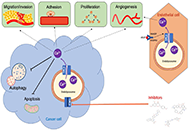 Targeting the two-pore channel 2 in cancer progression and metastasisOpen AccessReviewThe importance of Ca2+ signaling, and particularly Ca2+ channels, in key events of cancer cell function such as proliferation, metastasis, autophagy and angiogenesis, has recently begun to be appreciated. Of particular note are two-pore channels (TPCs), a group of recently identified Ca2+-channels, located within the endolysosomal system. ...Kathryn A. Skelding ... Lisa F. LinczPublished: February 28, 2022 Explor Target Antitumor Ther. DOI: 10.37349/etat.2022.00072
Targeting the two-pore channel 2 in cancer progression and metastasisOpen AccessReviewThe importance of Ca2+ signaling, and particularly Ca2+ channels, in key events of cancer cell function such as proliferation, metastasis, autophagy and angiogenesis, has recently begun to be appreciated. Of particular note are two-pore channels (TPCs), a group of recently identified Ca2+-channels, located within the endolysosomal system. ...Kathryn A. Skelding ... Lisa F. LinczPublished: February 28, 2022 Explor Target Antitumor Ther. DOI: 10.37349/etat.2022.00072 Liver venous deprivation for resection of advanced hilar cholangiocarcinoma—a case report and review of the literatureOpen AccessCase ReportHilar cholangiocarcinoma is a rare primary malignancy associated with a dismal prognosis. Currently, complete extended right or left-sided hepatectomy is the primary curative therapy. Achieving a ne...Radoslava Stoyanova ... Alexander KlausPublished: February 28, 2022 Explor Target Antitumor Ther. DOI: 10.37349/etat.2022.00073
Liver venous deprivation for resection of advanced hilar cholangiocarcinoma—a case report and review of the literatureOpen AccessCase ReportHilar cholangiocarcinoma is a rare primary malignancy associated with a dismal prognosis. Currently, complete extended right or left-sided hepatectomy is the primary curative therapy. Achieving a ne...Radoslava Stoyanova ... Alexander KlausPublished: February 28, 2022 Explor Target Antitumor Ther. DOI: 10.37349/etat.2022.00073 Collateral-resistance to estrogen and HER-activated growth is associated with modified AKT, ERα, and cell-cycle signaling in a breast cancer modelOpen AccessOriginal ArticleAim: A model of progressively endocrine-resistant breast cancer was investigated to identify changes that can occur in signaling pathways after endocrine manipulation. Methods: The MCF7 breas...Kate M. Moore ... Simon P. LangdonPublished: February 28, 2022 Explor Target Antitumor Ther. DOI: 10.37349/etat.2022.00074
Collateral-resistance to estrogen and HER-activated growth is associated with modified AKT, ERα, and cell-cycle signaling in a breast cancer modelOpen AccessOriginal ArticleAim: A model of progressively endocrine-resistant breast cancer was investigated to identify changes that can occur in signaling pathways after endocrine manipulation. Methods: The MCF7 breas...Kate M. Moore ... Simon P. LangdonPublished: February 28, 2022 Explor Target Antitumor Ther. DOI: 10.37349/etat.2022.00074 New antibody-drug conjugates (ADCs) in breast cancer—an overview of ADCs recently approved and in later stages of developmentOpen AccessReviewAntibody-drug conjugates (ADCs) have changed the treatment of breast cancer (BC) in more recent years. BC is a heterogenous group of malignancies with a broad range of histopathological characterist...Kira-Lee Koster ... Markus JoergerPublished: February 24, 2022 Explor Target Antitumor Ther. DOI: 10.37349/etat.2022.00069
New antibody-drug conjugates (ADCs) in breast cancer—an overview of ADCs recently approved and in later stages of developmentOpen AccessReviewAntibody-drug conjugates (ADCs) have changed the treatment of breast cancer (BC) in more recent years. BC is a heterogenous group of malignancies with a broad range of histopathological characterist...Kira-Lee Koster ... Markus JoergerPublished: February 24, 2022 Explor Target Antitumor Ther. DOI: 10.37349/etat.2022.00069 B-cell receptor dependent phagocytosis and presentation of particulate antigen by chronic lymphocytic leukemia cellsOpen AccessOriginal ArticleAim: T-helper cells could play an important role in the pathogenesis of chronic lymphocytic leukemia (CLL), a common B-cell neoplasm. Although CLL cells can present soluble antigens targeted from...Annabel R. Minton ... Graham PackhamPublished: February 25, 2022 Explor Target Antitumor Ther. DOI: 10.37349/etat.2022.00070
B-cell receptor dependent phagocytosis and presentation of particulate antigen by chronic lymphocytic leukemia cellsOpen AccessOriginal ArticleAim: T-helper cells could play an important role in the pathogenesis of chronic lymphocytic leukemia (CLL), a common B-cell neoplasm. Although CLL cells can present soluble antigens targeted from...Annabel R. Minton ... Graham PackhamPublished: February 25, 2022 Explor Target Antitumor Ther. DOI: 10.37349/etat.2022.00070 Engineered phosphorus dendrimers as powerful non-viral nanoplatforms for gene delivery: a great hope for the future of cancer therapeuticsOpen AccessReviewDuring the past two decades, tremendous progress has been made in the dendrimer-based delivery of therapeutic molecules including, for instance, small molecules, macromolecules, and genes. This revi...Serge Mignani ... Jean-Pierre MajoralPublished: February 25, 2022 Explor Target Antitumor Ther. DOI: 10.37349/etat.2022.00071
Engineered phosphorus dendrimers as powerful non-viral nanoplatforms for gene delivery: a great hope for the future of cancer therapeuticsOpen AccessReviewDuring the past two decades, tremendous progress has been made in the dendrimer-based delivery of therapeutic molecules including, for instance, small molecules, macromolecules, and genes. This revi...Serge Mignani ... Jean-Pierre MajoralPublished: February 25, 2022 Explor Target Antitumor Ther. DOI: 10.37349/etat.2022.00071 Bcl-2-like protein-10 increases aggressive features of melanoma cellsOpen AccessOriginal ArticleAim: B-cell lymphoma-2 (Bcl-2)-like protein-10 (Bcl2L10) is the less studied member of Bcl-2 family proteins, with the controversial role in different cancer histotypes. Very recently, Bcl2L10 ex...Donatella Del Bufalo ... Simona D’AguannoPublished: January 30, 2022 Explor Target Antitumor Ther. DOI: 10.37349/etat.2022.00068
Bcl-2-like protein-10 increases aggressive features of melanoma cellsOpen AccessOriginal ArticleAim: B-cell lymphoma-2 (Bcl-2)-like protein-10 (Bcl2L10) is the less studied member of Bcl-2 family proteins, with the controversial role in different cancer histotypes. Very recently, Bcl2L10 ex...Donatella Del Bufalo ... Simona D’AguannoPublished: January 30, 2022 Explor Target Antitumor Ther. DOI: 10.37349/etat.2022.00068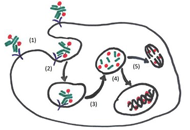 Antibody-drug conjugate therapies in multiple myeloma—what’s next on the horizon?Open AccessReviewTargeted immunotherapy has arisen over the past decade to the forefront of cancer care. Notably, targeted therapies such as antibody-drug conjugates (ADCs) are becoming more recognized for a novel a...Monique Hartley-Brown, Paul RichardsonPublished: January 14, 2022 Explor Target Antitumor Ther. DOI: 10.37349/etat.2022.00067
Antibody-drug conjugate therapies in multiple myeloma—what’s next on the horizon?Open AccessReviewTargeted immunotherapy has arisen over the past decade to the forefront of cancer care. Notably, targeted therapies such as antibody-drug conjugates (ADCs) are becoming more recognized for a novel a...Monique Hartley-Brown, Paul RichardsonPublished: January 14, 2022 Explor Target Antitumor Ther. DOI: 10.37349/etat.2022.00067 Interface between obesity with dysfunctional metabolism and inflammation, and the triple-negative breast cancer in African American womenOpen AccessReviewObesity has dramatically increased over the past fifty years. In the last decade, it has been noted that augmented body mass, metabolic abnormalities, and the relevant “obese”...Katarzyna RygielPublished: December 31, 2021 Explor Target Antitumor Ther. DOI: 10.37349/etat.2021.00066
Interface between obesity with dysfunctional metabolism and inflammation, and the triple-negative breast cancer in African American womenOpen AccessReviewObesity has dramatically increased over the past fifty years. In the last decade, it has been noted that augmented body mass, metabolic abnormalities, and the relevant “obese”...Katarzyna RygielPublished: December 31, 2021 Explor Target Antitumor Ther. DOI: 10.37349/etat.2021.00066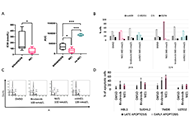 The bromodomain and extra-terminal domain degrader MZ1 exhibits preclinical anti-tumoral activity in diffuse large B-cell lymphoma of the activated B cell-like typeOpen AccessOriginal ArticleAim: Bromodomain and extra-terminal domain (BET) proteins are epigenetic readers that play a fundamental role in transcription regulation. Preclinical and early clinical evidence sustain BET targ...Chiara Tarantelli ... Francesco BertoniPublished: December 31, 2021 Explor Target Antitumor Ther. DOI: 10.37349/etat.2021.00065
The bromodomain and extra-terminal domain degrader MZ1 exhibits preclinical anti-tumoral activity in diffuse large B-cell lymphoma of the activated B cell-like typeOpen AccessOriginal ArticleAim: Bromodomain and extra-terminal domain (BET) proteins are epigenetic readers that play a fundamental role in transcription regulation. Preclinical and early clinical evidence sustain BET targ...Chiara Tarantelli ... Francesco BertoniPublished: December 31, 2021 Explor Target Antitumor Ther. DOI: 10.37349/etat.2021.00065 Physical characteristics comparison between maytansinoid-based and auristatin-based antibody-drug conjugatesOpen AccessOriginal ArticleAim: Direct analytical comparison of two major drug-linkers in the antibody-drug conjugate (ADC) field was conducted. Methods: Four different analytical methods [AlogP calculation, reverse phase (RP) high-performance liquid chromatography (HPLC; RP-HPLC), size exclusion chromatography HPLC (SEC-HPLC), and differential scanning calorimetry (DSC)] were tested for this comparison....Tomohiro Fujii ... Yutaka MatsudaPublished: December 31, 2021 Explor Target Antitumor Ther. DOI: 10.37349/etat.2021.00064
Physical characteristics comparison between maytansinoid-based and auristatin-based antibody-drug conjugatesOpen AccessOriginal ArticleAim: Direct analytical comparison of two major drug-linkers in the antibody-drug conjugate (ADC) field was conducted. Methods: Four different analytical methods [AlogP calculation, reverse phase (RP) high-performance liquid chromatography (HPLC; RP-HPLC), size exclusion chromatography HPLC (SEC-HPLC), and differential scanning calorimetry (DSC)] were tested for this comparison....Tomohiro Fujii ... Yutaka MatsudaPublished: December 31, 2021 Explor Target Antitumor Ther. DOI: 10.37349/etat.2021.00064 Alterations in the Ca2+ toolkit in oesophageal adenocarcinomaOpen AccessOriginal ArticleAim: To investigate alterations in transcription of genes, encoding Ca2+ toolkit proteins, in oesophageal adenocarcinoma (OAC) and to assess associations between gene expression, tumor ...Alana L. Cutliffe ... John J. MackrillPublished: December 31, 2021 Explor Target Antitumor Ther. DOI: 10.37349/etat.2021.00063
Alterations in the Ca2+ toolkit in oesophageal adenocarcinomaOpen AccessOriginal ArticleAim: To investigate alterations in transcription of genes, encoding Ca2+ toolkit proteins, in oesophageal adenocarcinoma (OAC) and to assess associations between gene expression, tumor ...Alana L. Cutliffe ... John J. MackrillPublished: December 31, 2021 Explor Target Antitumor Ther. DOI: 10.37349/etat.2021.00063 Immunotherapy in head and neck squamous cell carcinoma and rare head and neck malignanciesOpen AccessReviewThe dismal prognosis of recurrent/metastatic (R/M) head and neck squamous cell carcinoma (HNSCC) prompted recent advances in the field of therapeutic approaches beyond cytotoxic cancer therapy. In r...Stefano Cavalieri ... Laura D. LocatiPublished: December 31, 2021 Explor Target Antitumor Ther. DOI: 10.37349/etat.2021.00062
Immunotherapy in head and neck squamous cell carcinoma and rare head and neck malignanciesOpen AccessReviewThe dismal prognosis of recurrent/metastatic (R/M) head and neck squamous cell carcinoma (HNSCC) prompted recent advances in the field of therapeutic approaches beyond cytotoxic cancer therapy. In r...Stefano Cavalieri ... Laura D. LocatiPublished: December 31, 2021 Explor Target Antitumor Ther. DOI: 10.37349/etat.2021.00062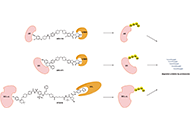 The clinical advances of proteolysis targeting chimeras in oncologyOpen AccessReviewProteolysis targeting chimeras (PROTACs) are a class of small molecules designed to target proteins for degradation. Their novel and unique modes of action provide PROTACs with the potential for the...Hao Xie ... Jason B. FlemingPublished: December 31, 2021 Explor Target Antitumor Ther. DOI: 10.37349/etat.2021.00061
The clinical advances of proteolysis targeting chimeras in oncologyOpen AccessReviewProteolysis targeting chimeras (PROTACs) are a class of small molecules designed to target proteins for degradation. Their novel and unique modes of action provide PROTACs with the potential for the...Hao Xie ... Jason B. FlemingPublished: December 31, 2021 Explor Target Antitumor Ther. DOI: 10.37349/etat.2021.00061 Proteolysis-targeting chimeras and their implications in breast cancerOpen AccessReviewBreast cancer (BC) is a highly heterogeneous neoplasm of the mammary tissue, causing the deaths of a large number of women worldwide. Nearly 70% and 20% of BC cases are estro...Angeles C. Tecalco-Cruz ... Alberto Rojas-OchoaPublished: December 31, 2021 Explor Target Antitumor Ther. DOI: 10.37349/etat.2021.00060
Proteolysis-targeting chimeras and their implications in breast cancerOpen AccessReviewBreast cancer (BC) is a highly heterogeneous neoplasm of the mammary tissue, causing the deaths of a large number of women worldwide. Nearly 70% and 20% of BC cases are estro...Angeles C. Tecalco-Cruz ... Alberto Rojas-OchoaPublished: December 31, 2021 Explor Target Antitumor Ther. DOI: 10.37349/etat.2021.00060 A review of molecularly targeted therapy in biliary tract carcinoma: what is the next step?Open AccessReviewPatients with unresectable biliary tract carcinomas (BTCs) have a poor prognosis with a median overall survival of fewer than 12 months following systemic chemotherapy. In recent years, the identifi...Giacomo Aimar ... Massimo Di MaioPublished: October 31, 2021 Explor Target Antitumor Ther. DOI: 10.37349/etat.2021.00056
A review of molecularly targeted therapy in biliary tract carcinoma: what is the next step?Open AccessReviewPatients with unresectable biliary tract carcinomas (BTCs) have a poor prognosis with a median overall survival of fewer than 12 months following systemic chemotherapy. In recent years, the identifi...Giacomo Aimar ... Massimo Di MaioPublished: October 31, 2021 Explor Target Antitumor Ther. DOI: 10.37349/etat.2021.00056 Targeted therapy of multiple myelomaOpen AccessReviewMultiple myeloma (MM) is a malignant proliferative disease of monoclonal plasma cells (PCs) and is characterized by uncontrolled proliferation of PCs and excessive production of specific types of im...Shan Zhou, Renxi WangPublished: October 31, 2021 Explor Target Antitumor Ther. DOI: 10.37349/etat.2021.00057
Targeted therapy of multiple myelomaOpen AccessReviewMultiple myeloma (MM) is a malignant proliferative disease of monoclonal plasma cells (PCs) and is characterized by uncontrolled proliferation of PCs and excessive production of specific types of im...Shan Zhou, Renxi WangPublished: October 31, 2021 Explor Target Antitumor Ther. DOI: 10.37349/etat.2021.00057 Performing oncological procedures during COVID-19 outbreak: a picture from an Italian cancer centerOpen AccessOriginal ArticleAim: Since SARS-CoV-2 infection rapidly spread around the world, Italy has quickly become one of the most affected countries. Healthcare systems introduced strict infection control measures to ensu...Maristella Bungaro ... Silvia NovelloPublished: October 31, 2021 Explor Target Antitumor Ther. DOI: 10.37349/etat.2021.00058
Performing oncological procedures during COVID-19 outbreak: a picture from an Italian cancer centerOpen AccessOriginal ArticleAim: Since SARS-CoV-2 infection rapidly spread around the world, Italy has quickly become one of the most affected countries. Healthcare systems introduced strict infection control measures to ensu...Maristella Bungaro ... Silvia NovelloPublished: October 31, 2021 Explor Target Antitumor Ther. DOI: 10.37349/etat.2021.00058 Clinical aspect, pathogenesis and therapy options of alopecia induced by hormonal therapy for breast cancerOpen AccessReviewAdjuvant hormonal therapy is one of the most important treatments of hormone-receptor-positive breast cancer and includes selective estrogen receptor modulators, aromatase inhibitors, and luteinizin...Alfredo Rossi ... Marta CarlesimoPublished: October 31, 2021 Explor Target Antitumor Ther. DOI: 10.37349/etat.2021.00059
Clinical aspect, pathogenesis and therapy options of alopecia induced by hormonal therapy for breast cancerOpen AccessReviewAdjuvant hormonal therapy is one of the most important treatments of hormone-receptor-positive breast cancer and includes selective estrogen receptor modulators, aromatase inhibitors, and luteinizin...Alfredo Rossi ... Marta CarlesimoPublished: October 31, 2021 Explor Target Antitumor Ther. DOI: 10.37349/etat.2021.00059 Current options and future directions of systemic therapy for advanced biliary tract cancerOpen AccessReviewBiliary tract cancers (BTCs) are aggressive tumors arising from different portions of the biliary tree and classified according to the anatomical location in intrahepatic (i) cholangiocarcinoma (CCA...Maria Giuseppina Prete ... Lorenza RimassaPublished: October 31, 2021 Explor Target Antitumor Ther. DOI: 10.37349/etat.2021.00054
Current options and future directions of systemic therapy for advanced biliary tract cancerOpen AccessReviewBiliary tract cancers (BTCs) are aggressive tumors arising from different portions of the biliary tree and classified according to the anatomical location in intrahepatic (i) cholangiocarcinoma (CCA...Maria Giuseppina Prete ... Lorenza RimassaPublished: October 31, 2021 Explor Target Antitumor Ther. DOI: 10.37349/etat.2021.00054 Targeting protein kinase CK2 in the treatment of cholangiocarcinomaOpen AccessReviewCholangiocarcinoma (CCA) is a disease with a very poor prognosis and limited treatment options. Although targeted therapies directed towards specific mutations found in CCA are becoming available an...Padma-Sheela Jayaraman, Kevin GastonPublished: October 31, 2021 Explor Target Antitumor Ther. DOI: 10.37349/etat.2021.00055
Targeting protein kinase CK2 in the treatment of cholangiocarcinomaOpen AccessReviewCholangiocarcinoma (CCA) is a disease with a very poor prognosis and limited treatment options. Although targeted therapies directed towards specific mutations found in CCA are becoming available an...Padma-Sheela Jayaraman, Kevin GastonPublished: October 31, 2021 Explor Target Antitumor Ther. DOI: 10.37349/etat.2021.00055 A novel strategy for treating cancer: understanding the role of Ca2+ signaling from nociceptive TRP channels in regulating cancer progressionOpen AccessReviewCancer is an aging-associated disease and caused by genomic instability that is driven by the accumulation of mutations and epimutations in the aging process. Although Ca2+ signaling, re...Wen-Li Hsu ... Etsuro ItoPublished: October 31, 2021 Explor Target Antitumor Ther. DOI: 10.37349/etat.2021.00053
A novel strategy for treating cancer: understanding the role of Ca2+ signaling from nociceptive TRP channels in regulating cancer progressionOpen AccessReviewCancer is an aging-associated disease and caused by genomic instability that is driven by the accumulation of mutations and epimutations in the aging process. Although Ca2+ signaling, re...Wen-Li Hsu ... Etsuro ItoPublished: October 31, 2021 Explor Target Antitumor Ther. DOI: 10.37349/etat.2021.00053 Role of estrogen receptor coregulators in endocrine resistant breast cancerOpen AccessReviewBreast cancer (BC) is the most ubiquitous cancer in women. Approximately 70–80% of BC diagnoses are positive for estrogen receptor (ER) alpha (ERα). The steroid ho...Kristin A. Altwegg, Ratna K. VadlamudiPublished: August 30, 2021 Explor Target Antitumor Ther. DOI: 10.37349/etat.2021.00052
Role of estrogen receptor coregulators in endocrine resistant breast cancerOpen AccessReviewBreast cancer (BC) is the most ubiquitous cancer in women. Approximately 70–80% of BC diagnoses are positive for estrogen receptor (ER) alpha (ERα). The steroid ho...Kristin A. Altwegg, Ratna K. VadlamudiPublished: August 30, 2021 Explor Target Antitumor Ther. DOI: 10.37349/etat.2021.00052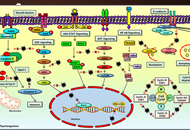 The promising potential of piperlongumine as an emerging therapeutics for cancerOpen AccessReviewIn spite of the immense advancement in the diagnostic and treatment modalities, cancer continues to be one of the leading causes of mortality across the globe, responsible for the death of around 10...Dey Parama ... Ajaikumar B. KunnumakkaraPublished: August 30, 2021 Explor Target Antitumor Ther. DOI: 10.37349/etat.2021.00049
The promising potential of piperlongumine as an emerging therapeutics for cancerOpen AccessReviewIn spite of the immense advancement in the diagnostic and treatment modalities, cancer continues to be one of the leading causes of mortality across the globe, responsible for the death of around 10...Dey Parama ... Ajaikumar B. KunnumakkaraPublished: August 30, 2021 Explor Target Antitumor Ther. DOI: 10.37349/etat.2021.00049 The evolving role and utility of off-label drug use in multiple myelomaOpen AccessReviewThe treatment landscape for multiple myeloma (MM) has dramatically changed over the last three decades, moving from no US Food and Drug Administration approvals and two active drug classes to over 1...James H Stoeckle ... Gareth J MorganPublished: August 30, 2021 Explor Target Antitumor Ther. DOI: 10.37349/etat.2021.00050
The evolving role and utility of off-label drug use in multiple myelomaOpen AccessReviewThe treatment landscape for multiple myeloma (MM) has dramatically changed over the last three decades, moving from no US Food and Drug Administration approvals and two active drug classes to over 1...James H Stoeckle ... Gareth J MorganPublished: August 30, 2021 Explor Target Antitumor Ther. DOI: 10.37349/etat.2021.00050 Does the gut microbiome environment influence response to systemic breast cancer treatment?Open AccessReviewThe gut microbiome is a novel player in the pathogenesis and treatment of breast cancer. The term “microbiome” is used to describe the diverse community of micro-organisms exis...Eilidh Bruce ... Beatrix ElsbergerPublished: August 30, 2021 Explor Target Antitumor Ther. DOI: 10.37349/etat.2021.00051
Does the gut microbiome environment influence response to systemic breast cancer treatment?Open AccessReviewThe gut microbiome is a novel player in the pathogenesis and treatment of breast cancer. The term “microbiome” is used to describe the diverse community of micro-organisms exis...Eilidh Bruce ... Beatrix ElsbergerPublished: August 30, 2021 Explor Target Antitumor Ther. DOI: 10.37349/etat.2021.00051 The effect of iron on the expression levels of calcium related gene in cisplatin resistant epithelial ovarian cancer cellsOpen AccessOriginal ArticleAim: Anticancer drugs (chemotherapeutics) used in cancer treatment (chemotherapy) lead to drug resistance. This study was conducted to investigate the possible effect of iron on calcium homeostasis...Bahire Kucukkaya ... Leman YalcintepePublished: August 30, 2021 Explor Target Antitumor Ther. DOI: 10.37349/etat.2021.00048
The effect of iron on the expression levels of calcium related gene in cisplatin resistant epithelial ovarian cancer cellsOpen AccessOriginal ArticleAim: Anticancer drugs (chemotherapeutics) used in cancer treatment (chemotherapy) lead to drug resistance. This study was conducted to investigate the possible effect of iron on calcium homeostasis...Bahire Kucukkaya ... Leman YalcintepePublished: August 30, 2021 Explor Target Antitumor Ther. DOI: 10.37349/etat.2021.00048 Targeting cytoskeletal phosphorylation in cancerOpen AccessReviewPhosphorylation of cytoskeletal proteins regulates the dynamics of polymerization, stability, and disassembly of the different types of cytoskeletal polymers. These control the ability of cells to m...Clara Llorente-González ... Miguel Vicente-ManzanaresPublished: June 28, 2021 Explor Target Antitumor Ther. DOI: 10.37349/etat.2021.00047
Targeting cytoskeletal phosphorylation in cancerOpen AccessReviewPhosphorylation of cytoskeletal proteins regulates the dynamics of polymerization, stability, and disassembly of the different types of cytoskeletal polymers. These control the ability of cells to m...Clara Llorente-González ... Miguel Vicente-ManzanaresPublished: June 28, 2021 Explor Target Antitumor Ther. DOI: 10.37349/etat.2021.00047 Advances in the study of cancer metastasis and calcium signaling as potential therapeutic targetsOpen AccessReviewMetastasis is still the primary cause of cancer-related mortality. However, the underlying mechanisms of cancer metastasis are not yet fully understood. Currently, the epithelial-mesenchymal transit...Chaochu Cui ... Xianwei WangPublished: June 28, 2021 Explor Target Antitumor Ther. DOI: 10.37349/etat.2021.00046
Advances in the study of cancer metastasis and calcium signaling as potential therapeutic targetsOpen AccessReviewMetastasis is still the primary cause of cancer-related mortality. However, the underlying mechanisms of cancer metastasis are not yet fully understood. Currently, the epithelial-mesenchymal transit...Chaochu Cui ... Xianwei WangPublished: June 28, 2021 Explor Target Antitumor Ther. DOI: 10.37349/etat.2021.00046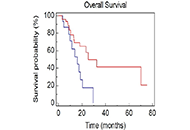 Tumor burden as possible biomarker of outcome in advanced NSCLC patients treated with immunotherapy: a single center, retrospective, real-world analysisOpen AccessOriginal ArticleAim: The role of tumor burden (TB) for patients with non-small cell lung cancer (NSCLC) receiving immunotherapy is still unknown. The aim of this analysis was to analyze the prognostic value of T...Edoardo Lenci ... Rossana BerardiPublished: June 28, 2021 Explor Target Antitumor Ther. DOI: 10.37349/etat.2021.00043
Tumor burden as possible biomarker of outcome in advanced NSCLC patients treated with immunotherapy: a single center, retrospective, real-world analysisOpen AccessOriginal ArticleAim: The role of tumor burden (TB) for patients with non-small cell lung cancer (NSCLC) receiving immunotherapy is still unknown. The aim of this analysis was to analyze the prognostic value of T...Edoardo Lenci ... Rossana BerardiPublished: June 28, 2021 Explor Target Antitumor Ther. DOI: 10.37349/etat.2021.00043 Lynch syndrome-associated lung cancer: pitfalls of an immunotherapy-based treatment strategy in an unusual tumor typeOpen AccessCase ReportLynch syndrome is a hereditary cancer predisposition syndrome caused by germline alterations in mismatch repair (MMR) genes leading to increased risk of colon cancer as well as other cancer types. N...Elena Maccaroni ... Rossana BerardiPublished: June 28, 2021 Explor Target Antitumor Ther. DOI: 10.37349/etat.2021.00044
Lynch syndrome-associated lung cancer: pitfalls of an immunotherapy-based treatment strategy in an unusual tumor typeOpen AccessCase ReportLynch syndrome is a hereditary cancer predisposition syndrome caused by germline alterations in mismatch repair (MMR) genes leading to increased risk of colon cancer as well as other cancer types. N...Elena Maccaroni ... Rossana BerardiPublished: June 28, 2021 Explor Target Antitumor Ther. DOI: 10.37349/etat.2021.00044 Overview of Ca2+ signaling in lung cancer progression and metastatic lung cancer with bone metastasisOpen AccessReviewIntracellular Ca2+ ions that are thought to be one of the most important second messengers for cellular signaling, have a substantial diversity of roles in regulating a plethora of funda...Manh Tien TranPublished: June 28, 2021 Explor Target Antitumor Ther. DOI: 10.37349/etat.2021.00045
Overview of Ca2+ signaling in lung cancer progression and metastatic lung cancer with bone metastasisOpen AccessReviewIntracellular Ca2+ ions that are thought to be one of the most important second messengers for cellular signaling, have a substantial diversity of roles in regulating a plethora of funda...Manh Tien TranPublished: June 28, 2021 Explor Target Antitumor Ther. DOI: 10.37349/etat.2021.00045 Understanding doxorubicin associated calcium remodeling during triple-negative breast cancer treatment: an in silico studyOpen AccessOriginal ArticleAim: Triple-negative breast cancer (TNBC) is the most malignant subtype of breast cancer with high heterogeneity, rapid progression, and paucity of treatment options. The most effective chemotherape...Garhima Arora ... Samrat ChatterjeePublished: April 30, 2021 Explor Target Antitumor Ther. DOI: 10.37349/etat.2021.00042
Understanding doxorubicin associated calcium remodeling during triple-negative breast cancer treatment: an in silico studyOpen AccessOriginal ArticleAim: Triple-negative breast cancer (TNBC) is the most malignant subtype of breast cancer with high heterogeneity, rapid progression, and paucity of treatment options. The most effective chemotherape...Garhima Arora ... Samrat ChatterjeePublished: April 30, 2021 Explor Target Antitumor Ther. DOI: 10.37349/etat.2021.00042 Nuclear factor erythroid 2-related factor 2 modulates HER4 receptor in ovarian cancer cells to influence their sensitivity to tyrosine kinase inhibitorsOpen AccessOriginal ArticleAim: Nuclear factor erythroid 2-related factor 2 (NRF2) is a key component in the cell’s response to oxidative and electrophilic stress and is a transcription factor regulating the expre...Ibrahim H. Kankia ... Yusuf Y. DeeniPublished: April 30, 2021 Explor Target Antitumor Ther. DOI: 10.37349/etat.2021.00040
Nuclear factor erythroid 2-related factor 2 modulates HER4 receptor in ovarian cancer cells to influence their sensitivity to tyrosine kinase inhibitorsOpen AccessOriginal ArticleAim: Nuclear factor erythroid 2-related factor 2 (NRF2) is a key component in the cell’s response to oxidative and electrophilic stress and is a transcription factor regulating the expre...Ibrahim H. Kankia ... Yusuf Y. DeeniPublished: April 30, 2021 Explor Target Antitumor Ther. DOI: 10.37349/etat.2021.00040 Analysis of DNA from liquid biopsy: new genetic biomarkers for cancer immunotherapy?Open AccessEditorialCarminia Maria Della Corte ... Floriana MorgilloPublished: April 30, 2021 Explor Target Antitumor Ther. DOI: 10.37349/etat.2021.00041
Analysis of DNA from liquid biopsy: new genetic biomarkers for cancer immunotherapy?Open AccessEditorialCarminia Maria Della Corte ... Floriana MorgilloPublished: April 30, 2021 Explor Target Antitumor Ther. DOI: 10.37349/etat.2021.00041 Liquid biopsy in NSCLC: a new challenge in radiation therapyOpen AccessReviewLung cancer is the most common cancer and the leading cause of cancer mortality worldwide. To date, tissue biopsy has been the gold standard for the diagnosis and the identification of specific mole...Annarita Perillo ... Ida Rosalia ScognamiglioPublished: April 30, 2021 Explor Target Antitumor Ther. DOI: 10.37349/etat.2021.00038
Liquid biopsy in NSCLC: a new challenge in radiation therapyOpen AccessReviewLung cancer is the most common cancer and the leading cause of cancer mortality worldwide. To date, tissue biopsy has been the gold standard for the diagnosis and the identification of specific mole...Annarita Perillo ... Ida Rosalia ScognamiglioPublished: April 30, 2021 Explor Target Antitumor Ther. DOI: 10.37349/etat.2021.00038 Gastrointestinal disorders as immune-related adverse eventsOpen AccessReviewImmune checkpoint inhibitors, such as cytotoxic T-lymphocyte antigen 4 inhibitors, programmed cell death 1 inhibitors and programmed cell death-ligand 1 inhibitors, have recently emerged as novel dr...Daniele Balducci ... Luca MaroniPublished: April 30, 2021 Explor Target Antitumor Ther. DOI: 10.37349/etat.2021.00039
Gastrointestinal disorders as immune-related adverse eventsOpen AccessReviewImmune checkpoint inhibitors, such as cytotoxic T-lymphocyte antigen 4 inhibitors, programmed cell death 1 inhibitors and programmed cell death-ligand 1 inhibitors, have recently emerged as novel dr...Daniele Balducci ... Luca MaroniPublished: April 30, 2021 Explor Target Antitumor Ther. DOI: 10.37349/etat.2021.00039 Targeting HER2 in breast cancer: new drugs and paradigms on the horizonOpen AccessReviewAbout 15–20% of all breast cancers (BCs) are defined human epidermal growth factor receptor 2 (HER2)-positive, based on the overexpression of HER2 protein and/or amplification...Paolo Tarantino ... Giuseppe CuriglianoPublished: April 30, 2021 Explor Target Antitumor Ther. DOI: 10.37349/etat.2021.00037
Targeting HER2 in breast cancer: new drugs and paradigms on the horizonOpen AccessReviewAbout 15–20% of all breast cancers (BCs) are defined human epidermal growth factor receptor 2 (HER2)-positive, based on the overexpression of HER2 protein and/or amplification...Paolo Tarantino ... Giuseppe CuriglianoPublished: April 30, 2021 Explor Target Antitumor Ther. DOI: 10.37349/etat.2021.00037 Potential benefit of β-glucans as adjuvant therapy in immuno-oncology: a reviewOpen AccessReviewFungal compounds have long been used for centuries as food supplements. β-glucans have been identified as the most interesting molecules with beneficial effects in several chronic diseas...Valeria Cognigni ... Rossana BerardiPublished: April 30, 2021 Explor Target Antitumor Ther. DOI: 10.37349/etat.2021.00036
Potential benefit of β-glucans as adjuvant therapy in immuno-oncology: a reviewOpen AccessReviewFungal compounds have long been used for centuries as food supplements. β-glucans have been identified as the most interesting molecules with beneficial effects in several chronic diseas...Valeria Cognigni ... Rossana BerardiPublished: April 30, 2021 Explor Target Antitumor Ther. DOI: 10.37349/etat.2021.00036 Multi-omics tumor profiling technologies to develop precision medicine in multiple myelomaOpen AccessReviewMultiple myeloma (MM), the second most common hematologic cancer, is caused by accumulation of aberrant plasma cells in the bone marrow. Its molecular causes are not fully understood and its great h...Sara Ovejero, Jerome MoreauxPublished: February 28, 2021 Explor Target Antitumor Ther. DOI: 10.37349/etat.2021.00034
Multi-omics tumor profiling technologies to develop precision medicine in multiple myelomaOpen AccessReviewMultiple myeloma (MM), the second most common hematologic cancer, is caused by accumulation of aberrant plasma cells in the bone marrow. Its molecular causes are not fully understood and its great h...Sara Ovejero, Jerome MoreauxPublished: February 28, 2021 Explor Target Antitumor Ther. DOI: 10.37349/etat.2021.00034 Aptamers and antibodies: rivals or allies in cancer targeted therapy?Open AccessReviewThe goal of an efficacious cancer therapy is to specifically target diseased cells at high accuracy while sparing normal, healthy cells. Over the past three decades, immunotherapy, based on the use ...Lisa Agnello ... Laura CerchiaPublished: February 28, 2021 Explor Target Antitumor Ther. DOI: 10.37349/etat.2021.00035
Aptamers and antibodies: rivals or allies in cancer targeted therapy?Open AccessReviewThe goal of an efficacious cancer therapy is to specifically target diseased cells at high accuracy while sparing normal, healthy cells. Over the past three decades, immunotherapy, based on the use ...Lisa Agnello ... Laura CerchiaPublished: February 28, 2021 Explor Target Antitumor Ther. DOI: 10.37349/etat.2021.00035 Immunotherapy in gynecological cancersOpen AccessReviewImmunotherapy has changed the natural history of several malignancies that, a decade ago, had a very poor prognosis, such as lung cancer and melanoma. Consequently, many attempts have been done to e...Domenica Lorusso ... Giovanni ScambiaPublished: February 28, 2021 Explor Target Antitumor Ther. DOI: 10.37349/etat.2021.00033
Immunotherapy in gynecological cancersOpen AccessReviewImmunotherapy has changed the natural history of several malignancies that, a decade ago, had a very poor prognosis, such as lung cancer and melanoma. Consequently, many attempts have been done to e...Domenica Lorusso ... Giovanni ScambiaPublished: February 28, 2021 Explor Target Antitumor Ther. DOI: 10.37349/etat.2021.00033 Non-invasive detection of epithelial mesenchymal transition phenotype and metastatic dissemination of lung cancer by liquid biopsyOpen AccessReviewThe occurrence of phenotype switch from an epithelial to a mesenchymal cell state during the activation of the epithelial mesenchymal transition (EMT) program in cancer cells has been closely associ...Viviana De Rosa ... Francesca IommelliPublished: February 28, 2021 Explor Target Antitumor Ther. DOI: 10.37349/etat.2021.00032
Non-invasive detection of epithelial mesenchymal transition phenotype and metastatic dissemination of lung cancer by liquid biopsyOpen AccessReviewThe occurrence of phenotype switch from an epithelial to a mesenchymal cell state during the activation of the epithelial mesenchymal transition (EMT) program in cancer cells has been closely associ...Viviana De Rosa ... Francesca IommelliPublished: February 28, 2021 Explor Target Antitumor Ther. DOI: 10.37349/etat.2021.00032 Emerging role of pioneer transcription factors in targeted ERα positive breast cancerOpen AccessReviewTranscription factors (TFs) are modular protein groups that preferably bind to DNA sequences and guide genomic expression through transcription. Among these key regulators, “pioneer facto...Honey Pavithran, Ranjith KumavathPublished: February 28, 2021 Explor Target Antitumor Ther. DOI: 10.37349/etat.2021.00031
Emerging role of pioneer transcription factors in targeted ERα positive breast cancerOpen AccessReviewTranscription factors (TFs) are modular protein groups that preferably bind to DNA sequences and guide genomic expression through transcription. Among these key regulators, “pioneer facto...Honey Pavithran, Ranjith KumavathPublished: February 28, 2021 Explor Target Antitumor Ther. DOI: 10.37349/etat.2021.00031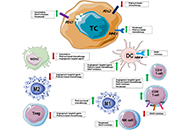 Old but gold: the role of drug combinations in improving response to immune check-point inhibitors in thoracic malignancies beyond NSCLCOpen AccessReviewThe introduction of immune checkpoint inhibitors (ICIs) in non-oncogene addicted non-small cell lung cancer (NSCLC) has revolutionized the treatment scenario and led to a meaningful improvement in p...Luca Cantini ... Rossana BerardiPublished: February 28, 2021 Explor Target Antitumor Ther. DOI: 10.37349/etat.2021.00030
Old but gold: the role of drug combinations in improving response to immune check-point inhibitors in thoracic malignancies beyond NSCLCOpen AccessReviewThe introduction of immune checkpoint inhibitors (ICIs) in non-oncogene addicted non-small cell lung cancer (NSCLC) has revolutionized the treatment scenario and led to a meaningful improvement in p...Luca Cantini ... Rossana BerardiPublished: February 28, 2021 Explor Target Antitumor Ther. DOI: 10.37349/etat.2021.00030 Is hyperprogressive disease a specific phenomenom of immunotherapy?Open AccessLetter to the EditorHyperprogressive disease (HPD) is a novel pattern of response during immunotherapy treatment. Several retrospective studies have evaluated its prevalence among various cancer types and, in particula...Marta Brambilla ... Mario OcchipintiPublished: December 28, 2020 Explor Target Antitumor Ther. DOI: 10.37349/etat.2020.00027
Is hyperprogressive disease a specific phenomenom of immunotherapy?Open AccessLetter to the EditorHyperprogressive disease (HPD) is a novel pattern of response during immunotherapy treatment. Several retrospective studies have evaluated its prevalence among various cancer types and, in particula...Marta Brambilla ... Mario OcchipintiPublished: December 28, 2020 Explor Target Antitumor Ther. DOI: 10.37349/etat.2020.00027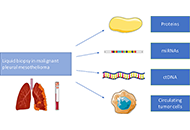 Circulating biomarkers in malignant pleural mesotheliomaOpen AccessReviewMalignant pleural mesothelioma (MPM) is an aggressive tumor strictly connected to asbestos exposure. Prognosis is dismal as diagnosis commonly occurs in advanced stage. Radiological screenings have ...Giuseppe Viscardi ... Giulia GalliPublished: December 28, 2020 Explor Target Antitumor Ther. DOI: 10.37349/etat.2020.00028
Circulating biomarkers in malignant pleural mesotheliomaOpen AccessReviewMalignant pleural mesothelioma (MPM) is an aggressive tumor strictly connected to asbestos exposure. Prognosis is dismal as diagnosis commonly occurs in advanced stage. Radiological screenings have ...Giuseppe Viscardi ... Giulia GalliPublished: December 28, 2020 Explor Target Antitumor Ther. DOI: 10.37349/etat.2020.00028 An overview of immune checkpoint inhibitors in breast cancerOpen AccessReviewAlthough breast cancer is not traditionally considered an immunogenic type of tumor, the combination of immunotherapy and chemotherapy has recently emerged as a novel treatment option in triple-nega...Federica Miglietta ... Nicla La VerdePublished: December 28, 2020 Explor Target Antitumor Ther. DOI: 10.37349/etat.2020.00029
An overview of immune checkpoint inhibitors in breast cancerOpen AccessReviewAlthough breast cancer is not traditionally considered an immunogenic type of tumor, the combination of immunotherapy and chemotherapy has recently emerged as a novel treatment option in triple-nega...Federica Miglietta ... Nicla La VerdePublished: December 28, 2020 Explor Target Antitumor Ther. DOI: 10.37349/etat.2020.00029 An overview of the potential anticancer properties of cardamoninOpen AccessReviewCancer is one of the leading causes of mortality, contributing to 9.6 million deaths globally in 2018 alone. Although several cancer treatments exist, they are often associated with severe side effe...Shanaya Ramchandani ... Manoj GargPublished: December 28, 2020 Explor Target Antitumor Ther. DOI: 10.37349/etat.2020.00026
An overview of the potential anticancer properties of cardamoninOpen AccessReviewCancer is one of the leading causes of mortality, contributing to 9.6 million deaths globally in 2018 alone. Although several cancer treatments exist, they are often associated with severe side effe...Shanaya Ramchandani ... Manoj GargPublished: December 28, 2020 Explor Target Antitumor Ther. DOI: 10.37349/etat.2020.00026 Targeting transcription factors in cancer drug discoveryOpen AccessReviewCancer drug discovery is currently dominated by clinical trials or clinical research. Several potential drug candidates have been brought into the pipeline of drug discovery after showing very promi...Partha MitraPublished: December 28, 2020 Explor Target Antitumor Ther. DOI: 10.37349/etat.2020.00025
Targeting transcription factors in cancer drug discoveryOpen AccessReviewCancer drug discovery is currently dominated by clinical trials or clinical research. Several potential drug candidates have been brought into the pipeline of drug discovery after showing very promi...Partha MitraPublished: December 28, 2020 Explor Target Antitumor Ther. DOI: 10.37349/etat.2020.00025 Use of liquid biopsy in monitoring therapeutic resistance in EGFR oncogene addicted NSCLCOpen AccessReviewLiquid biopsy has emerged as a minimally invasive alternative to tumor tissue analysis for the management of lung cancer patients, especially for epidermal growth factor receptor (EGFR) oncogene add...Marialucia Iacovino ... Francesca SparanoPublished: December 28, 2020 Explor Target Antitumor Ther. DOI: 10.37349/etat.2020.00024
Use of liquid biopsy in monitoring therapeutic resistance in EGFR oncogene addicted NSCLCOpen AccessReviewLiquid biopsy has emerged as a minimally invasive alternative to tumor tissue analysis for the management of lung cancer patients, especially for epidermal growth factor receptor (EGFR) oncogene add...Marialucia Iacovino ... Francesca SparanoPublished: December 28, 2020 Explor Target Antitumor Ther. DOI: 10.37349/etat.2020.00024 Novel approaches for the rational design of PROTAC linkersOpen AccessReviewProteolysis targeting chimeras (PROTACs) represent a promising class of hetero-bivalent molecules that facilitate ubiquitination of a target protein by simultaneously binding and bringing together b...Almaz Zagidullin ... Emil BulatovPublished: October 30, 2020 Explor Target Antitumor Ther. DOI: 10.37349/etat.2020.00023
Novel approaches for the rational design of PROTAC linkersOpen AccessReviewProteolysis targeting chimeras (PROTACs) represent a promising class of hetero-bivalent molecules that facilitate ubiquitination of a target protein by simultaneously binding and bringing together b...Almaz Zagidullin ... Emil BulatovPublished: October 30, 2020 Explor Target Antitumor Ther. DOI: 10.37349/etat.2020.00023 Potential of guggulsterone, a farnesoid X receptor antagonist, in the prevention and treatment of cancerOpen AccessReviewCancer is one of the most dreadful diseases in the world with a mortality of 9.6 million annually. Despite the advances in diagnosis and treatment during the last couple of decades, it still remains...Sosmitha Girisa ... Ajaikumar B. KunnumakkaraPublished: October 30, 2020 Explor Target Antitumor Ther. DOI: 10.37349/etat.2020.00019
Potential of guggulsterone, a farnesoid X receptor antagonist, in the prevention and treatment of cancerOpen AccessReviewCancer is one of the most dreadful diseases in the world with a mortality of 9.6 million annually. Despite the advances in diagnosis and treatment during the last couple of decades, it still remains...Sosmitha Girisa ... Ajaikumar B. KunnumakkaraPublished: October 30, 2020 Explor Target Antitumor Ther. DOI: 10.37349/etat.2020.00019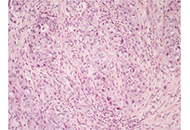 Pseudoprogression in lung cancer: a case reportOpen AccessCase ReportImmunotherapy dramatically changed the management of several malignancies including non-small cell lung cancer (NSCLC). Since immune checkpoint inhibitors have a different mechanism of action from c...Giulia Meoni ... Angela Stefania RibeccoPublished: October 30, 2020 Explor Target Antitumor Ther. DOI: 10.37349/etat.2020.00022
Pseudoprogression in lung cancer: a case reportOpen AccessCase ReportImmunotherapy dramatically changed the management of several malignancies including non-small cell lung cancer (NSCLC). Since immune checkpoint inhibitors have a different mechanism of action from c...Giulia Meoni ... Angela Stefania RibeccoPublished: October 30, 2020 Explor Target Antitumor Ther. DOI: 10.37349/etat.2020.00022 Downregulation of 15-hydroxyprostaglandin dehydrogenase during acquired tamoxifen resistance and association with poor prognosis in ERα-positive breast cancerOpen AccessOriginal ArticleAim: Tamoxifen (TAM) resistance remains a clinical issue in breast cancer. The authors previously reported that 15-hydroxyprostaglandin dehydrogenase (HPGD) was significantly downregulated in tamox...Milene Volpato ... Valerie SpeirsPublished: October 30, 2020 Explor Target Antitumor Ther. DOI: 10.37349/etat.2020.00021
Downregulation of 15-hydroxyprostaglandin dehydrogenase during acquired tamoxifen resistance and association with poor prognosis in ERα-positive breast cancerOpen AccessOriginal ArticleAim: Tamoxifen (TAM) resistance remains a clinical issue in breast cancer. The authors previously reported that 15-hydroxyprostaglandin dehydrogenase (HPGD) was significantly downregulated in tamox...Milene Volpato ... Valerie SpeirsPublished: October 30, 2020 Explor Target Antitumor Ther. DOI: 10.37349/etat.2020.00021 Current strategies for the design of PROTAC linkers: a critical reviewOpen AccessReviewPROteolysis TArgeting Chimeras (PROTACs) are heterobifunctional molecules consisting of two ligands; an “anchor” to bind to an E3 ubiquitin ligase and a “warhead” ...Robert I. Troup ... Matthias G. J. BaudPublished: October 30, 2020 Explor Target Antitumor Ther. DOI: 10.37349/etat.2020.00018
Current strategies for the design of PROTAC linkers: a critical reviewOpen AccessReviewPROteolysis TArgeting Chimeras (PROTACs) are heterobifunctional molecules consisting of two ligands; an “anchor” to bind to an E3 ubiquitin ligase and a “warhead” ...Robert I. Troup ... Matthias G. J. BaudPublished: October 30, 2020 Explor Target Antitumor Ther. DOI: 10.37349/etat.2020.00018 Diagnostic and prognostic role of liquid biopsy in non-small cell lung cancer: evaluation of circulating biomarkersOpen AccessReviewLung cancer is still one of the main causes of cancer-related death, together with prostate and colorectal cancers in males and breast and colorectal cancers in females. The prognosis for non-small ...Giovanni Vicidomini ... Mario SantiniPublished: October 30, 2020 Explor Target Antitumor Ther. DOI: 10.37349/etat.2020.00020
Diagnostic and prognostic role of liquid biopsy in non-small cell lung cancer: evaluation of circulating biomarkersOpen AccessReviewLung cancer is still one of the main causes of cancer-related death, together with prostate and colorectal cancers in males and breast and colorectal cancers in females. The prognosis for non-small ...Giovanni Vicidomini ... Mario SantiniPublished: October 30, 2020 Explor Target Antitumor Ther. DOI: 10.37349/etat.2020.00020 Possible applications of salvianolic acid B against different cancersOpen AccessReviewCancer is the second death causing disease worldwide after cardiovascular abnormalities. The difficulty in treating tumor cells with more precise targeted interventions and recurrence of cancer afte...Iram Shahzadi ... Reza MohammadinejadPublished: August 31, 2020 Explor Target Antitumor Ther. DOI: 10.37349/etat.2020.00014
Possible applications of salvianolic acid B against different cancersOpen AccessReviewCancer is the second death causing disease worldwide after cardiovascular abnormalities. The difficulty in treating tumor cells with more precise targeted interventions and recurrence of cancer afte...Iram Shahzadi ... Reza MohammadinejadPublished: August 31, 2020 Explor Target Antitumor Ther. DOI: 10.37349/etat.2020.00014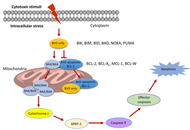 PROTACs are effective in addressing the platelet toxicity associated with BCL-XL inhibitorsOpen AccessReviewBCL-XL is an anti-apoptotic protein that plays an important role in tumorigenesis, metastasis, and intrinsic or therapy-induced cancer drug resistance. More recently, BCL-XL has also been identified...Peiyi Zhang ... Guangrong ZhengPublished: August 31, 2020 Explor Target Antitumor Ther. DOI: 10.37349/etat.2020.00017
PROTACs are effective in addressing the platelet toxicity associated with BCL-XL inhibitorsOpen AccessReviewBCL-XL is an anti-apoptotic protein that plays an important role in tumorigenesis, metastasis, and intrinsic or therapy-induced cancer drug resistance. More recently, BCL-XL has also been identified...Peiyi Zhang ... Guangrong ZhengPublished: August 31, 2020 Explor Target Antitumor Ther. DOI: 10.37349/etat.2020.00017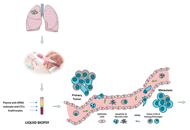 Future directions and management of liquid biopsy in non-small cell lung cancerOpen AccessReviewLung cancer represents the world’s most common cause of cancer death. In recent years, we moved from a generic therapeutic strategy to a personalized approach, based on the molecular char...Alessia Maria Cossu ... Marco BocchettiPublished: August 31, 2020 Explor Target Antitumor Ther. DOI: 10.37349/etat.2020.00015
Future directions and management of liquid biopsy in non-small cell lung cancerOpen AccessReviewLung cancer represents the world’s most common cause of cancer death. In recent years, we moved from a generic therapeutic strategy to a personalized approach, based on the molecular char...Alessia Maria Cossu ... Marco BocchettiPublished: August 31, 2020 Explor Target Antitumor Ther. DOI: 10.37349/etat.2020.00015 Circulating cancer stem cells: an interesting niche to exploreOpen AccessCommentaryFederica PapaccioPublished: August 31, 2020 Explor Target Antitumor Ther. DOI: 10.37349/etat.2020.00016
Circulating cancer stem cells: an interesting niche to exploreOpen AccessCommentaryFederica PapaccioPublished: August 31, 2020 Explor Target Antitumor Ther. DOI: 10.37349/etat.2020.00016 A brief overview of antitumoral actions of bruceine DOpen AccessReviewCancer remains the second leading cause of mortality globally. In combating cancer, conventional chemotherapy and/or radiotherapy are administered as first-line therapy. However, these are usually a...Zi Wayne Sin ... Manoj GargPublished: August 31, 2020 Explor Target Antitumor Ther. DOI: 10.37349/etat.2020.00013
A brief overview of antitumoral actions of bruceine DOpen AccessReviewCancer remains the second leading cause of mortality globally. In combating cancer, conventional chemotherapy and/or radiotherapy are administered as first-line therapy. However, these are usually a...Zi Wayne Sin ... Manoj GargPublished: August 31, 2020 Explor Target Antitumor Ther. DOI: 10.37349/etat.2020.00013 Development of PROTACs to address clinical limitations associated with BTK-targeted kinase inhibitorsOpen AccessReviewChronic lymphocytic leukemia is a common form of leukemia and is dependent on growth-promoting signaling via the B-cell receptor. The Bruton tyrosine kinase (BTK) is an important mediator of B-cell ...Rachael Arthur ... Graham PackhamPublished: June 29, 2020 Explor Target Antitumor Ther. DOI: 10.37349/etat.2020.00009
Development of PROTACs to address clinical limitations associated with BTK-targeted kinase inhibitorsOpen AccessReviewChronic lymphocytic leukemia is a common form of leukemia and is dependent on growth-promoting signaling via the B-cell receptor. The Bruton tyrosine kinase (BTK) is an important mediator of B-cell ...Rachael Arthur ... Graham PackhamPublished: June 29, 2020 Explor Target Antitumor Ther. DOI: 10.37349/etat.2020.00009 An overview of the anti-cancer actions of Tanshinones, derived from Salvia miltiorrhiza (Danshen)Open AccessReviewTanshinone is a herbal medicinal compound described in Chinese medicine, extracted from the roots of Salvia miltiorrhiza (Danshen). This family of compounds, including Tanshinone IIA and Tanshinone...Irum Naz ... Kwang Seok AhnPublished: June 29, 2020 Explor Target Antitumor Ther. DOI: 10.37349/etat.2020.00010
An overview of the anti-cancer actions of Tanshinones, derived from Salvia miltiorrhiza (Danshen)Open AccessReviewTanshinone is a herbal medicinal compound described in Chinese medicine, extracted from the roots of Salvia miltiorrhiza (Danshen). This family of compounds, including Tanshinone IIA and Tanshinone...Irum Naz ... Kwang Seok AhnPublished: June 29, 2020 Explor Target Antitumor Ther. DOI: 10.37349/etat.2020.00010 Role of liquid biopsy for thoracic cancers immunotherapyOpen AccessReviewImmunotherapy has shifted the therapeutic landscape in thoracic cancers. However, assessment of biomarkers for patient selection and disease monitoring remain challenging, especially considering the...Raimondo Di Liello ... Paloma Martín-MartorellPublished: June 29, 2020 Explor Target Antitumor Ther. DOI: 10.37349/etat.2020.00012
Role of liquid biopsy for thoracic cancers immunotherapyOpen AccessReviewImmunotherapy has shifted the therapeutic landscape in thoracic cancers. However, assessment of biomarkers for patient selection and disease monitoring remain challenging, especially considering the...Raimondo Di Liello ... Paloma Martín-MartorellPublished: June 29, 2020 Explor Target Antitumor Ther. DOI: 10.37349/etat.2020.00012 Integration of PARP-inhibitors in ovarian cancer therapyOpen AccessReviewPoly-ADP-ribose polymerase inhibitors (PARP-I) represent one of the most attractive and promising class of biological agents studied both in relapsed ovarian cancer (OC) and in the advanced setting....Antonella Pietragalla ... Gennaro DanielePublished: June 29, 2020 Explor Target Antitumor Ther. DOI: 10.37349/etat.2020.00011
Integration of PARP-inhibitors in ovarian cancer therapyOpen AccessReviewPoly-ADP-ribose polymerase inhibitors (PARP-I) represent one of the most attractive and promising class of biological agents studied both in relapsed ovarian cancer (OC) and in the advanced setting....Antonella Pietragalla ... Gennaro DanielePublished: June 29, 2020 Explor Target Antitumor Ther. DOI: 10.37349/etat.2020.00011 Multiple adverse drug reactions during all-trans retinoic acid treatment for acute promyelocytic leukemia: differentiation syndrome, bradycardia, intestinal necrosisOpen AccessCase ReportAll-trans retinoic acid (ATRA) induces complete remission in a high proportion of acute promyelocytic leukemia (APL). Nevertheless it is be associated with adverse drug reactions that might be life-...Valeria Ferla ... Nicola Stefano FracchiollaPublished: April 28, 2020 Explor Target Antitumor Ther. DOI: 10.37349/etat.2020.00007
Multiple adverse drug reactions during all-trans retinoic acid treatment for acute promyelocytic leukemia: differentiation syndrome, bradycardia, intestinal necrosisOpen AccessCase ReportAll-trans retinoic acid (ATRA) induces complete remission in a high proportion of acute promyelocytic leukemia (APL). Nevertheless it is be associated with adverse drug reactions that might be life-...Valeria Ferla ... Nicola Stefano FracchiollaPublished: April 28, 2020 Explor Target Antitumor Ther. DOI: 10.37349/etat.2020.00007 Angiogenesis and epidermal growth factor receptor inhibitors in non-small cell lung cancerOpen AccessReviewSeveral preclinical studies suggested a potential benefit from combined treatment with inhibitors of epidermal growth factor receptor (EGFR) and angiogenesis, both effective in patients with advance...Giuliano Palumbo ... Alessandro MorabitoPublished: April 28, 2020 Explor Target Antitumor Ther. DOI: 10.37349/etat.2020.00008
Angiogenesis and epidermal growth factor receptor inhibitors in non-small cell lung cancerOpen AccessReviewSeveral preclinical studies suggested a potential benefit from combined treatment with inhibitors of epidermal growth factor receptor (EGFR) and angiogenesis, both effective in patients with advance...Giuliano Palumbo ... Alessandro MorabitoPublished: April 28, 2020 Explor Target Antitumor Ther. DOI: 10.37349/etat.2020.00008 The impact of tumour pH on cancer progression: strategies for clinical interventionOpen AccessReviewDysregulation of cellular pH is frequent in solid tumours and provides potential opportunities for therapeutic intervention. The acidic microenvironment within a tumour can promote migration, invasi...Carol Ward ... Simon P LangdonPublished: April 28, 2020 Explor Target Antitumor Ther. DOI: 10.37349/etat.2020.00005
The impact of tumour pH on cancer progression: strategies for clinical interventionOpen AccessReviewDysregulation of cellular pH is frequent in solid tumours and provides potential opportunities for therapeutic intervention. The acidic microenvironment within a tumour can promote migration, invasi...Carol Ward ... Simon P LangdonPublished: April 28, 2020 Explor Target Antitumor Ther. DOI: 10.37349/etat.2020.00005 Implementation of an NGS panel for clinical practice in paraffin-embedded tissue samples from locally advanced and metastatic melanoma patientsOpen AccessOriginal ArticleAim: Single biomarker diagnostic test of BRAFV600 locus in metastatic melanoma is mandatory for treatment decision; however, multiple-gene based techniques, such as targeted next-generation sequenc ...Paola Castillo ... Cristina TeixidoPublished: April 28, 2020 Explor Target Antitumor Ther. DOI: 10.37349/etat.2020.00006
Implementation of an NGS panel for clinical practice in paraffin-embedded tissue samples from locally advanced and metastatic melanoma patientsOpen AccessOriginal ArticleAim: Single biomarker diagnostic test of BRAFV600 locus in metastatic melanoma is mandatory for treatment decision; however, multiple-gene based techniques, such as targeted next-generation sequenc ...Paola Castillo ... Cristina TeixidoPublished: April 28, 2020 Explor Target Antitumor Ther. DOI: 10.37349/etat.2020.00006 Exploration of Targeted Anti-tumor Therapy: a contribution to the development of targeted therapiesOpen AccessEditorialNicola Normanno, Graham PackhamPublished: February 29, 2020 Explor Target Antitumor Ther. DOI: 10.37349/etat.2020.00001
Exploration of Targeted Anti-tumor Therapy: a contribution to the development of targeted therapiesOpen AccessEditorialNicola Normanno, Graham PackhamPublished: February 29, 2020 Explor Target Antitumor Ther. DOI: 10.37349/etat.2020.00001 Targeted inhibition of mRNA translation initiation factors as a novel therapeutic strategy for mature B-cell neoplasmsOpen AccessReviewCancer development is frequently associated with dysregulation of mRNA translation to enhance both increased global protein synthesis and translation of specific mRNAs encoding oncoproteins. Thus, t...Joe Taylor ... Graham PackhamPublished: February 29, 2020 Explor Target Antitumor Ther. DOI: 10.37349/etat.2020.00002
Targeted inhibition of mRNA translation initiation factors as a novel therapeutic strategy for mature B-cell neoplasmsOpen AccessReviewCancer development is frequently associated with dysregulation of mRNA translation to enhance both increased global protein synthesis and translation of specific mRNAs encoding oncoproteins. Thus, t...Joe Taylor ... Graham PackhamPublished: February 29, 2020 Explor Target Antitumor Ther. DOI: 10.37349/etat.2020.00002 Inhibitors of the Fanconi anaemia pathway as potential antitumour agents for ovarian cancerOpen AccessReviewThe Fanconi anaemia (FA) pathway is an important mechanism for cellular DNA damage repair, which functions to remove toxic DNA interstrand crosslinks. This is particularly relevant in the context of...Sarah J Taylor ... Simon P LangdonPublished: February 29, 2020 Explor Target Antitumor Ther. DOI: 10.37349/etat.2020.00003
Inhibitors of the Fanconi anaemia pathway as potential antitumour agents for ovarian cancerOpen AccessReviewThe Fanconi anaemia (FA) pathway is an important mechanism for cellular DNA damage repair, which functions to remove toxic DNA interstrand crosslinks. This is particularly relevant in the context of...Sarah J Taylor ... Simon P LangdonPublished: February 29, 2020 Explor Target Antitumor Ther. DOI: 10.37349/etat.2020.00003 Colorectal cancer genomic biomarkers in the clinical management of patients with metastatic colorectal carcinomaOpen AccessReviewColorectal carcinoma (CRC) is an heterogeneous disease in which different genetic alterations play a role in its pathogenesis and progression and offer potential for therapeutic intervention. The re...Anna Maria Rachiglio ... Nicola NormannoPublished: February 29, 2020 Explor Target Antitumor Ther. DOI: 10.37349/etat.2020.00004
Colorectal cancer genomic biomarkers in the clinical management of patients with metastatic colorectal carcinomaOpen AccessReviewColorectal carcinoma (CRC) is an heterogeneous disease in which different genetic alterations play a role in its pathogenesis and progression and offer potential for therapeutic intervention. The re...Anna Maria Rachiglio ... Nicola NormannoPublished: February 29, 2020 Explor Target Antitumor Ther. DOI: 10.37349/etat.2020.00004 -